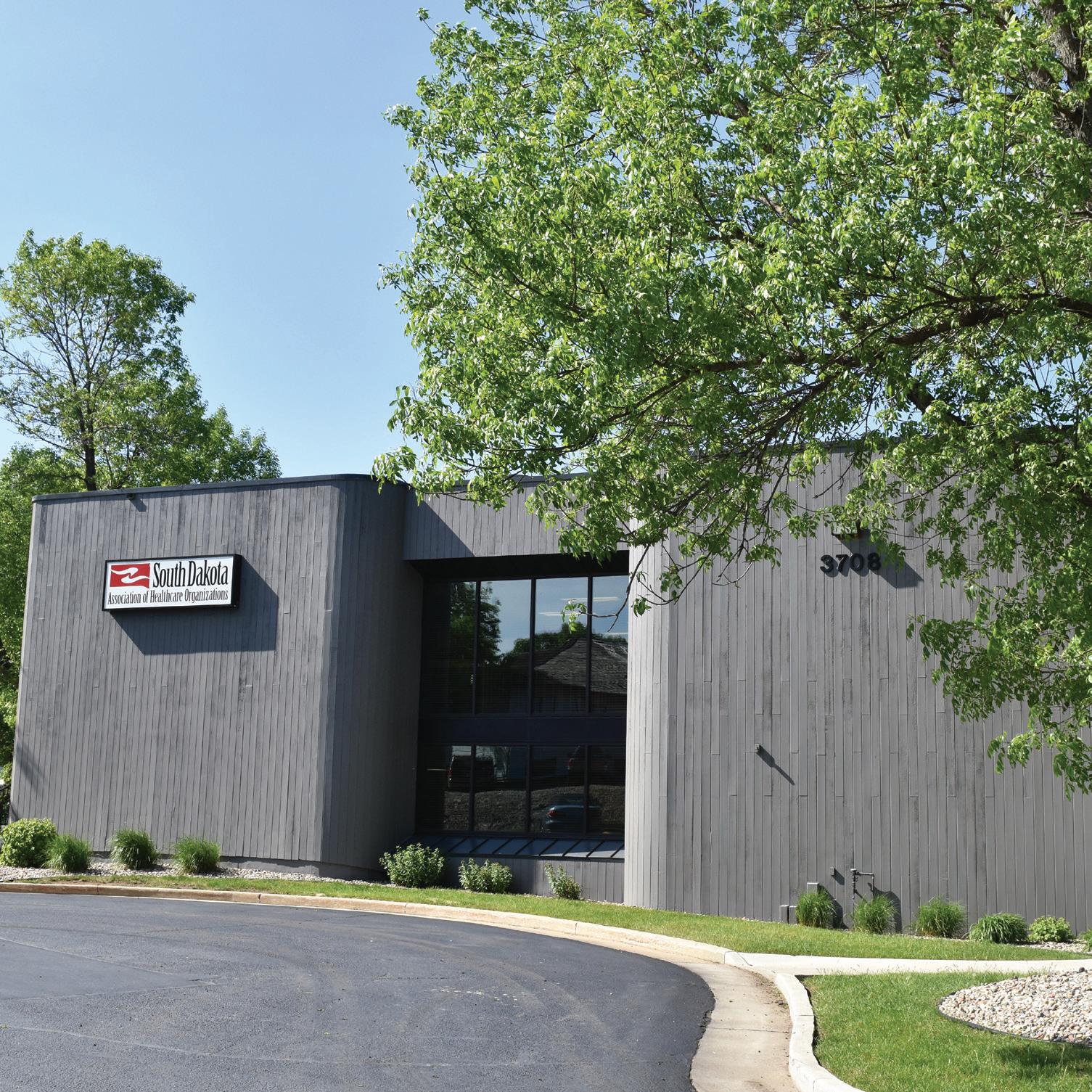
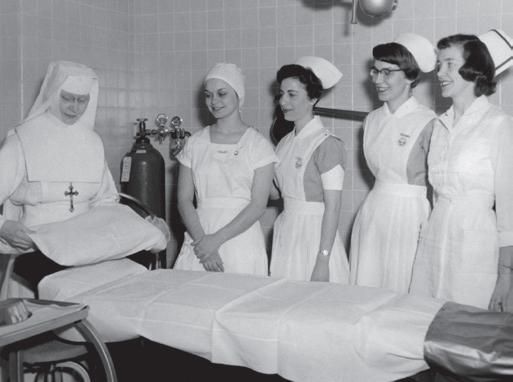
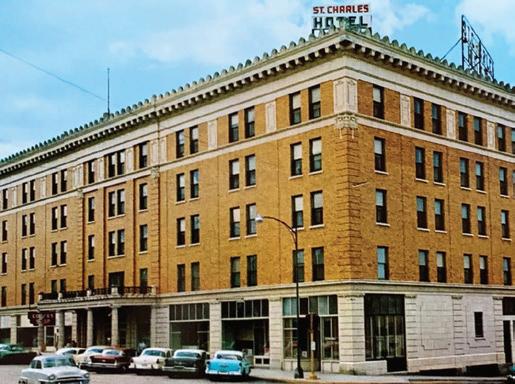
A CENTURY STRONG
HONORING OUR PAST, SHAPING OUR FUTURE

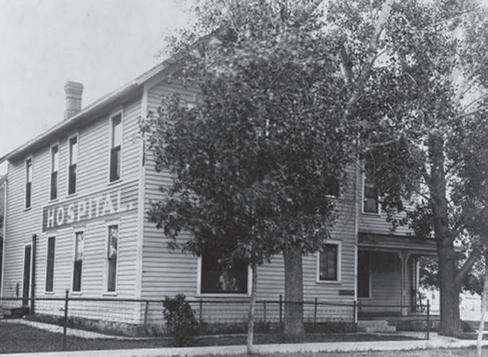



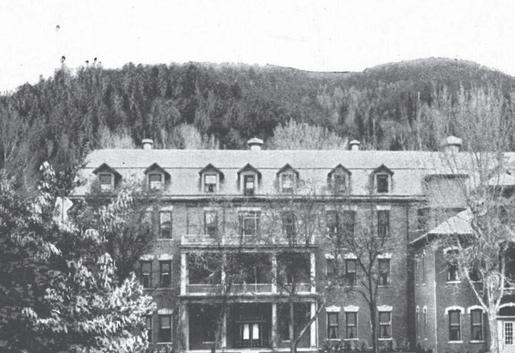











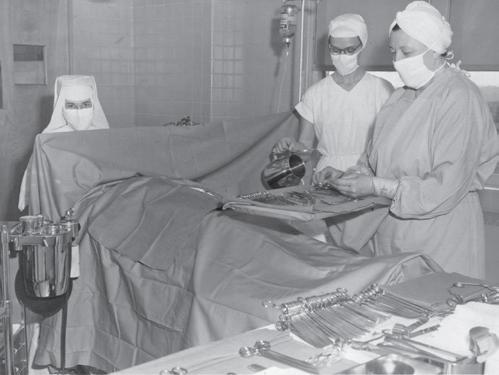
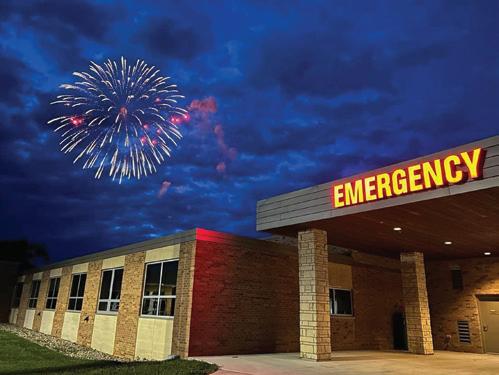
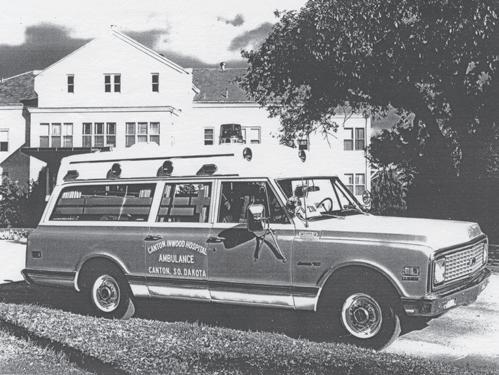
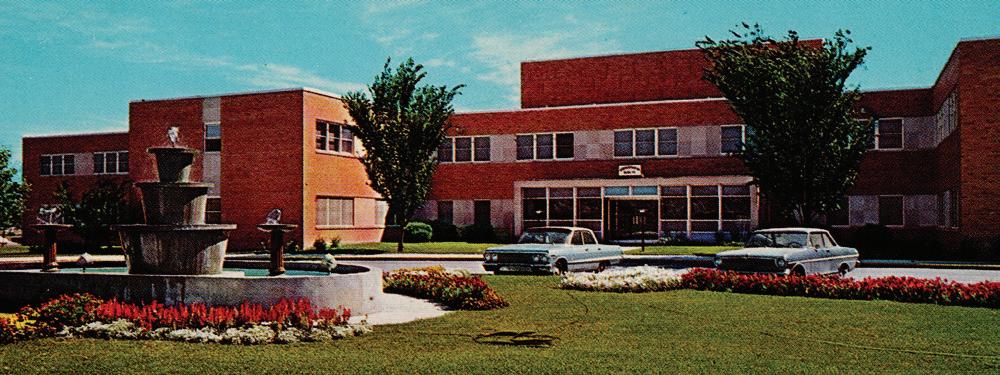

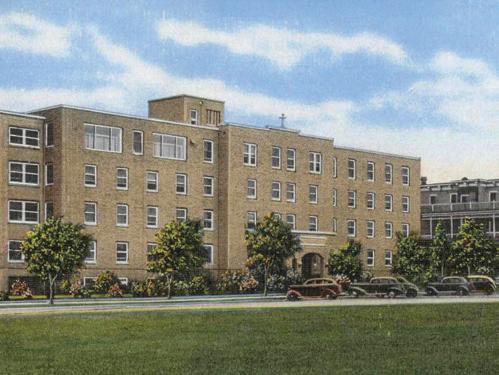

HONORING OUR PAST, SHAPING OUR FUTURE
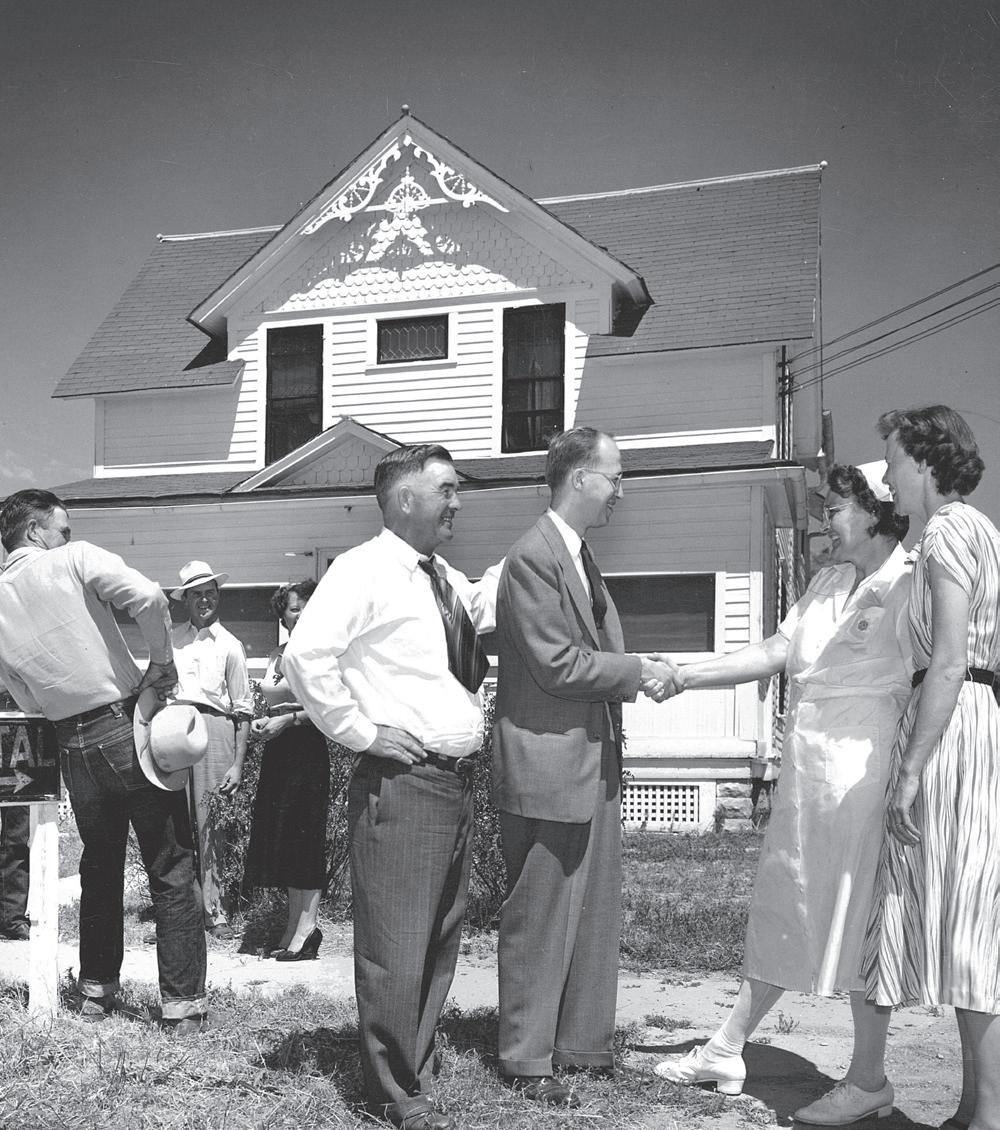

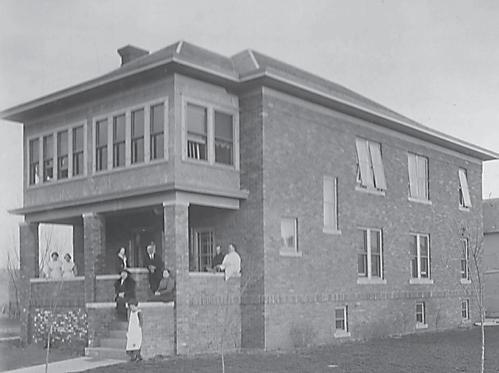

Renée
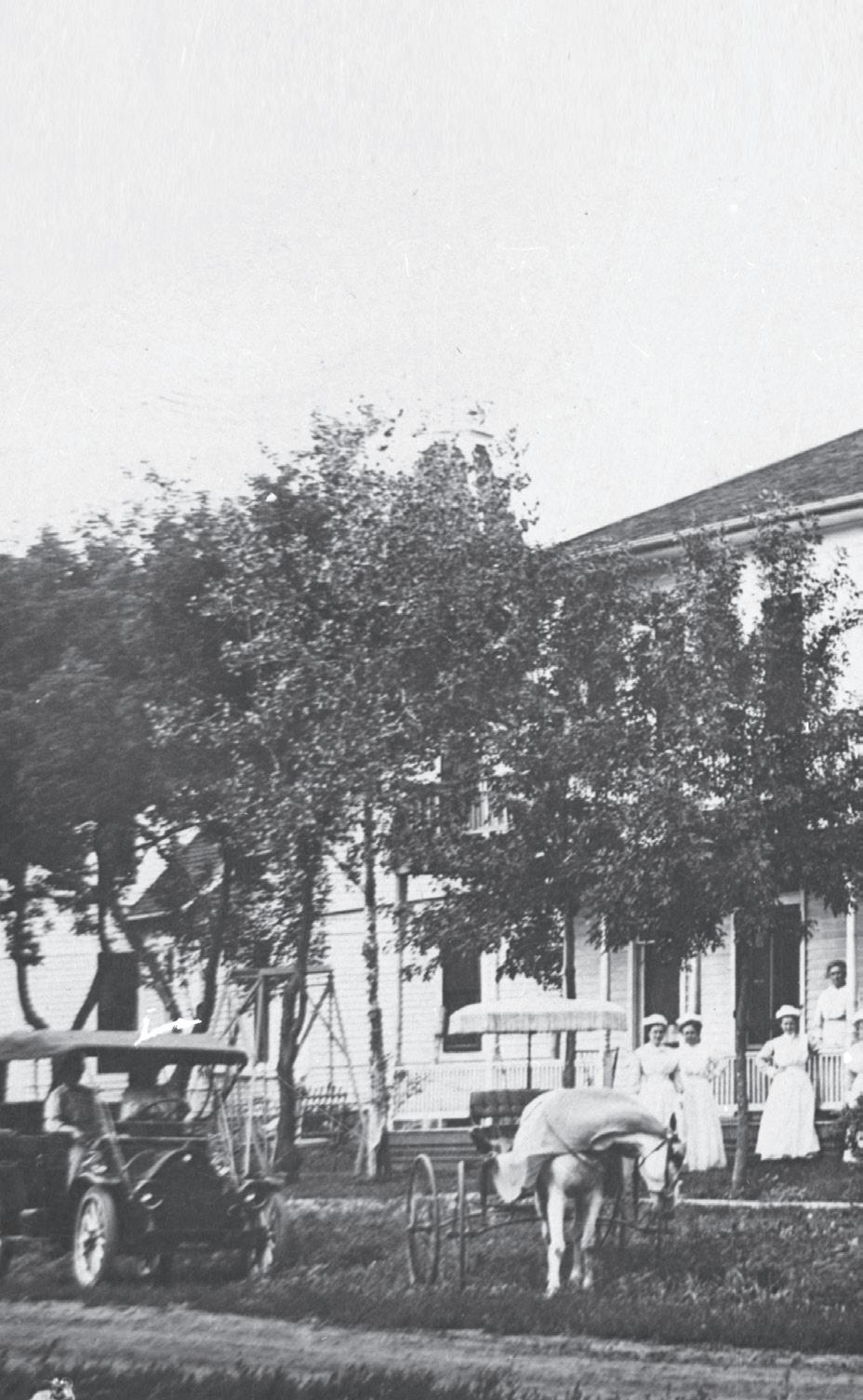
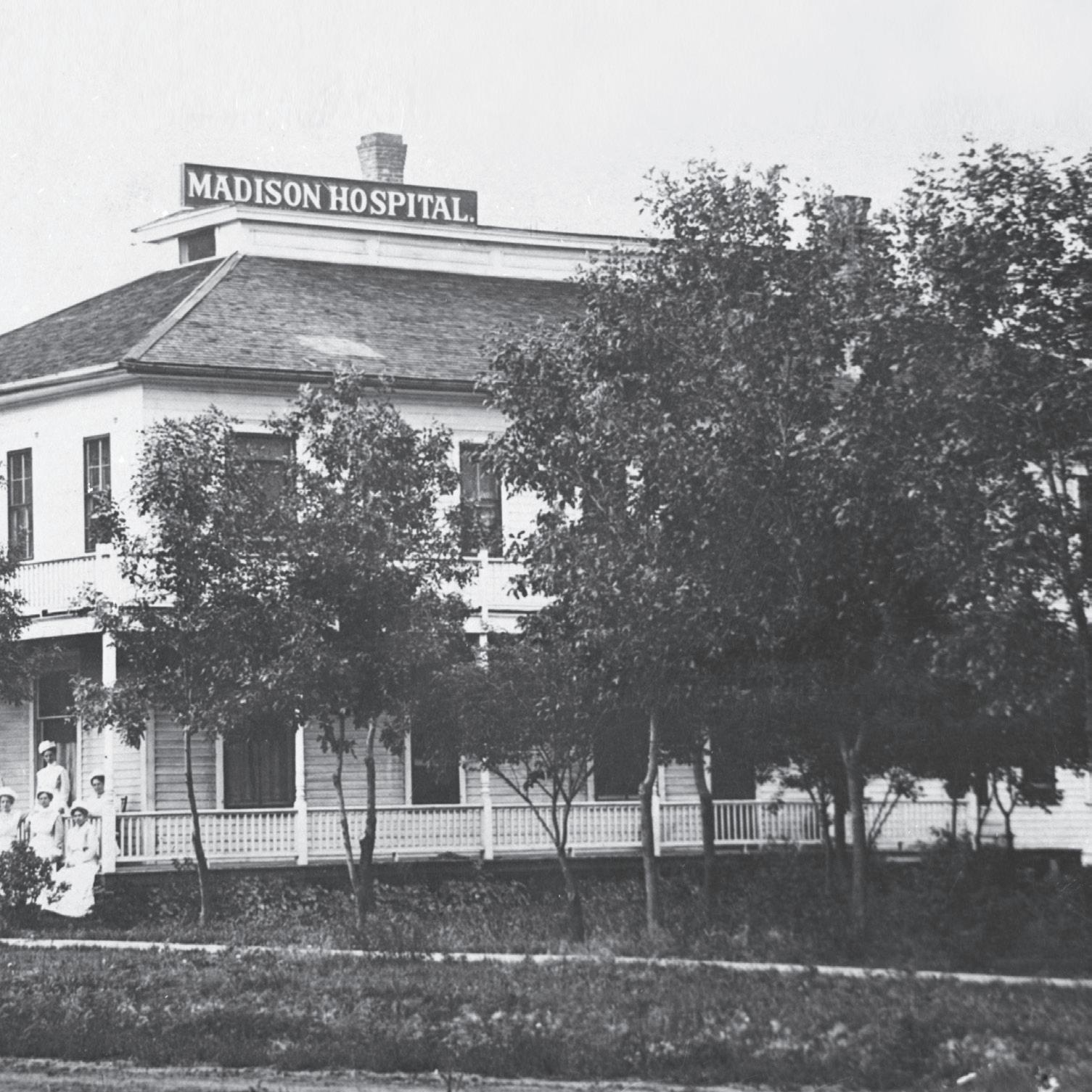




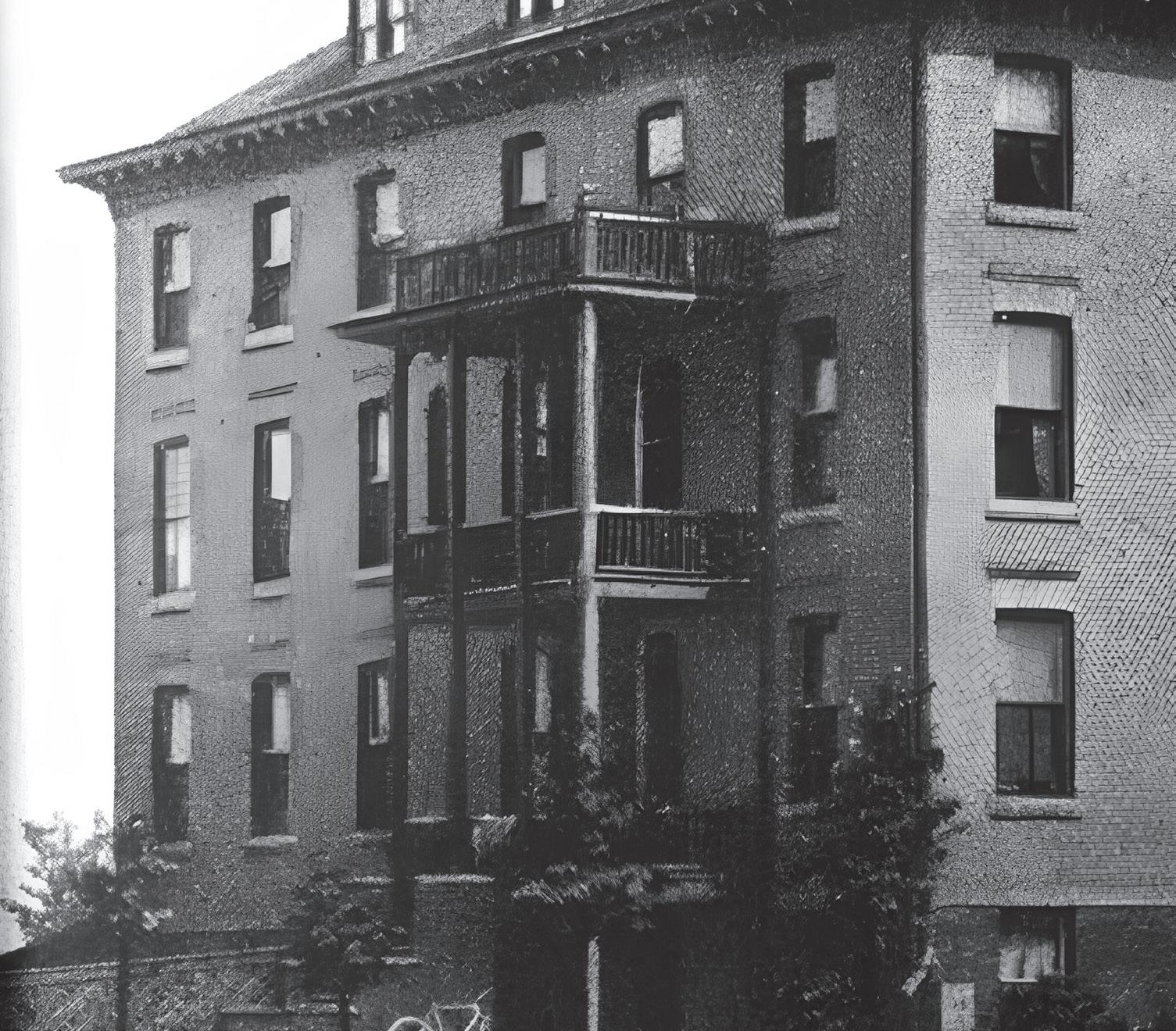

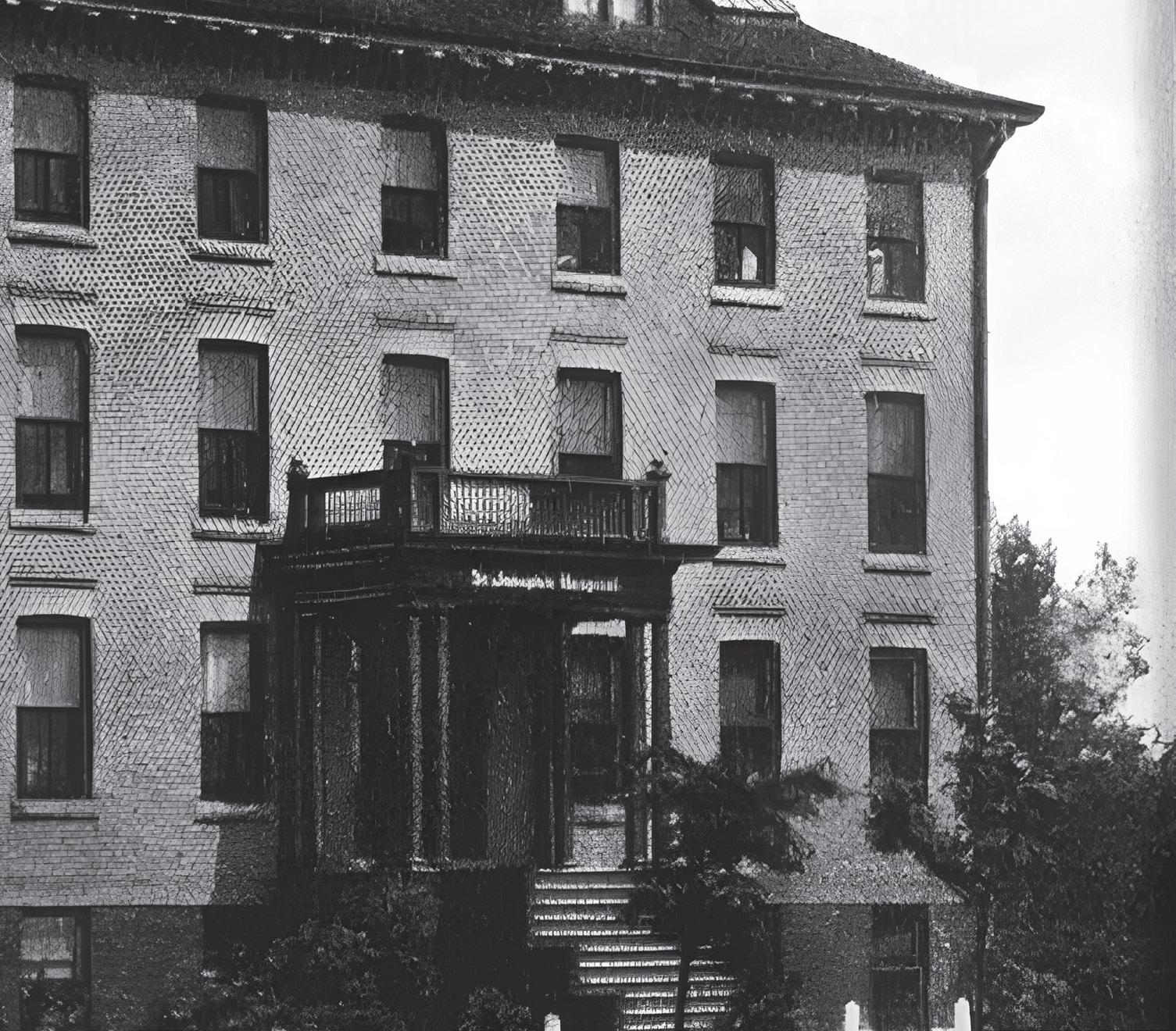

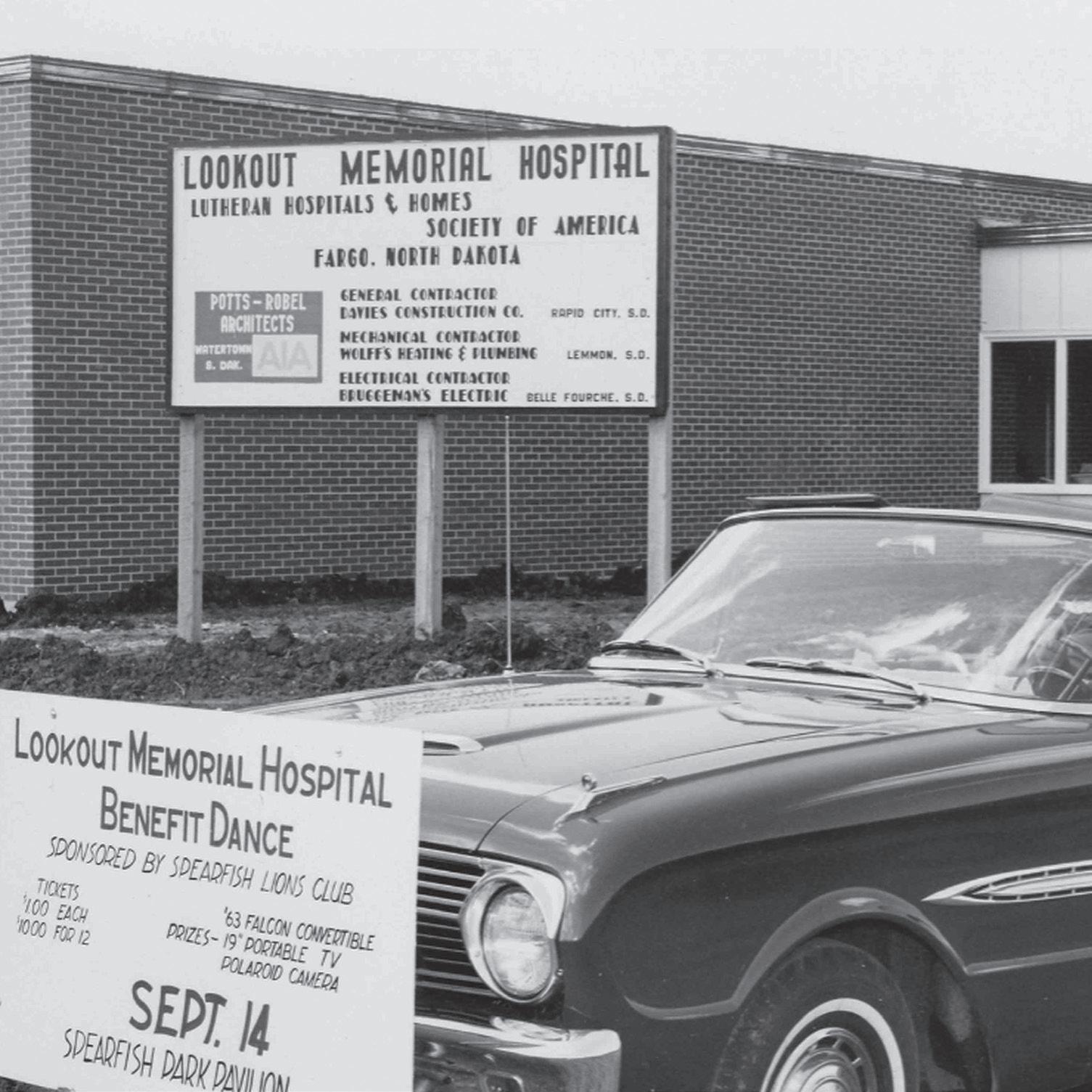
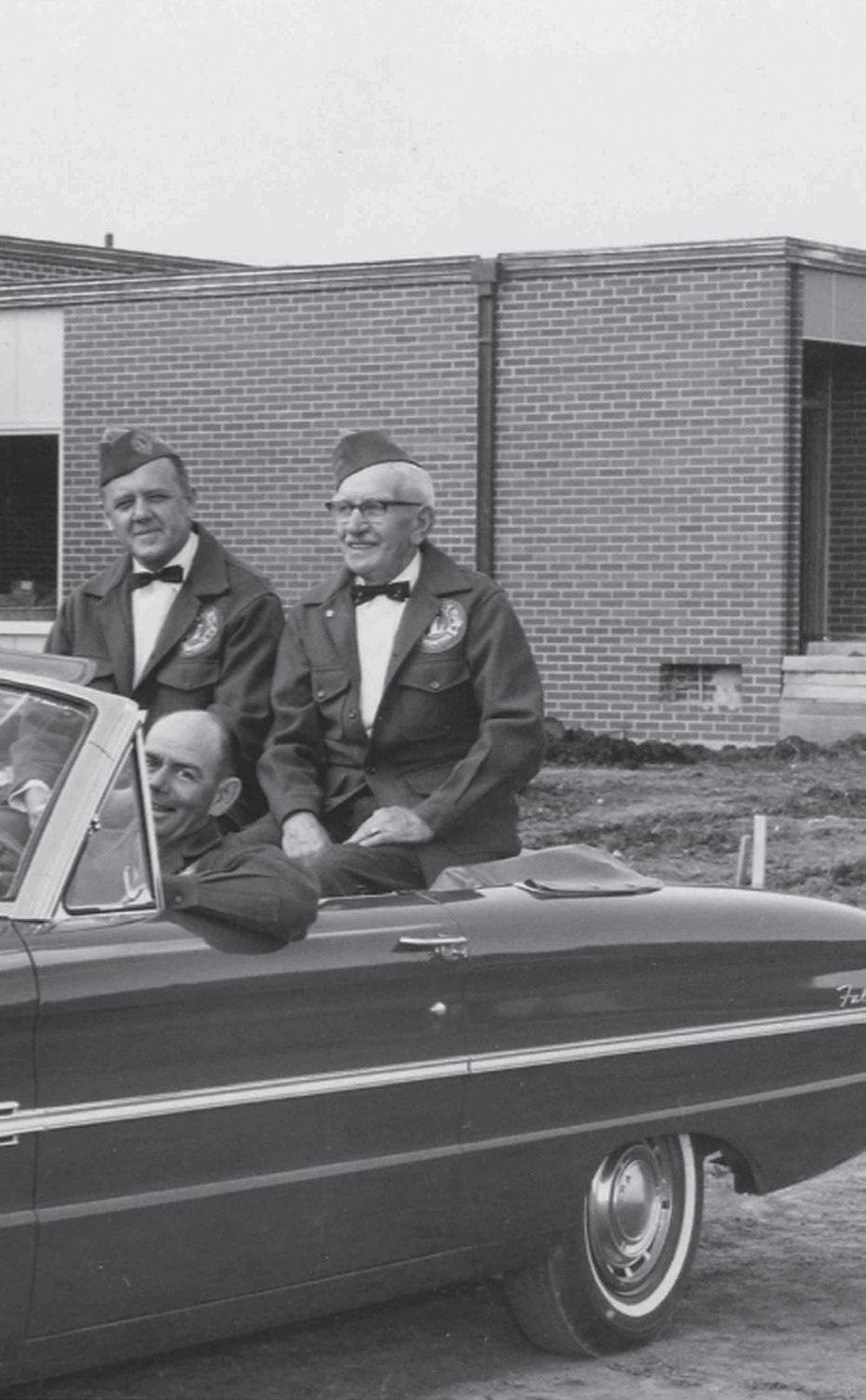

South Dakota’s non-profit hospitals stand as enduring pillars of care, compassion and community. For over a century, these institutions have been more than just places of healing—they have been the heartbeats of towns and cities, the lifelines for families and the embodiment of a mission to serve others without expectation of profit. This coffee table book is a tribute to their remarkable history, their unwavering dedication and the countless lives they have touched. n The story of non-profit hospitals in South Dakota is one of resilience and innovation. From humble beginnings in the late 19th and early 20th centuries, when health care was often rudimentary and resources were scarce, these hospitals emerged as beacons of hope. They were founded by visionary leaders, often supported by religious organizations, local communities and philanthropic individuals who believed in the power of accessible health care for all. Over time, they grew, adapted and evolved, embracing advancements in medicine and technology while never losing sight of their core mission: to serve the people of South Dakota with dignity and compassion. n This book takes you on a journey through time, exploring the origins, challenges and triumphs of each non-profit hospital in the state. Through vivid photographs and engaging narratives, you’ll discover the unique stories behind these institutions—from the small rural hospitals that became the backbone of their communities to the larger regional medical centers that have set standards for excellence in care. Through short stories, alongside photos of yesterday and today, you’ll see how these hospitals have shaped the landscape of health care in South Dakota. n But this book is more than a historical record. It is a celebration of the spirit of community that has sustained these hospitals for generations. It is a reminder that health care is not just about treating illness, it is about fostering hope, building connections and improving lives. As you turn these pages, we hope you feel a sense of pride in the legacy of South Dakota’s non-profit hospitals and a deep appreciation for the role they continue to play in our lives. n We invite you to explore, reflect and be inspired by the stories within. These hospitals are not just buildings; they are living testaments to the power of compassion, collaboration and care. They are a testament to the people of South Dakota—past, present and future—who have made, and will continue to make, these institutions a cornerstone of our communities. n Throughout this book, we also highlight the evolution of health care in South Dakota, showcasing the pivotal role of the South Dakota Hospital Association (SDHA) and the transition to the South Dakota Association of Healthcare Organizations (SDAHO). We explore how the expansion of post-acute care has significantly enhanced the well-being of communities, demonstrating the profound impact these services continue to have on individuals and families across the state. n Welcome to the story of South Dakota’s health care history, a century of strength, where we honor our past and look to shape our future. May these stories remind us of the enduring value of compassion, the power of community and the profound impact of caring for one another.

Tim Rave President/CEO, SDAHO
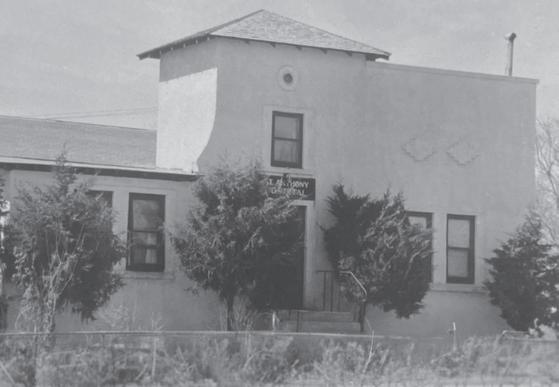
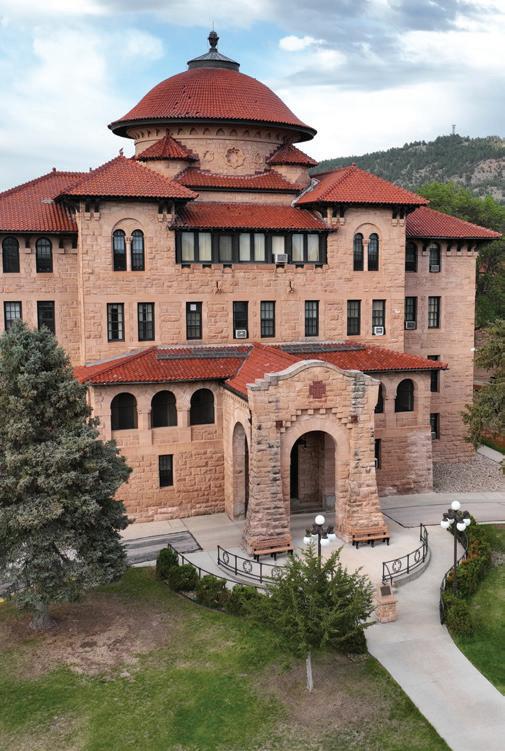
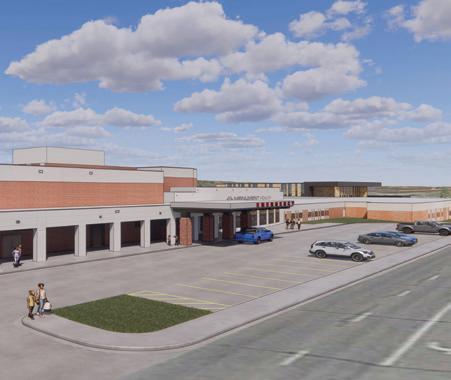

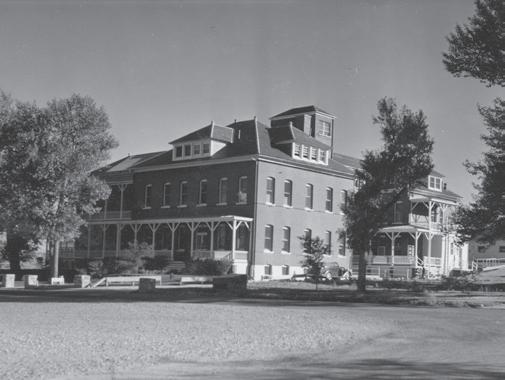
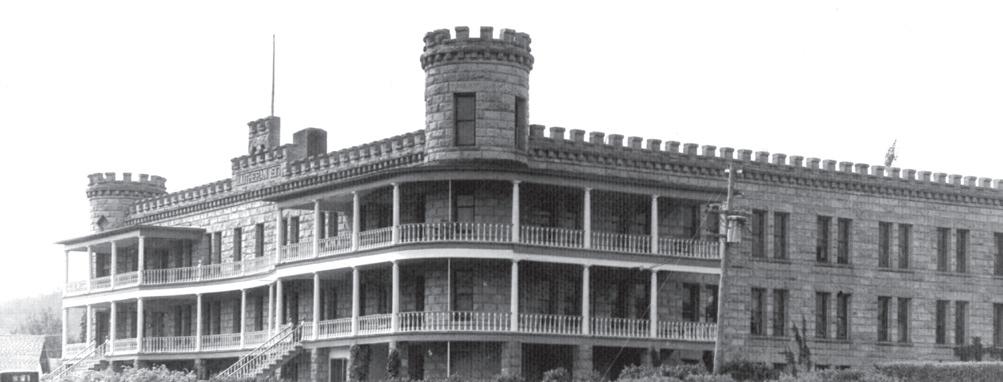
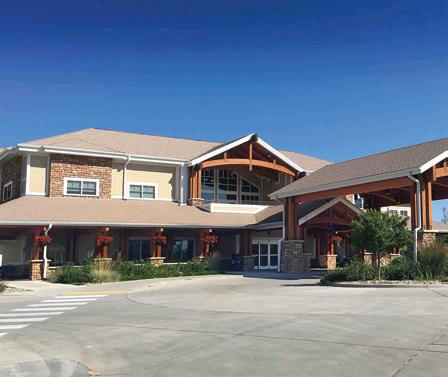

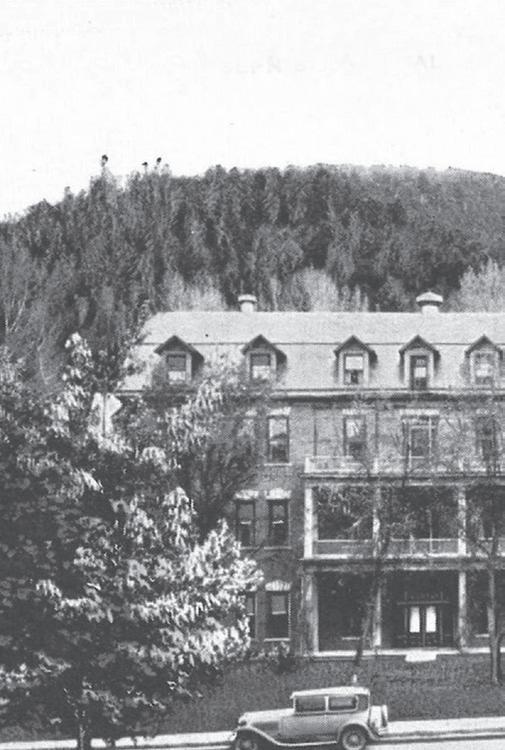

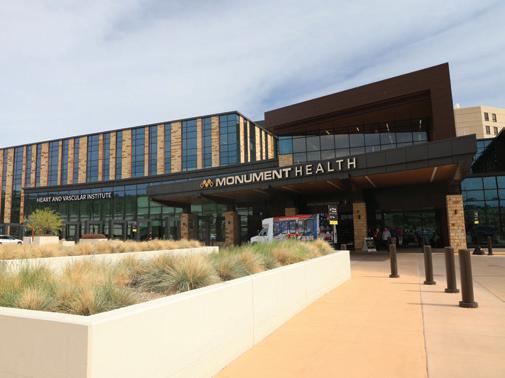
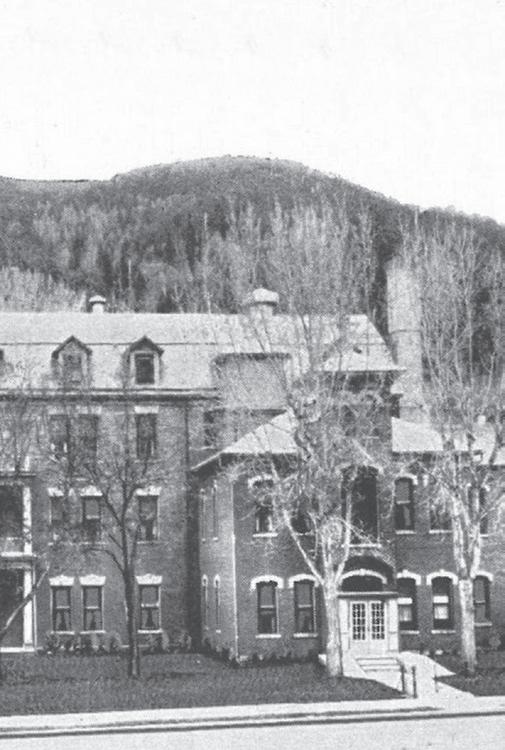

Bennett County Hospital
Martin
Fall River Health Services
Hot Springs
Michael J. Fitzmaurice South Dakota
Veterans Home
Hot Springs
Monument Health Custer
Hospital and Clinic
Custer
Monument Health Lead-
Deadwood Hospital
Deadwood
Monument Health Rapid City Hospital
Rapid City
Monument Health Spearfish Hospital
Spearfish
Monument Health Sturgis
Hospital and Clinic
Sturgis
Philip Health Services
Hans P. Peterson Memorial Hospital
Philip
VA Black Hills Health Care System
Fort Meade VA Medical Center
Fort Meade
VA Black Hills Health Care System
Hot Springs VA Medical Center
Hot Springs
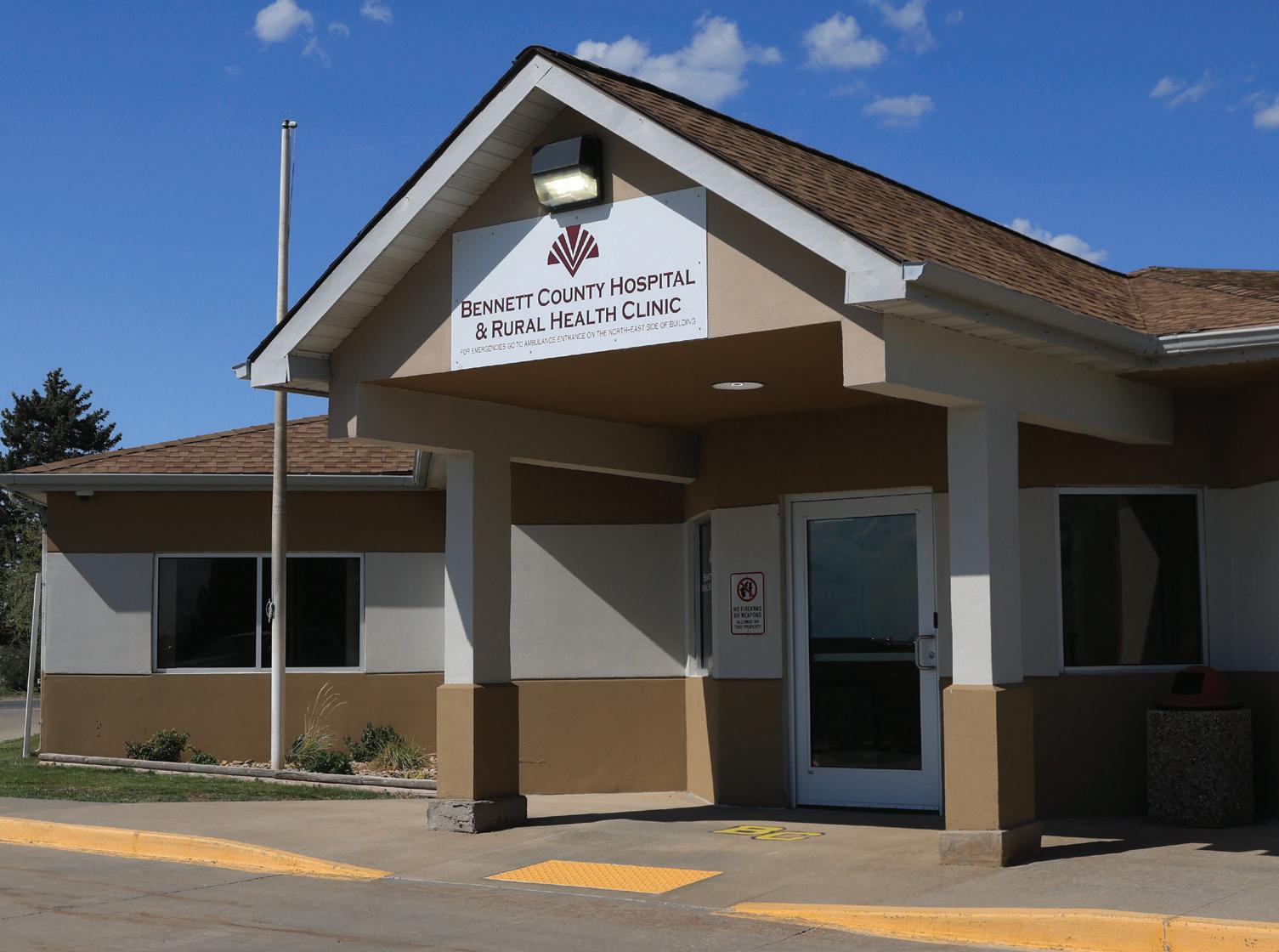
Nestled in the heart of Martin, South Dakota, Bennett County Hospital has long been a cornerstone of health care for the region. Its origins trace back to 1929 when Charles L. Swift, MD, established St. Anthony’s Hospital. He operated it until 1947—it transitioned to a community hospital in 1948. The current hospital was constructed in 1954 by the board of county commissioners, L.M. Trumble, V.L. Palmer, and Arnold Hein with County Auditor William A. Hauff. n In the 1980s, the hospital expanded further to include a nursing home, ensuring that elderly residents had access to long-term care close to home. For decades, this facility was a beacon of comfort and support for the elderly but was closed in Oct. 2023 due to financial challenges—a significant loss for the community, underscoring the financial struggles many rural health care facilities face nationwide. n The hospital extended its reach by adding a clinic in 1999, providing outpatient services and reinforcing the hospital’s role as a full-spectrum provider for Bennett County and surrounding areas. n A major renovation and expansion project is now being planned, aiming to modernize and improve patient care. Enhancements will include a state-of-the-art emergency room, laboratory services, imaging services, expanded patient rooms and enhanced physical and occupational therapy facilities. n Bennett County Hospital provides a wide range of health care services, including 24-hour emergency services; acute inpatient care; skilled nursing; intermediate care; diagnostic imaging, including radiology, CT and ultrasound; laboratory; pharmacy; physical, speech and occupational therapy; EKG; cardiac monitoring and rehabilitation; outpatient services; social services, health education and support groups; health screening,
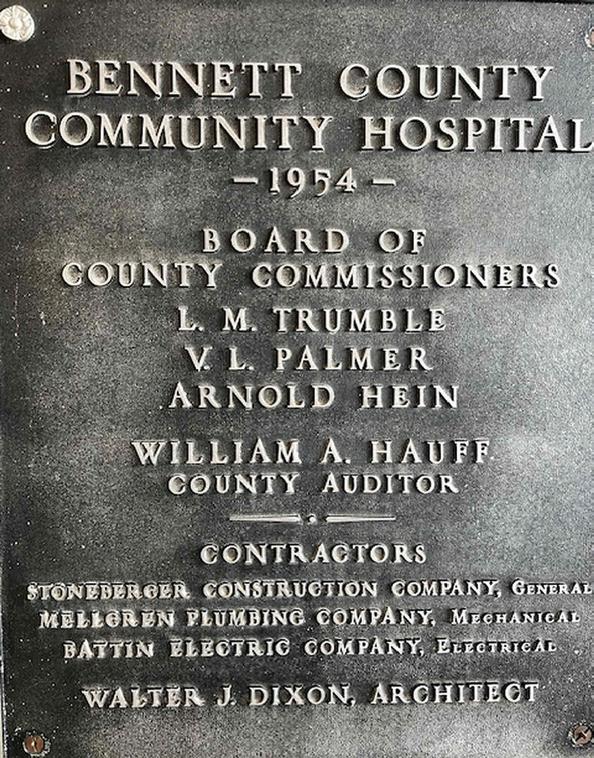
The resilience of Bennett County Hospital reflects the strength of the community it serves.
wellness and community education programs; homemaker services; home health nursing services; rural health clinic; clinic behavioral health and senior life solutions. n The resilience of Bennett County Hospital reflects the strength of the community it serves. Despite the loss of the nursing home, ongoing investments in health care infrastructure promise a bright future. Adapting to the needs of modern health care and prioritizing patient well-being, Bennett County Hospital remains a pillar of support for the residents of Martin and beyond. n The story of Bennett County Hospital is not just one of buildings and services but of the people who work tirelessly to provide quality health care in a small, but determined, community.
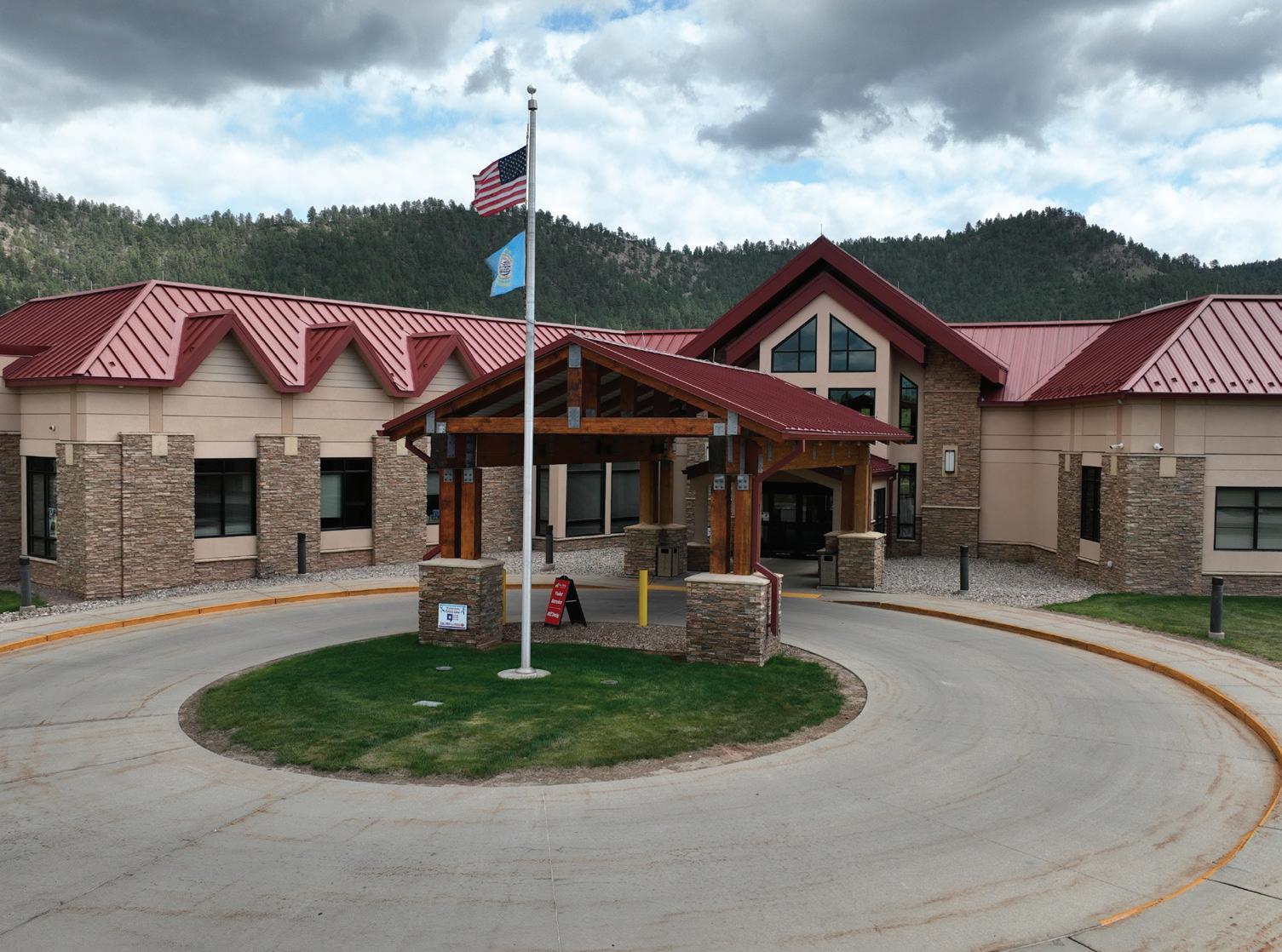
In 1907, Dr. Perry Nichols built a cancer sanatorium at 209 N. 16th Street in Hot Springs. It was expanded and sold, becoming Lutheran Hospital in 1917. Later, this iconic “Castle Manor” transformed to adapt to the community’s health care challenges. n Lutheran Hospitals & Homes Society assumed its management in 1938 and, in 1951, the West River Crippled Children’s Hospital & Polio Center was built adjacent to the hospital. n A significant development occurred in 1967 when the polio hospital and Castle Manor were renovated and united, establishing Southern Hills General Hospital (SHGH). In 1968, SHGH moved into the old polio hospital space, and a nursing home was established in Castle Manor. n The organization eventually became part of Lutheran Health Systems and then Banner Health. In 1998, Banner Health announced imminent closure of the emergency room and inpatient services. In response, concerned community members formed Greater Fall River Health Services (GFRHS), opening a 24-hour urgent care clinic at the State Veterans Home, which dissolved in 1999. n That year, Joan Bachman of the South Dakota Department of Health, a key consultant, recommended John Miller as the organization’s first CEO and administrator and Miller provided invaluable guidance thereafter. n Banner Health then indicated that local longterm care was also in peril, and the GFRHS board attempted to create a hospital tax district through a special election in order to purchase the hospital, but was unsuccessful. Undeterred, GFRHS sought a loan to buy the building and fix its roof, but was denied. n In an extraordinary show of support, a community forum organized by businessman Rich Olstad garnered over $400,000 in donations. Governor Bill Janklow recognized the community’s dedication and awarded it a $150,000 community block grant to retain the hospital’s long-term care and diagnostic services. n In Dec. 1999, GFRHS took over ownership and operation of the buildings, ancillary services and nursing home. In June 2001, GFRHS reopened the hospital and ER, marking the
Governor Janklow recognized the community’s dedication and awarded it a block grant to retain the hospital’s long-term care and diagnostic services.
first time a South Dakota facility had been directly licensed as a critical access hospital without transitioning from an existing, operational hospital. Then, its name was shortened to Fall River Health Services (FRHS). n In March 2010, FRHS constructed a modern hospital and clinic at 1201 Highway 71 South, expanding from 11 to 25 beds. The nursing home remained at Castle Manor. n In Dec. 2014, nursing home residents were moved into the newly constructed Seven Sisters Living Center on the FRHS campus. Today, it operates as a state-of-the-art, 52-bed facility, providing outstanding care for its residents, including those in memory care. n Throughout the years, FRHS and its care facilities remain a vital part of the community, evolving but staying true to its vital mission—keeping excellent health care close to home.
The original cancer sanatorium, “Castle Manor,” was constructed by Dr. Perry Nichols and opened in 1907.
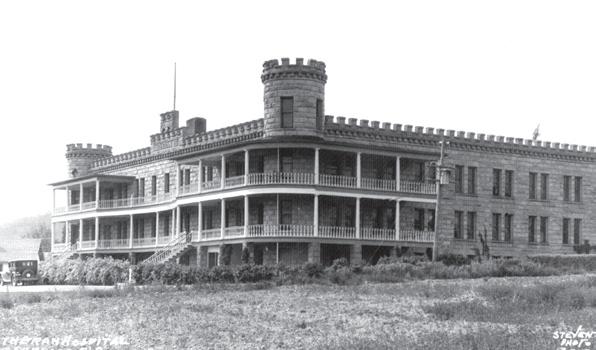
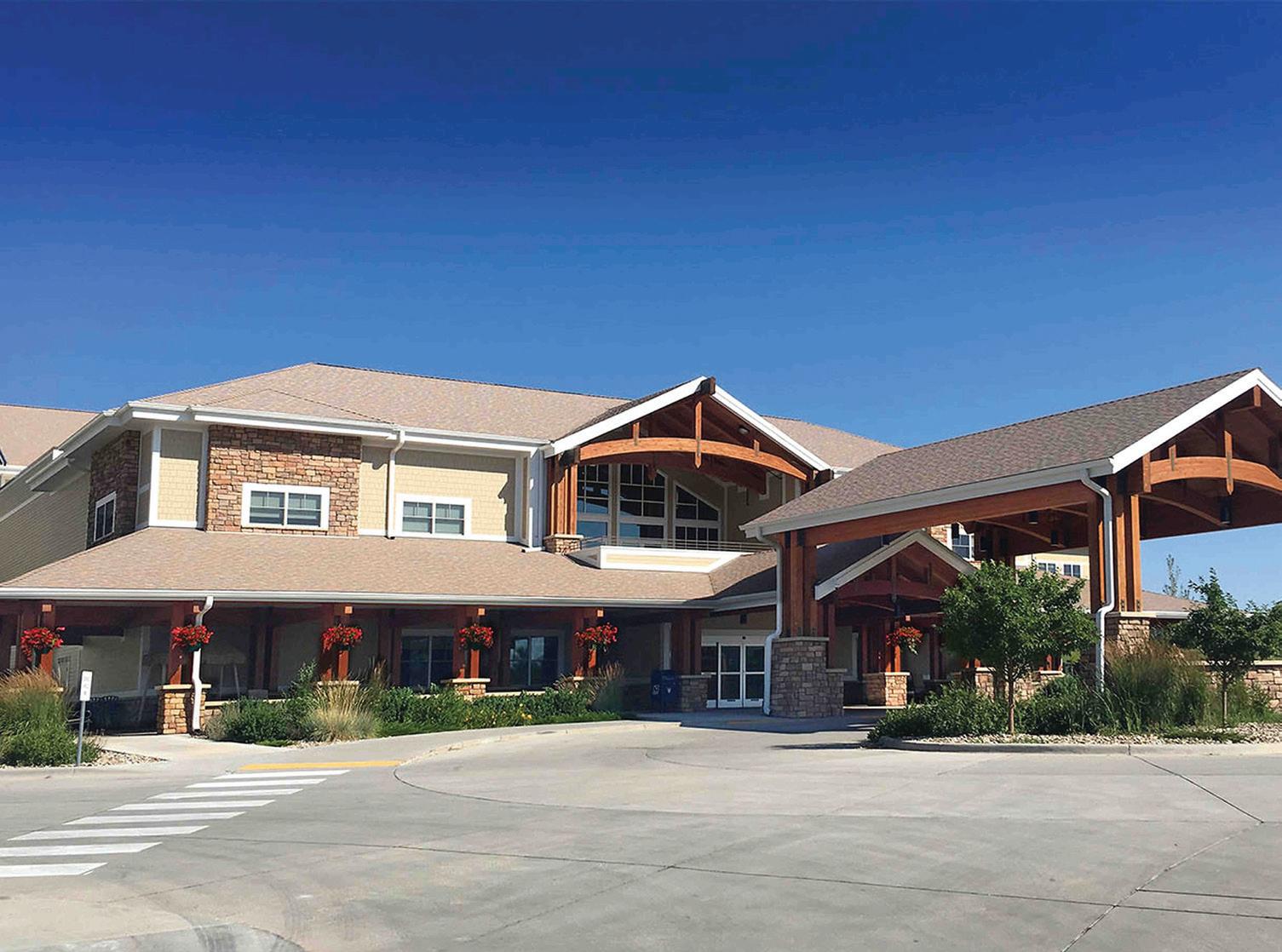
The Dakota Territorial Legislature met in Feb. of 1889 and, while in session, passed a bill establishing the Dakota Soldiers’ Home to be located in Hot Springs, South Dakota. The bill carried an appropriation of $45,000 for its construction. The object of the home was to provide care and subsistence for veterans and their wives and widows who met eligibility requirements for admission to it. n The cornerstone of the first building was placed on Nov. 11, 1889. n On Oct. 3, 1998, Governor William J. Janklow and Maj. Gen. Philip Killey dedicated the South Dakota Veterans Home to Medal of Honor recipient Michael J. Fitzmaurice. Fitzmaurice received the Medal of Honor for conspicuous gallantry and intrepidity of action at the risk of his life above and beyond the call of duty as a Specialist Four, United States Army, Troop D, 2nd Squadron, 17th Cavalry Regiment, 101st Airborne Division at Khe Sanh, Republic of Vietnam, on March 23, 1971. n In 2010, staff began working with federal and state officials to secure funding to construct a new state veterans home. Building Four on the campus was dismantled in 2013 and a groundbreaking ceremo-
The facility’s design incorporates residential-type furnishings and finishes in warm, welcoming colors to create a comforting feel.
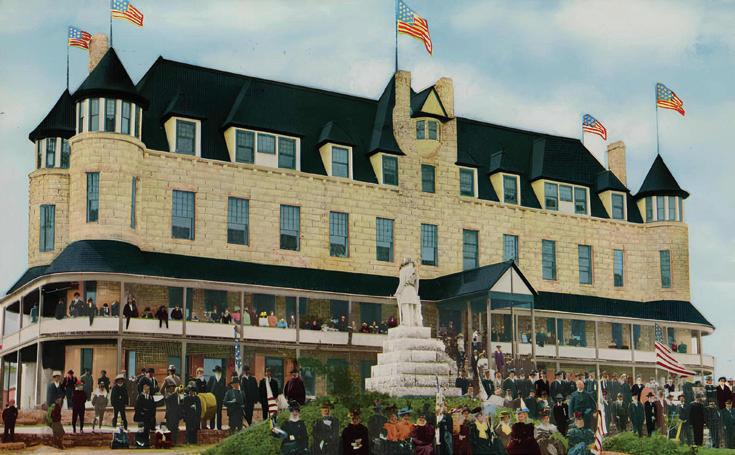
ny was held in Sept. 2013 to construct the new home. n In Jan. 2016, residents moved into the new home and a ribbon-cutting ceremony was held in March. The newly designed Michael J. Fitzmaurice South Dakota Veterans Home is a 133,000-square-foot building. The facility serves South Dakota veterans and contains 78 nursing beds and 24 domiciliary beds. The living spaces are broken into eight “neighborhoods,” housed in eight wings. Each neighborhood includes a living room, dining room and kitchen that provide a home-like environment to 12 to 13 occupants housed there. The facility’s design incorporates residential-type furnishings and finishes in warm, welcoming colors to create a comforting feel. n The state veterans home falls under the authority of the South Dakota Department of Veterans Affairs. The mission of the department is to ensure that all veterans and their eligible family members understand and receive all the benefits, support, care and recognition that were earned through the veteran’s service to the United States by administering all current programs and meeting their needs in the future. n For the South Dakota Department of Veterans Affairs (SDDVA) team, it is a privilege and an honor to serve veterans and their family members. The team labors tirelessly to ensure that the state of South Dakota preserves its reputation as a veteran-friendly state.
Harnessing Mother Nature’s Healing Properties
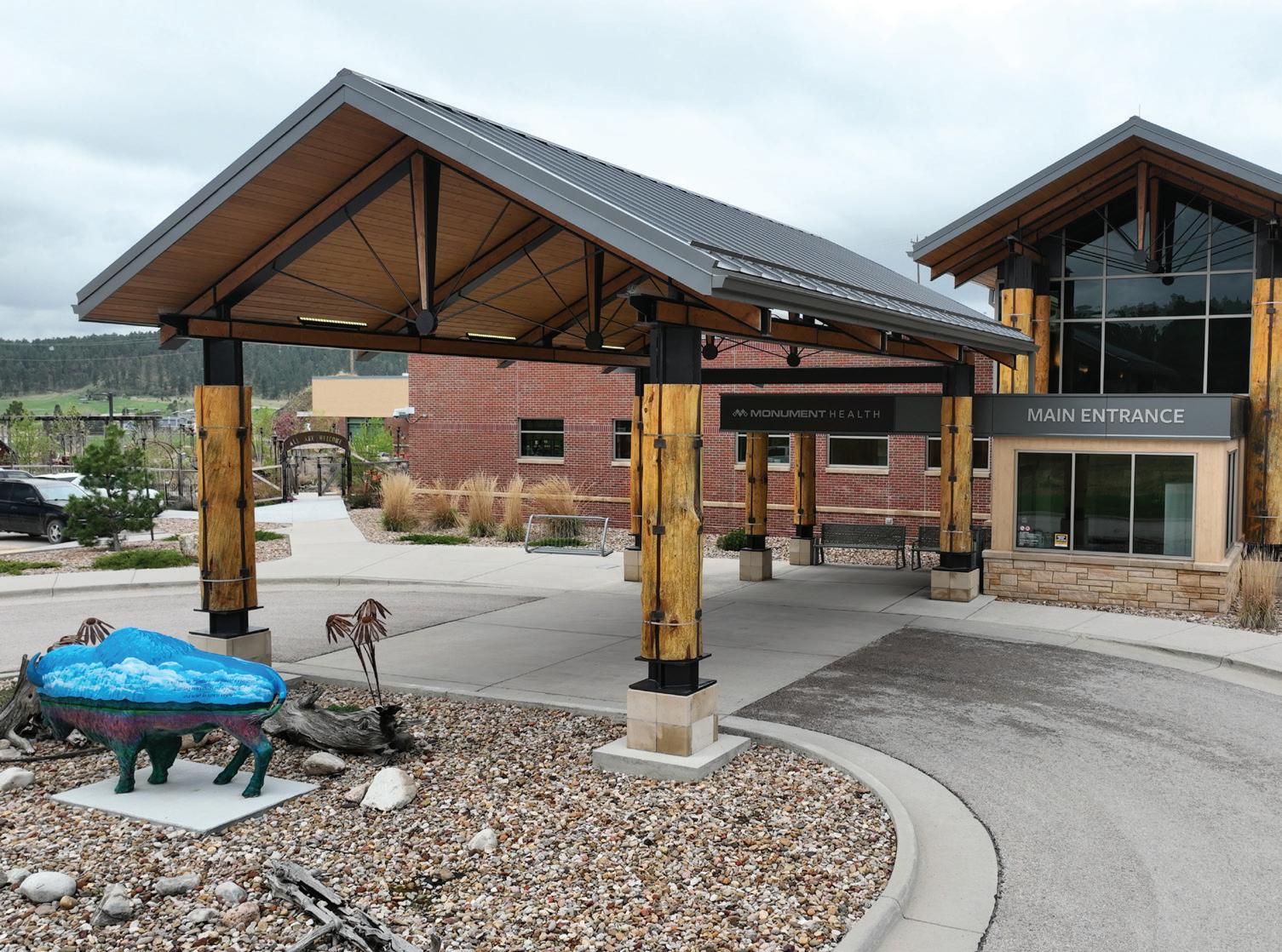
As is the case with so many rural, gold-mining camp towns in the western United States, Custer offered scant medical services initially, even though it was located in the hub community of the southern Black Hills area. However, in March of 1961, the Custer Community Hospital was dedicated and an addition to the hospital was completed in 1986. The Custer Community Hospital was acquired by Regional Health in 1993 and later became known as Custer Regional Hospital. In 1999, Custer Regional Hospital added an assisted living center and, in 2001, a nursing home. n An entirely new 46,000-squarefoot Custer Hospital building was constructed in 2018 to modernize and meet the new health care needs of residents in southern Black Hills. The hospital features eight patient rooms, a hospice suite, two emergency trauma rooms, two emergency treatment rooms, a family activity room and a therapy center. There is also an expanded laboratory, a diagnostic imaging suite and an endoscopy suite. The clinic space boasts 18 exam rooms, two procedure rooms and three infusion bays. n After an organization-wide reimagining in 2020, the hospital

was renamed Monument Health Custer Hospital and Clinic. n Currently, Monument Health Custer Hospital offers 24-hour emergency service, inpatient and outpatient care and hospice. Co-located with Monument Health Custer Clinic, it employs six physicians, has a staff of 66 nurses and nurse aides and offers 12 inpatient beds, five emergency department beds and three infusing rooms. Monument Health Custer Assisted Living is in close proximity to the hospital and clinic. Its staff services patients from the surrounding five-state area. n Custer Hospital is proud to offer a Healing and Wellness Garden—the space is an asset to caregivers, patients and community members alike. Nestled on one side of Custer Hospital, the healing garden spans 10,000 square feet and the therapy walking path reveals one surprise after another. The healing garden was designed to utilize sounds, sights, fragrances and textures to bring people into the present moment as a form of healing.
A CENTURY STRONG: HONORING OUR PAST, SHAPING OUR FUTURE Monument Health Lead-Deadwood Hospital Pioneering Compassionate Health Care Since 1875
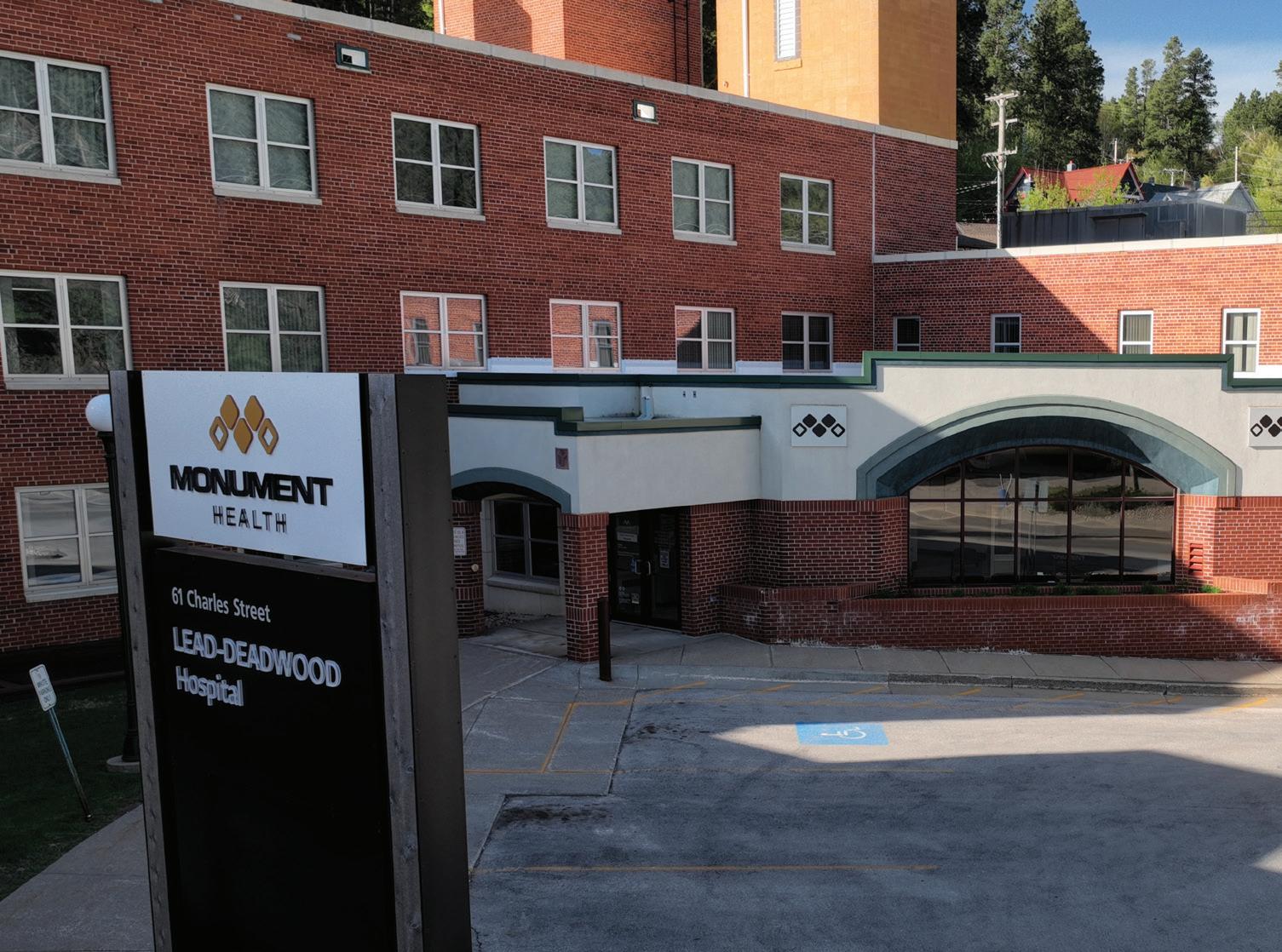
The first pioneers arrived in the Black Hills in 1875 and many physicians eventually made their way to the bustling new gold camps there. The first hospital in the Black Hills was built in Aug. 1876, followed by a second temporary hospital, built in Lead, in Sept. that year to accommodate the illnesses and injuries occurring in the booming mining camps. In 1888, Homestake Hospital officially opened for operation on Main Street in Lead, followed by a 20-bed hospital named St. Joseph’s in Deadwood, which opened on Jan. 15, 1897. These two hospitals would be the mainstays for treatment of local patients for most of the following century. n However, by 1975, Homestake Hospital and St. Joseph’s Hospital had merged inpatient care services. Homestake Hospital then became an outpatient-only clinic and all Homestake inpatients were sent to St. Joseph’s Hospital. In 1982, a new clinic at St. Joseph’s Hospital, the Black Hills Medical Clinic, was completed by Homestake for the managed care of Homestake employees and local patients. n In 1983, West Dakota Health Care acquired St. Joseph’s from the Benedictine Sisters and renamed it Northern Hills General
Health Lead-Deadwood Hospital holds the distinction of being the oldest hospital still in operation in the state.
Hospital. By 1995, Northern Hills General was a 35-bed hospital, offering swing beds, an ICU bed and acute and outpatient services. On June 30 of that same year, Northern Hills General merged with Rapid City Regional Hospital in Rapid City. Two years after the merger, the Deadwood hospital celebrated its 100-year anniversary of service to the community. n In 2002, the Homestake Clinic in Lead was closed upon the cessation of operations at Homestake mine. Northern Hills General was rebranded in 2005 to Lead-Deadwood Regional Hospital and the Lead-Deadwood Regional Medical Clinic as a result of Regional Health’s acquisition of many Black Hills medical facilities. n In 2020, Regional Health itself underwent a revitalization and was officially renamed Monument Health. Likewise, the Deadwood locations were again rechristened, this time Monument Health Lead-Deadwood Hospital and Monument Health Medical Clinic in Lead-Deadwood.

To this day, Monument Health Lead-Deadwood Hospital considers Jan. 15, 1897, to be its anniversary date. In 2022, the organization marked 125 years of the provision of compassionate health care to the Lead-Deadwood community in the same building and on the same ground where the Benedictine Sisters began their outreach and care decades before. Monument Health Lead-Deadwood Hospital holds the distinction of being the oldest hospital still in operation in the state.
A CENTURY STRONG: HONORING OUR PAST, SHAPING OUR FUTURE
Monument Health Rapid City Hospital
Embracing the Region’s Expanding Health Care Needs

The first hospital in Rapid City was opened in the home of Dr. William E. Robinson in 1910. Around 1911, Methodists assumed responsibility for the hospital and renamed it Methodist Deaconess Hospital. In 1926, a Catholic hospital opened and was later named St. John’s Hospital. By 1928, St. John’s added a nurse’s home and training school, and it opened a 75-bed hospital in the West Boulevard Historic District in Rapid City. The hospital was renamed St. John’s McNamara Hospital. n Contracts were awarded for a new hospital building, named Bennett Clarkson Memorial Hospital, which was formally dedicated in 1954. However, following the effects of a flood in 1972, spiraling costs and new developments in medical technology, the two hospitals merged in 1973. The organization incorporated as Rapid City Regional Hospital and had 80 physicians on the medical staff and 280 licensed beds. n In Oct. of 1976, Rapid City Regional Hospital broke ground on the Fairmont Boulevard hospital, a new $23.5 million 285-bed hospital facility. It officially opened in Dec. of 1979, followed by a west addition in 1983. n The Black Hills’ first $4.5 million diagnostic imaging center opened in June of 1989. An eight-ton magnet was installed in the new MRI Center at Rapid City Regional Hospital. At the time, there were only three other similar MRI units in the country. The new Cancer Care Institute followed in 1993. In addition,
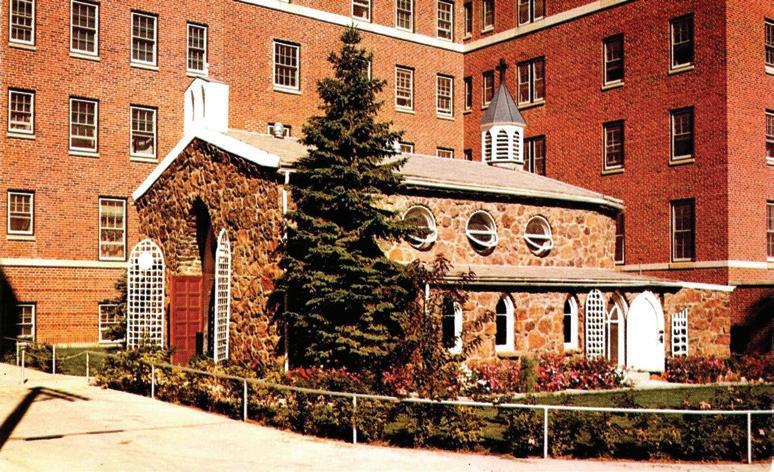
The future will see yet more growth, with an upcoming $40 million women and children’s services expansion of the main hospital.
Rapid City Regional Hospital and the University of South Dakota School of Medicine established a family practice residency program. By 1994, Rapid City Regional Hospital had undergone a $33 million construction project that added 82,000 square feet of space and the renovation of another 158,000 square feet. n The organization then underwent a major restructuring in 2004. Regional Health was formed to create a consistent culture across all facilities that had been acquired throughout the region. The following year, all hospitals, groups and facilities adopted the Regional name. In 2020, Rapid City Regional once again transformed and all facilities under the Rapid City Regional umbrella were renamed Monument Health. n The future will see yet more growth, with an upcoming $40 million women and children’s services expansion of the main hospital. The project will add more than 49,000 square feet and will include updated and modernized space for labor, delivery and pediatric care services in order to enable Rapid City Hospital to accommodate an expected 3,300 to 4,400 deliveries per year.
A CENTURY STRONG: HONORING OUR PAST, SHAPING OUR FUTURE
“Looking Out” for the Community’s Health
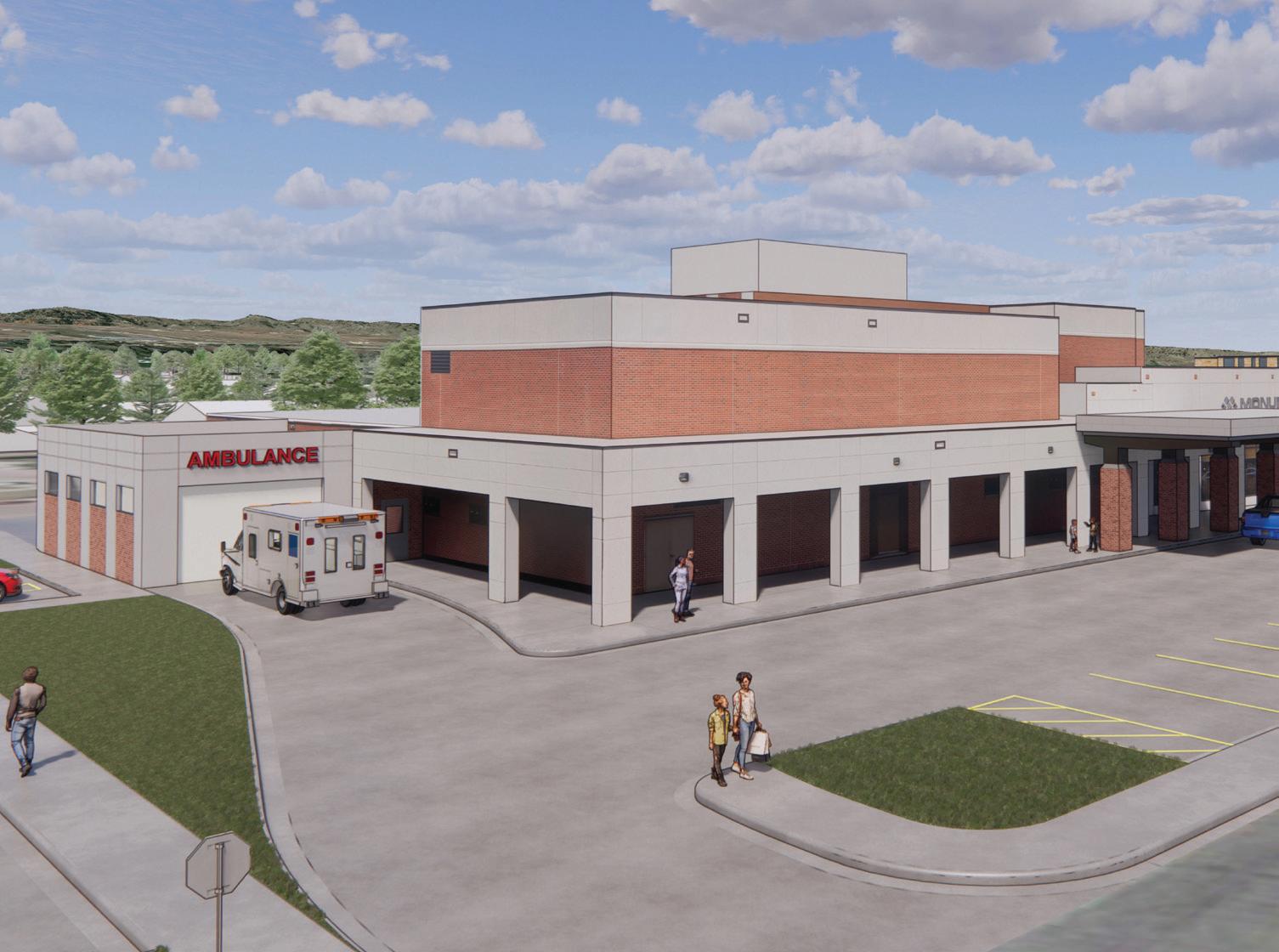
A hospital in Spearfish existed as early as 1904, but scant information about it is available today. However, it is known that, in the 1950s, Spearfish local Gus Rachetto led an effort to construct a new hospital and headed up a group that convinced Homestake Mining Company to donate land for it. On Oct. 9, 1963, the doors opened on the new 20-bed facility called Lookout Memorial Hospital to “lookout for the welfare of the people.” n In 1974, a major hospital construction project included new laboratory and X-ray departments. A long-awaited $4.3 million expansion project was then completed in 1984. This increased the number of patient beds to 35; added an intensive care unit, a second surgical suite and a two-bed recovery room; and expanded obstetrical services to two labor rooms and a new delivery room—also expanding the respiratory and physical therapy areas. n In 1993, a Family Medical Center addition was completed. In 1996, Lookout Memorial Hospital was named to the Top 100 Hospitals by the Chartis Center for Rural Health—one of 20 rural hospitals in this elite group. Select hospital administration members attended and accepted the award during a ceremony in Washington, DC. n In 1997, the hospital was remodeled and, one year later, work began on an expansion of its surgery and obstetrics departments and the emergency room. Work was completed in 2000 and included six birthing rooms, two post-op rooms and a new nursery and it expanded the number of beds to 40. In 2001, a ribbon-cutting ceremony for a new intensive care unit took place. This expansion included four monitored rooms. n In 2002, the hospital and the Family Medical Center joined Regional Health. By 2005, Lookout Memorial Hospital had been renamed Spearfish Regional Hospital. n In 2013, the hospital received Level III trauma center verification from the American College of Surgeons due to its ability to provide comprehensive, 24-hour, seven-daysa-week trauma care with a team including a trauma surgeon, emergency staff, operating room staff, orthopedic surgeon
On
Oct. 9, 1963, the doors opened on the new 20-bed facility called Lookout Memorial Hospital to
“lookout for the welfare of the people.”
and physicians offering respiratory therapy, radiology services, CT scanning, and lab and blood bank resources, as needed. n Spearfish Regional Hospital celebrated 50 years of service to the community in 2013. Like other area hospitals, Spearfish Regional underwent a rebranding to Monument Health in 2020. n 2023 kicked off the latest Monument Health Spearfish Hospital expansion of 94,000 feet of additional space and 13,000 feet of remodeled space. The addition is expected to be completed in 2025 to include a fully relocated and remodeled emergency department, surgery prep and recovery rooms and an acute care unit.

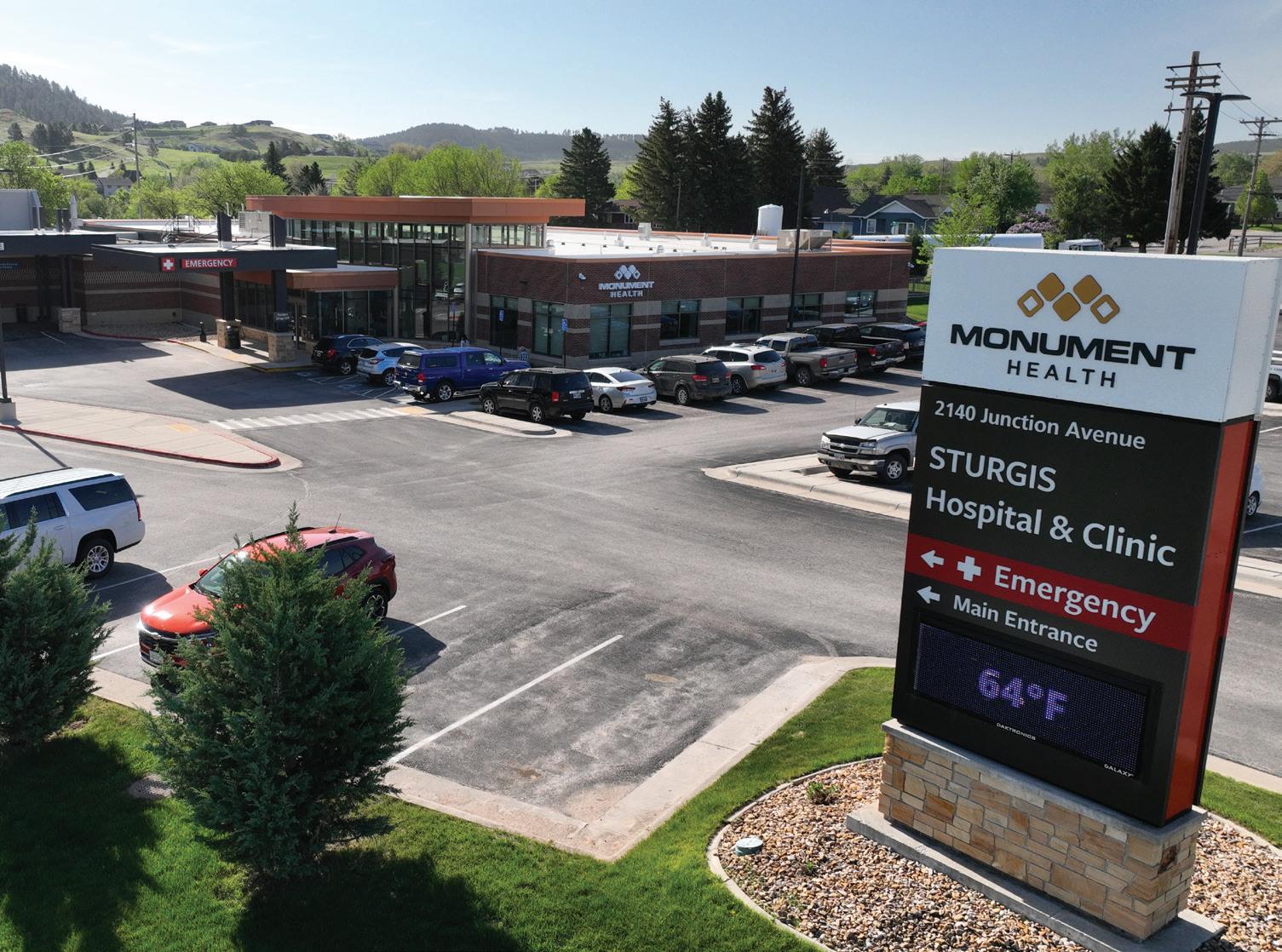
Monument Health Sturgis Hospital traces its history back to 1907, when the hospital opened on First Street in Sturgis, South Dakota. It featured 15 beds and was located in the town’s downtown area. The building can still be found in the original location today. n In 1953, Community Memorial Hospital opened a portion of its current location off of Marshall Street. It featured a state-of-the-art X-ray machine, a kitchen with a gas-fired range, an operating room and the capacity to serve 24 inpatients with 12 semi-private rooms. A celebration commemorating the opening and admission of the first patients took place on Sept. 1 that year, and the building was dedicated to those who lost their lives in service to our country. In 1959, an addition was built onto the existing hospital that offered 15 beds. n In 1978, an addition was added to the north side of the existing hospital for incoming freight, maintenance and additional office space. It includes a small basement and the area is still used today. Yet another expansion began in the summer of 1986. This included a larger emergency department as well as all-private inpatient rooms—a luxury at the time. In addition, surgical services, a lab and outpatient service
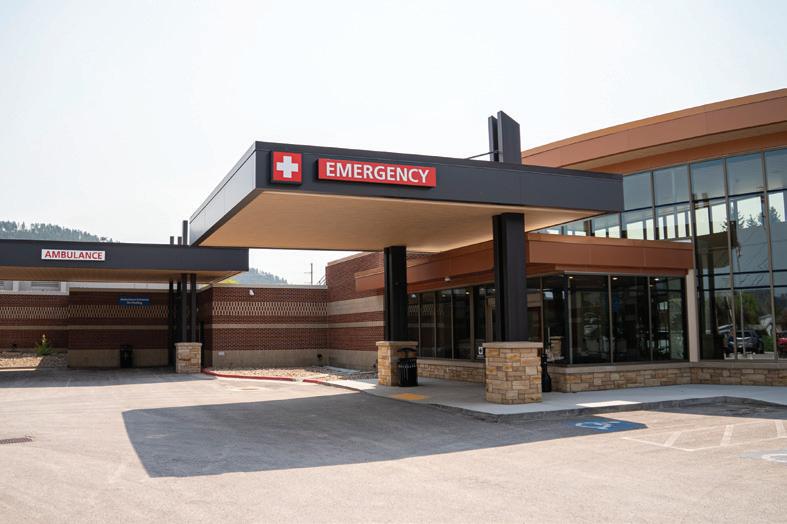
In order to meet the growing needs of the community and especially to care for the massive influx of visitors during the annual Sturgis Motorcycle Rally, Monument Health invested in an expansion in 2021.
areas were built. The new addition opened in the summer of 1987. n In 2002, Rapid City Regional Hospital entered into an agreement with Banner Health System to purchase the Sturgis hospital, known at the time as the Sturgis Community Health Care Center. This arrangement included many other care facilities in the region. n Three years later, Sturgis Community Health Care Center officially became Sturgis Regional Hospital. The name later changed to Monument Health Sturgis Hospital after the organization-wide rebranding in 2020. n In order to meet the growing needs of the community and especially to care for the massive influx of visitors during the annual Sturgis Motorcycle Rally, Monument Health invested in an expansion of the emergency department in 2021. The construction project required about six months and provided additional space, private rooms, updates to furnishings and fixtures, staff enhancements for charting and dictation, a behavioral health safe room and a negative air-flow system.
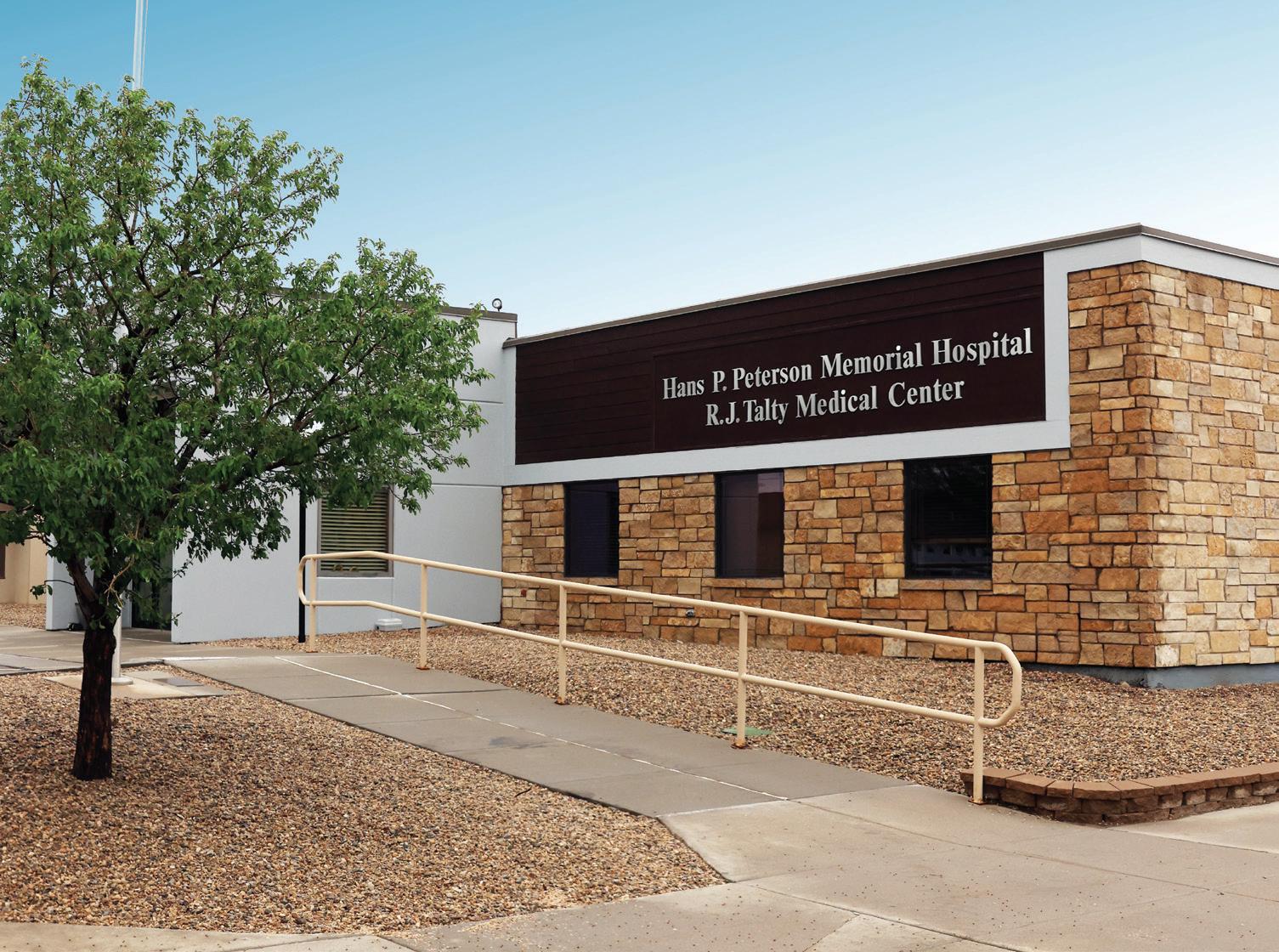
In March 1946, a community hospital association was formed in Philip, South Dakota, and locals raised enough money to purchase a former residential home to serve as a hospital beginning on Sept. 16, 1946—it remained as such until 1956. In 1952, fundraising was undertaken to build a hospital, estimated to cost $200,000. Haakon County rancher Hans P. Peterson donated his 3,440-acre ranch, and proceeds from its sale netted $48,000 toward the hospital. Construction began when financing reached $90,000; with the benefit of matching federal funds, the doors opened on Jan. 6, 1956. n In 1967, to meet the need for a nursing home, many personal contributions were coupled with government financing, and the Philip Nursing Home officially opened in 1970. In 1989, the hospital board felt a clinic would also complement the hospital. A generous gift from a western South Dakota rancher, as well as a community-development block grant, allowed the Raymond J. Talty Medical Center to open in 1990. n During the next decade, a management contract with Rapid City Regional Hospital (now
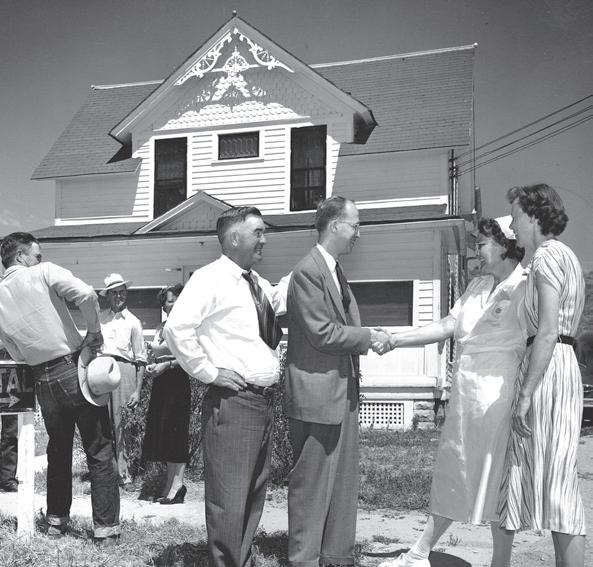
Haakon County rancher Hans P. Peterson donated his 3,440-acre ranch, and proceeds from its sale netted $48,000 toward the hospital.
Monument Health) was established, which continues today. n
The Silverleaf Assisted Living Center, a 16-bed facility, opened its doors in 1998. In 1999, a physical therapy and sports medicine department opened, and clinic services were expanded to Kadoka, South Dakota. By 2000, updates to the existing hospital were needed and a large capital campaign ensued. A goal of $750,000 was set and, by Sept. 2000, area contributors raised $1.2 million. In 2002, the new building was completed. Services include a full lab (expanded and renovated in 2023); radiology, including CT scanning and a partnership with BH Ultrasound; physical therapy and sports medicine; acute and skilled swing bed; and an emergency department with access to eEmergency telehealth professionals in conjunction with Avera Health. The ED entrance was updated in 2024 to accommodate larger ambulances and equipment. n In 2017, nursing home closures resulted in the state of South Dakota reassigning bed allocations, and Philip Health Services was awarded 12 additional beds. Another capital campaign raised funds to expand the nursing home, including a remodel and an addition to house a separate memory care wing—all with a price tag of $9.73 million. Between funds from the capital campaign and a USDA loan, the Scotchman Living Center opened its doors in July 2023. n The Philip Health Services group of facilities remains the largest hospital in the area between Rapid City and Pierre, and between South Dakota’s North Dakota and Nebraska borders. It is the largest employer in the community, with 168 employees.
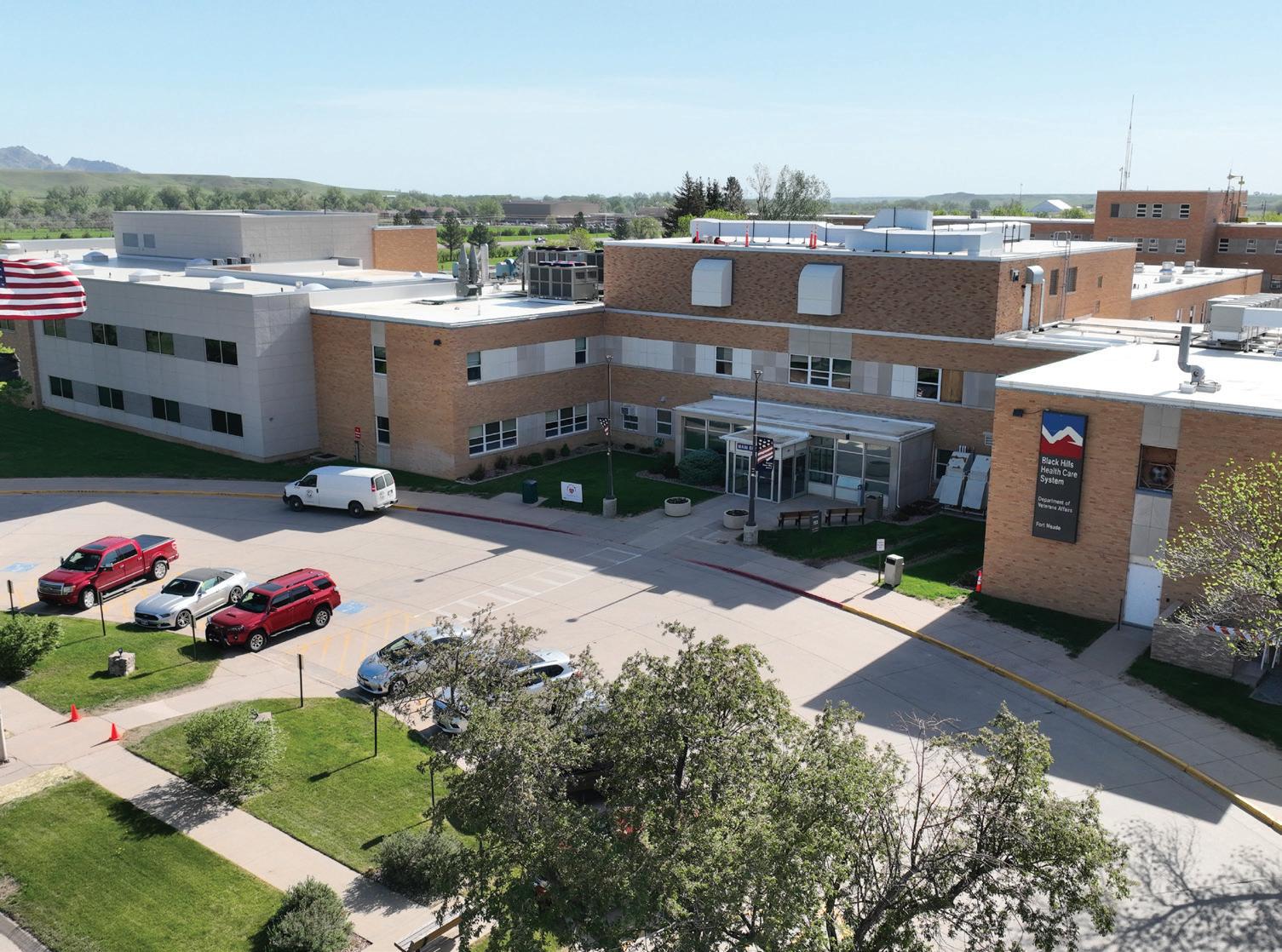
Fort Meade was established by the 7th U.S. Cavalry under the command of Col. Samuel Sturgis in the northern Black Hills region in 1878 in an effort to protect nearby settlements, especially in the gold-mining area around Deadwood. n This new post was first named Camp Ruhlen and initially served as a construction post for a brief time. The camp was then renamed Fort Meade after Civil War Gen. George Meade. After building the camp, the 7th U.S. Cavalry remained stationed there until 1888. After it left, the 8th U.S. Cavalry was stationed there until 1898, commanded by Col. Caleb Carlton, who first began the tradition of playing “The Star-Spangled Banner” during military ceremonies. n In 1911, the 13th U.S. Cavalry replaced the fort’s wooden structures with brick and stone facilities. En route to Deadwood, a number of stage and freight routes passed through Fort Meade. n For more than a century since then, there has been some type of military presence at Fort Meade. Many cavalry and infantry units were stationed there, including the Buffalo Soldiers of the 25th U.S. Infantry; the 4th U.S. Cavalry, which saw the transition from horses to mechanization; and the 88th Glider Infantry Regiment during World War II. Toward the end of that war, POWs from Camp Fechner were used to build a Veterans Administration hospital on the grounds of Fort Meade, which was completed in 1945. n The post still serves as a training site for the South Dakota
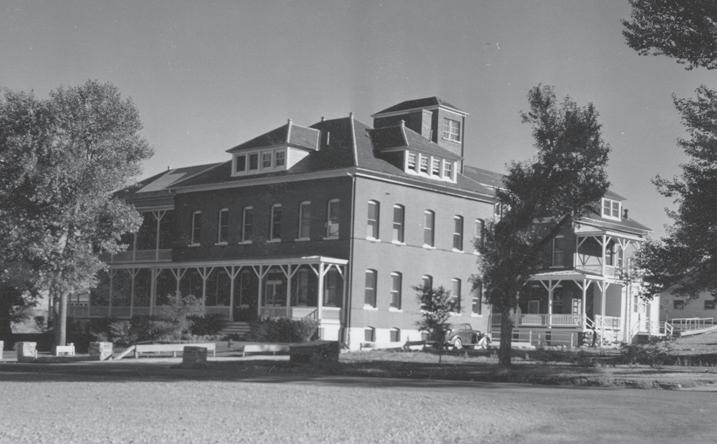
Fort Meade was designated a National Historic District in 1973, the first location in Meade County, South Dakota, to be placed on the National Register of Historic Places.
National Guard and an Army National Guard Officer Candidate School. Fort Meade was designated a National Historic District on May 22, 1973, the first location in Meade County, South Dakota, to be placed on the National Register of Historic Places. n The hospital provides primary care and offers treatment for mental health issues, nutrition needs, post-traumatic stress disorder (PTSD), traumatic brain injuries (TBI) and spinal cord injuries. The hospital offers health care services in its audiology, dental, emergency, nephrology, neurology, ophthalmology, orthopedics, physical therapy, podiatry, radiology, and rehabilitation departments among others. n The VA Black Hills Health Care System’s mission is to provide veterans with the worldclass benefits and services they have earned—and to do so by adhering to the highest standards of compassion, commitment, excellence, professionalism, integrity, accountability and stewardship. The system offers a wide range of health, support and facility services at the facility for veterans in South Dakota and the surrounding region.
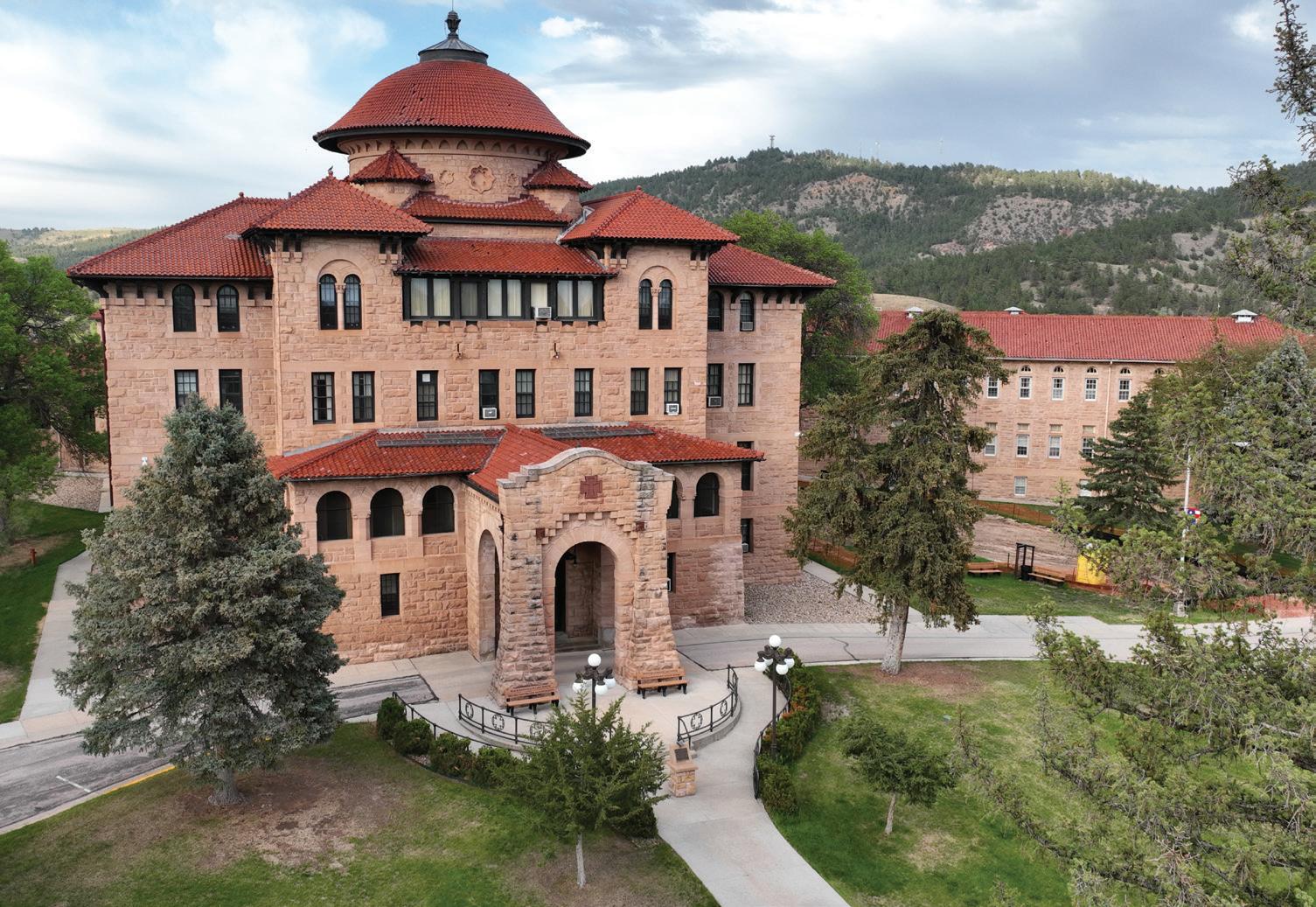
More than one hundred years ago, on May 29, 1902, the Battle Mountain Sanitarium was signed into law. Today, the facility that was formerly a sanitarium is part of the VA Black Hills Health Care System and is a National Historic Landmark. n The move to establish a national sanitarium in Hot Springs, South Dakota, began in the early 1890s. In Sept. 1898, the Grand Army of the Republic (GAR) passed a resolution at its National GAR encampment—held in Cincinnati that year—requesting that Congress establish a national sanitarium at Hot Springs. After several attempts, the bill was approved and signed by President Theodore Roosevelt on May 29, 1902. Citizens of Hot Springs donated the land, valued then as at least $50,000, for “This Home [that was] the child of the Grand Army.” n The Battle Mountain Sanitarium was the tenth and final facility built by the National Home for Disabled Volunteer Soldiers (NHDVS). Bath, the last National Home, was constructed in New York during the 1880s by the GAR. Battle Mountain was not intended for use as a soldier’s home; instead, it was a short-term treatment facility for current
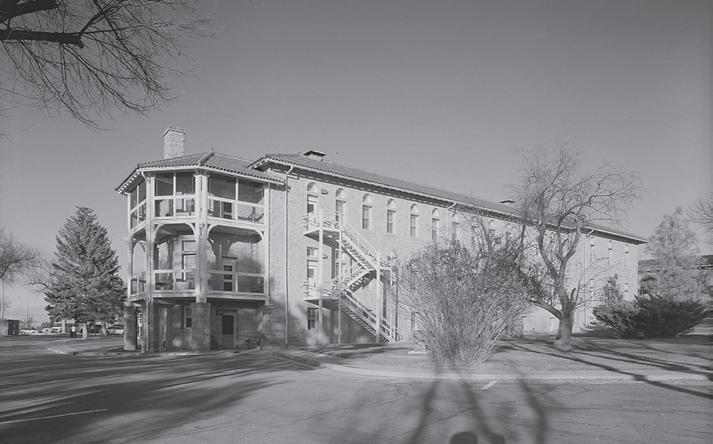
The facility is part of the VA Black Hills Health Care System and is a National Historic Landmark.
residents of the NHDVS who suffered from lung or respiratory problems. Their transportation costs to the sanitarium were paid for by the NHDVS. n According to NHDVS annual reports, “Preference was given to soldiers and sailors suffering from sub-acute and chronic rheumatism, neuritis, the early stages of interstitial nephritis, skin disease, and morbid conditions due to defective elimination. Cases of pulmonary tuberculosis where the general condition is such to justify a reasonable hope of recovery or improvement under favorable conditions shall be admitted to the Sanitarium. Applicants admitted for such time only as may be necessary to effect a cure or relief of the disabilities from which he is suffering. When a member has received all benefits that can reasonably be expected from the special treatment and various forms of hydrotherapeutics here available, he will be required to take his discharge from the Sanitarium or accept transfer to one of the Branch Homes. 336 beds could be increased to 416 whenever necessary.” n
The VA Black Hills Health Care System’s mission is to provide veterans with the world-class benefits and services they have earned—and to do so by adhering to the highest standards of compassion, commitment, excellence, professionalism, integrity, accountability and stewardship. VA Black Hills offers a wide range of health, support and facility services at the facility for veterans in South Dakota and the surrounding region.

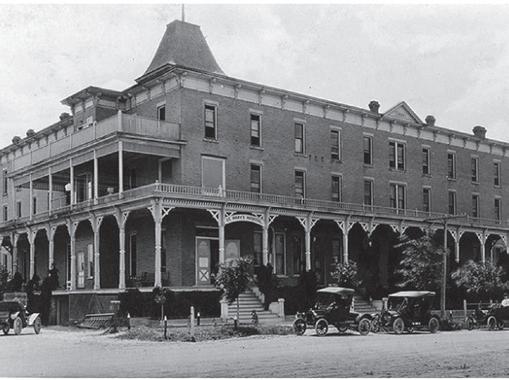
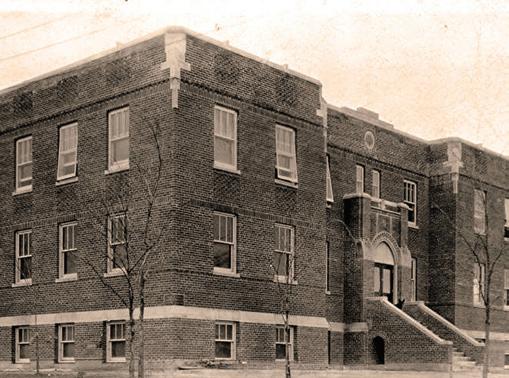



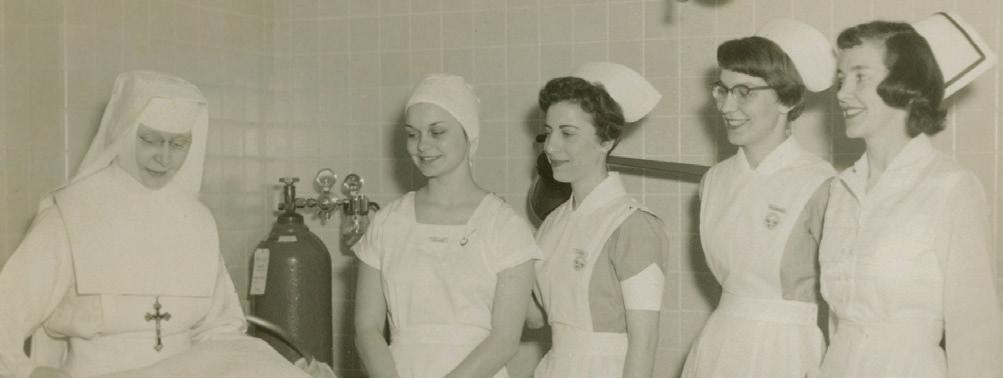

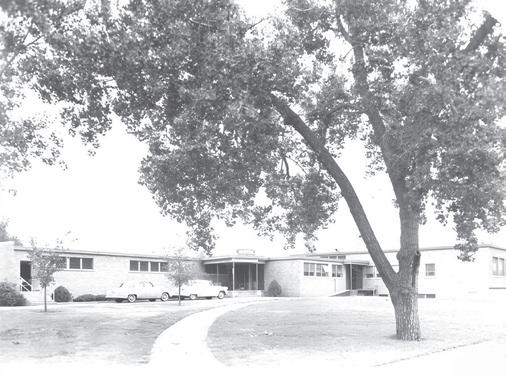

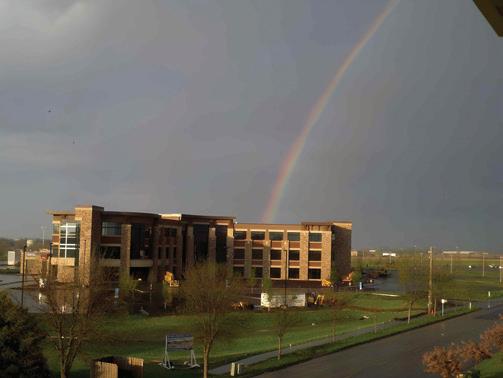
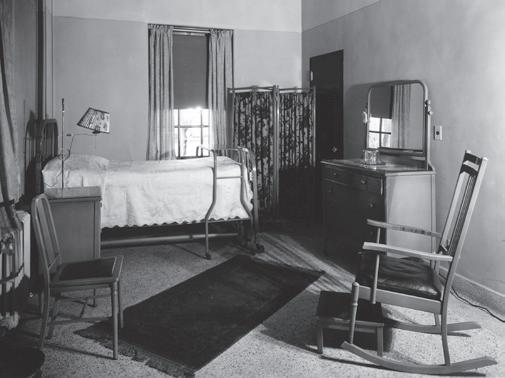
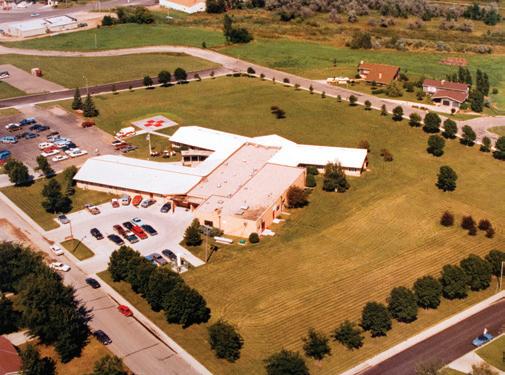
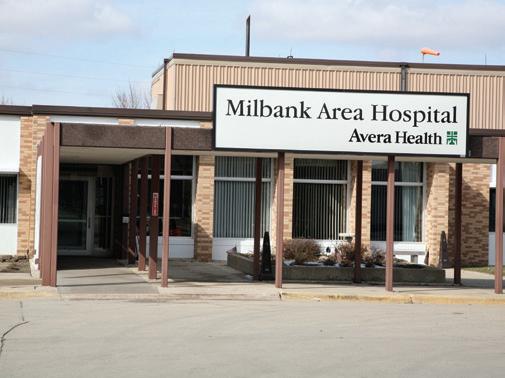

Avera Hand County Memorial Hospital
Miller
Avera Missouri River Health Center
Gettysburg
Avera St. Luke’s Hospital
Aberdeen
Avera St. Mary’s Hospital
Pierre
Bowdle Healthcare Center
Bowdle
Community Memorial Hospital – Redfield
Redfield
Coteau des Prairies Health Care System
Sisseton
Eureka Community Health Services Avera
Eureka
Faulkton Area Medical Center
Faulkton
Marshall County Healthcare Center Avera
Britton
Milbank Area Health Care Campus Avera
Milbank
Mobridge Regional Hospital & Clinics
Mobridge
Prairie Lakes Healthcare System
Watertown
Sanford Aberdeen Medical Center
Aberdeen
Sanford Webster Medical Center
Webster

Situated in the agricultural community of Miller in east-central South Dakota, Avera Hand County Memorial Hospital is a standout leader in patient satisfaction. The hospital has been named a Top 100 Critical Access Hospital in the Chartis Rural Hospital Performance Index every year since 2017 and has ranked among the top 20 several times since 2018. n The hospital was founded in 1947. In 2008, Hand County Memorial signed a lease with Avera Health, founded by the Benedictine and Presentation Sisters. This affiliation enhanced integrated health services through a providerbased system of care. The hospital maintains a partnership with the adjacent assisted living community, Courtyard Villa, and emergency medical service. The Hand County Health, Wellness and Community Foundation and the Avera Foundation assist the hospital in meeting community needs. n In 2014, the facility received a large inpatient expansion. The project resulted in larger private and semi-private rooms, new same-day surgery and recovery rooms, a new emergency department, renovated wellness and rehab areas, an expanded clinic and additional assisted living apartments. n Following a construction project in 2014, Avera Hand County Memorial made
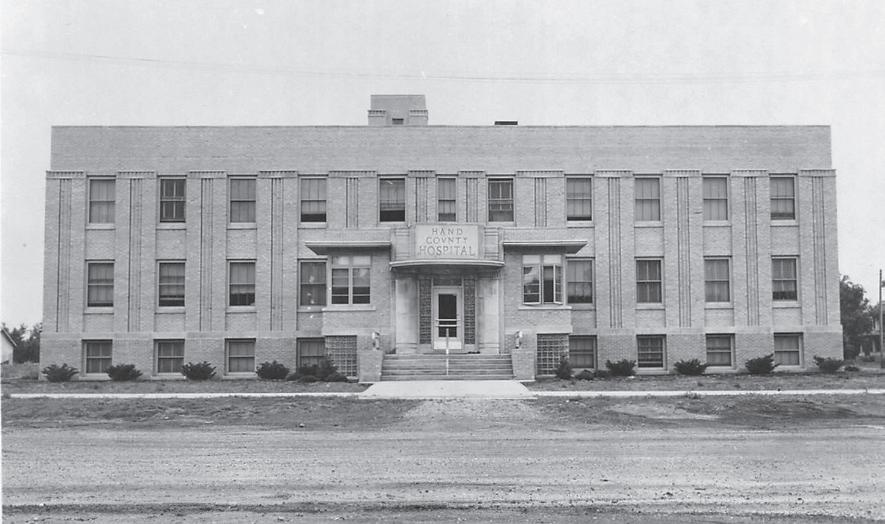
Meeting residents where they are bolsters the hospital’s commitment to accessibility and collaboration with community members.
significant upgrades to radiology and laboratory technology and cardiac-monitoring equipment. n Avera Hand County Memorial is staffed by family practice physicians, certified nurse practitioners, a physician’s assistant and over 70 other employees. The hospital is a regional partner for many outreach specialties, including audiology, cardiology, general surgery, orthopedics, podiatry and wound care. n With the next nearest hospital 45 miles away and the next nearest clinic 25 miles away, Avera Hand County Memorial provides vital inpatient, outpatient and clinic services to residents in Hand County and the surrounding region. Outpatient services include emergency services; physical, occupational and speech therapy; respiratory therapy; cardiac and pulmonary rehabilitation; laboratory services; and radiology. n The hospital is active in the community, frequently partnering with other organizations to host educational events that promote health and spread awareness on topics ranging from weight maintenance to opioid management. Meeting residents where they are bolsters the hospital’s commitment to accessibility and collaboration with community members.
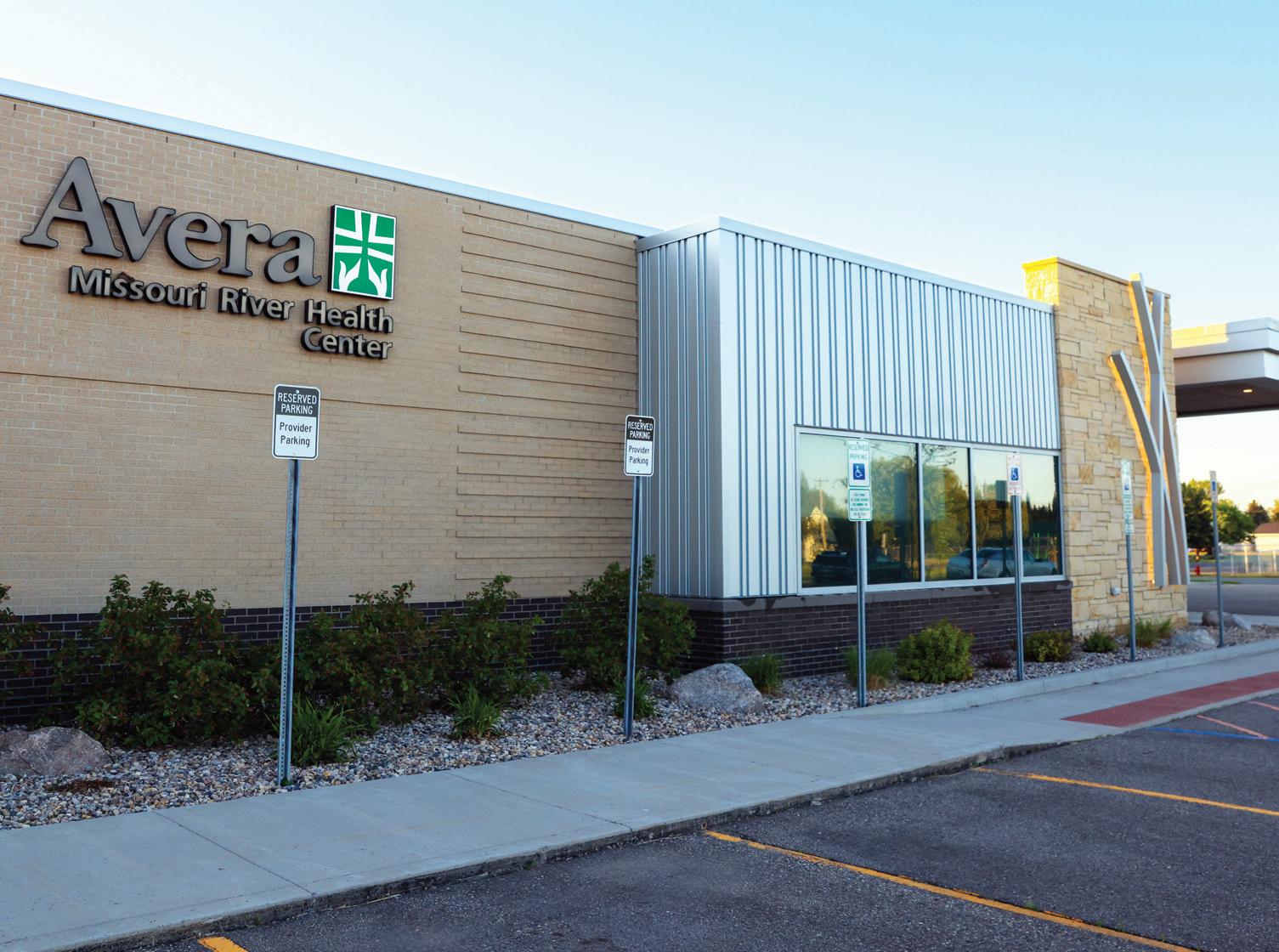
On Oct. 29, 1946, a board formed to plan an official hospital in Gettysburg, South Dakota. Funds were raised by the American Legion, which donated $10,000 in honor of World War I and II veterans, along with generous donations from community members. The first Gettysburg Hospital was complete on July 7, 1952, and was managed by Catholic Sisters. n In 2013, the Gettysburg Hospital joined the Avera Health system, founded by the Benedictine and Presentation Sisters. n Today, the Avera Missouri River Health Center and the Avera Gettysburg Clinic is a 21,800-square-foot facility that serves the Gettysburg region with an impressive scope of health care services within an innovative building design that serves as a model in the delivery of rural health care. n Constructed in 2019, the health campus offers an inpatient unit, emergency department, surgical suite, extensive imaging equipment, a laboratory, therapy gym and much more. The Avera Foundation led the fundraising efforts for the facility with a $3 million launch and it was assisted by the generosity of the Lynn and Foster Friess Family Foundation, which offered up to $125,000 in matching funds from charitable donors. n Today, Avera Missouri River Health Center provides a variety of services, including family and internal medicine, emergency care, telemedicine, a lab, physical therapy and long-term care. It offers an attached 40-bed nursing home, the Avera Oahe Manor, and Avera Oahe Villa—a six-unit independent living facility. The health center is also home to one of the few secured dementia care units in South Dakota. n In addition, specialized providers visit the Gettysburg facility throughout the month. These specialties include pain management, obstetrics and gynecology, podiatry and general surgery. n In 2016, the hospital upgraded to a 64-slice CT scanner. Patients can also schedule specialized imaging via mobile-imaging trucks for MRIs, DEXA scans and mammography. Technology is at work at the hospital, including
The mission-centered culture keeps employees around for decades— emphasizing their wealth of experience and well-rounded expertise.
two mobile telemedicine carts that visit patient rooms. An attached iPad and stethoscope allow for two-way video appointments with specialty providers. n Here, one not only finds neighbors caring for neighbors, but the mission-centered culture keeps employees around for decades—emphasizing their wealth of experience and well-rounded expertise. “We might be small, but we are mighty” is a saying that captures the strength and heart of Avera’s Gettysburg entities and staff. Avera Missouri River is a remarkable hub of complete care, serving families throughout their lifetimes.
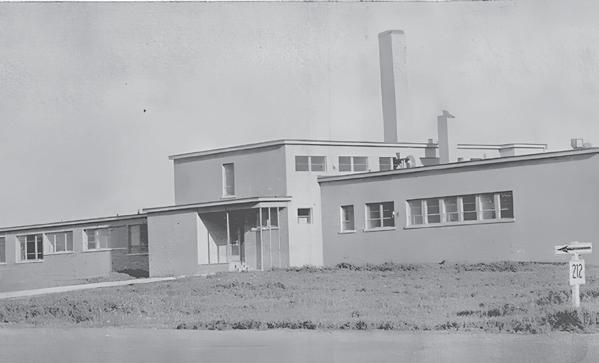

One of the very first hospitals on the Dakota plains, Avera St. Luke’s Hospital in Aberdeen has grown into a regional referral center for northeast South Dakota with a strong depth of specialties. Nationally recognized for quality, it has been named to top 100 lists for 10 consecutive years. n At the turn of the twentieth century, the Sisters of the Presentation of the Blessed Virgin Mary operated a school, but when a diphtheria epidemic struck, they converted classrooms to sick wards. Doctors and Aberdeen citizens asked them to establish a hospital, which opened with 15 beds in 1901—then three expansions took place by 1913 and another major expansion in 1928. n St. Luke’s was the focus of international headlines when the Fischer quintuplets were born there in 1963— guards protected the family from swarms of reporters. In 1972, a wing was added, creating a new entrance with a lobby, admissions and business office areas, a cafeteria and new patient rooms. n St. Luke’s consolidated with Dakota Midland Hospital in 1988 and, five years later, a wing was constructed to house emergency, admissions, surgery, outpatient services, dialysis, cardiac services, an MRI exam room and a laboratory. n The hospital merged with the long-term care facilities at Mother Joseph Manor. Davis Court
St. Luke’s was the focus of international headlines when the Fischer quintuplets were born there in 1963—guards protected the family from swarms of reporters.
independent living apartments and Nano Nagle Village, an assisted living facility, were added adjacent to the manor. n In 2000, St. Luke’s Hospital became part of Avera Health as the Benedictine and Presentation Sisters brought their health care ministries together as one system. A physical and aquatic therapy center opened in 2005, featuring the region’s largest therapy pool. In 2006, an addition housed the intensive care unit and Women’s Center. An imaging center and medical office building also opened. New operating suites and a same-day surgery area were added in 2009; then, in 2012, an addition to the therapy center opened. n Avera St. Luke’s has been a base for Careflight air-transport services for a number of years. Its 24/7 emergency department is a Level III trauma center. n
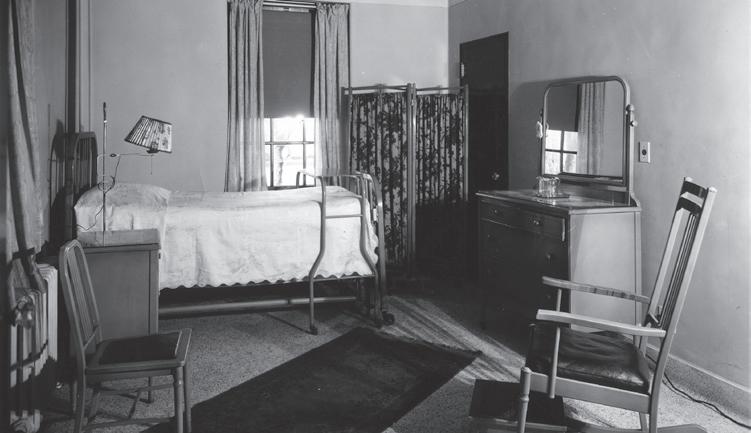
The Don & Carmen Meyer Center of Excellence was dedicated as the new home of Avera Cancer Institute in Aberdeen in 2015. Numerous specialties are offered in Aberdeen—orthopedics; heart and vascular; obstetrics/gynecology; nephrology; ear, nose and throat; occupational medicine; psychiatry; urology; pulmonology and more. Other specialties are available via telemedicine. n The Women’s Center underwent a remodel in 2023—its Angel Suite, Avera’s first ever, allows quiet space for families whose births did not go as planned. In 2024, Avera St. Luke’s created a new unit to improve on existing inpatient behavioral health care. n From a rich history to its ongoing commitment to offer the latest that medicine has to give, Avera St. Luke’s continues to build for the future.

The history of St. Mary’s dates back to the early 1880s, when Dr. D.W. Robinson was heading to the West Coast but found himself in Pierre at the end of the railroad. He began caring for patients, laying the foundation for future health care services in Pierre. n Five Benedictine Sisters cleaned up the abandoned Park Hotel, intending to use it as a school. But, recognizing an even greater need—health care—for the town, they turned it into a hospital in 1899. By the 1920s, St. Mary’s was among the first hospitals in South Dakota to become accredited. n A new hospital was constructed in the 1930s. Avera Maryhouse Long-Term Care was added in 1953, and Avera Parkwood senior apartments were built nearby in 1988. n In 1999, a $12 million expansion allowed for improved patient care, parking and privacy with an emergency room, ambulatory care unit, a new lobby, waiting rooms and surgery and recovery. Its Women’s Center features labor, delivery and recovery rooms designed to feel like home. In 2004, an addition housed respiratory care, a pharmacy, dialysis, transitional care and rehabilitation services. Capital City Campus (CCC) is located on St. Mary’s campus and offers university classes, including a two-year nursing program. St. Mary’s is also a site for family medicine physician residency, the Frontier and Rural Medicine (FARM) medical student program and several apprenticeship programs. n In 2013, St. Mary’s Healthcare Center transitioned from Catholic Health Initiatives (CHI) to join Avera Health, founded by the Benedictine and Presentation Sisters. Renamed Avera St. Mary’s Hospital, it serves as one of six regional centers in the Avera system, the

By the 1920s, St. Mary’s was among the first hospitals in South Dakota to become accredited.
only regional referral center of its size within a radius of 112 miles. Avera St. Mary’s receives top quality ratings and has been named on top 100 lists. n Patients benefit from a full range of health services, from primary and specialty clinic visits to outpatient procedures and inpatient care. Specialized services include 24/7 emergency care, pregnancy and birthing, cardiac care, cancer care, orthopedics, vein care, rehabilitation, sameday surgery and inpatient surgical procedures. n Cancer services at Avera St. Mary’s were enhanced with the construction of the 57,000-square-foot Helmsley Center in 2018. This project marked the first time radiation oncology treatments were offered in Pierre, closer to home for regional residents. Other specialties housed in the Helmsley Center include orthopedics and podiatry; interventional pain medicine; dermatology; ear, nose and throat; urology and specialty outreach clinics. n A new obstetrics surgical suite in the Women’s Center creates a more streamlined care experience. Innovation also enhances the hospital’s medical expertise and specialty care, including its robust telemedicine services and a virtual nursing program.
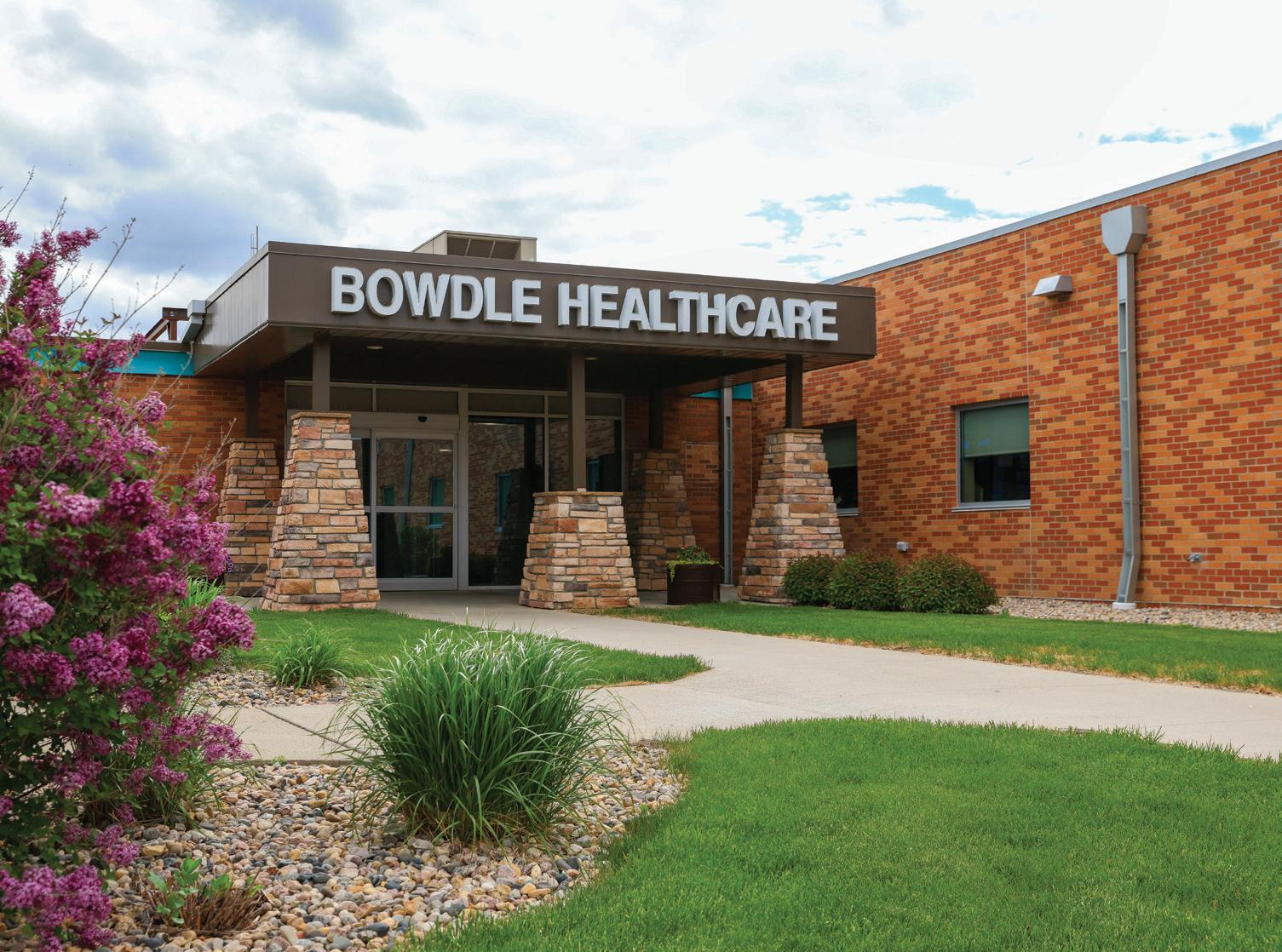
The first hospital in Bowdle was built by Dr. William Edwards in 1886. Then, in 1918, he built what is known today as the “Old Bowdle Hospital.” It offered a reception area, two patient rooms, a laboratory, examination room and operating room. In 1927, the Bowdle Community Hospital Association was formed and shares were sold for $100. This money was used to add a large operating room and five patient rooms. Shares were sold again in 1940 and, with that money and $17,000 in donations, renovations and improvements were made following World War II. n In 1949, the hospital association deeded the property to the city and a governing board was created with three city council members and two citizens appointed by the mayor. From 1940 to 1951, the hospital had no permanent doctor and nurses worked under the direction of doctors in nearby Hosmer, South Dakota. The hospital closed in May 1951 due its lack of a doctor and financial deficits. n With the arrival of Dr. Rainis Berzins, a native of Latvia, the hospital reopened in 1954. In the late 1950s, with community fundraising, the first X-ray equipment was purchased. In 1959, Hill-Burton Act funds provided money and plans were put in place to expand and build anew. Edward Schmidtgall donated land and the hospital auxiliary raised money and received aid from the state board of health. On June 3, 1962, the current hospital was dedicated. n In 1984, the facility instituted a new swing-bed program.
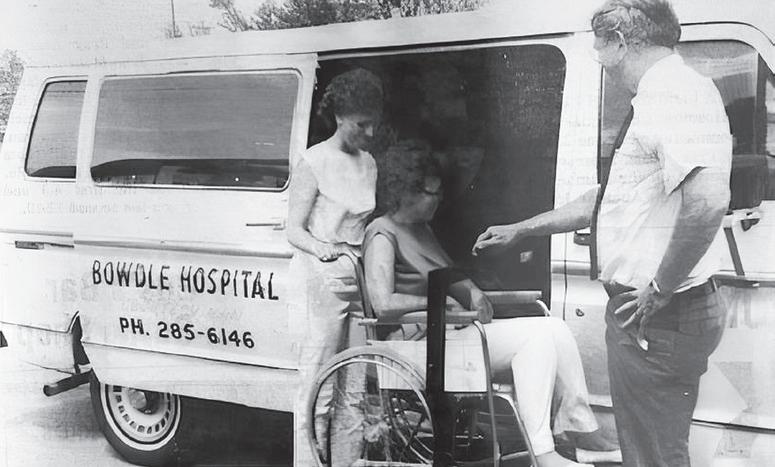
Today, the Bowdle Healthcare Center continues to upgrade and renovate in order to provide the best possible care to area patients.
At the time, two beds had been dedicated to swing bed, this expanded them to 14. In Jan. 1985, the city delegated the hospital’s management to Westworld Community Healthcare Inc. This lease was terminated in 1987, and the city resumed the facility’s management operations. n In the late 1980s and early 1990s, a new financial software program and new ambulance were purchased and physical therapy services were offered thanks to a Rural Health Transition Grant. In 1994, the hospital and nursing home buildings were connected through a multipurpose center. This included a large dietary department, laundry area, therapy department, administrative and business offices, medical records department, community meeting room, wellness center and handicapped-accessible restrooms and showers. n On Jan. 1, 2001, the hospital was designated a critical access hospital. In 2010, computerized radiology equipment was purchased along with endoscopic equipment. Today, the Bowdle Healthcare Center continues to upgrade and renovate in order to provide the best possible care to area patients.

Community Memorial Hospital–Redfield was built in 1950 as a short-term general hospital offering eight bassinets and diagnostic services in laboratory and X-ray, treating both medical and surgical patients. In 1968, an addition updated the bed capacity to 44. Considerable remodeling was undertaken to meet the needs of a growing community. An ambulance service was added in 1972. n In 1991, a clinic was added, decreasing the bed capacity to 25. The hospital and clinic were purchased by the City in June 1993 and, in June 2000, it was designated a critical access hospital. n The hospital held a campaign, “Our Commitment to a Healthy Future,” raising funds toward a $6.2 million expansion and renovation project that began in spring 2009. The 17,000-square-foot addition provided 13 new inpatient rooms, two cardiac-care rooms, two emergency rooms, a pharmacy, a patient registration area and a new ambulance/emergency entrance. The renovation remodeled approximately 9,500 square feet of the hospital, including an operating room, recovery room, ambulatory surgery rooms, visiting-specialist room, outpatient treatment center, bone-density scanning room, ultrasound room and other support services. n The hospital and clinic recognize the value of every patient and are committed to excellence and leadership. Its mission is to improve the health of every person it serves through the efficient delivery of excellent innovative and compassionate care. n The Community Memorial Hospital Auxiliary is the longest-serving chapter in the history of South Dakota. Its purpose is to enhance and support, through volunteers, the quality of services provided for the comfort, care and well-being of patients and the related needs of their families, visitors, staff and community. n In addition, the hospital was honored as a 2022 and 2023 Top 100-status facility for charter hospitals by the Chartis Center for Rural Health. In 2024, it was recognized in two categories of the Chartis Rural Hospital Performance Index—patient experience and quality. n The hospital addressed a critical shortage of first responders and emergency medical services
Auxiliary is the longest-serving chapter in the history of South Dakota.
in its rural communities, assisted by the late Matthew P. Owens, MD, by teaming up with Agtegra Agricultural Cooperative and the University of South Dakota Sanford School of Medicine to provide first responder training for approximately 100 Agtegra employees. From that pool, approximately 30 percent moved on to emergency medical technician (EMT) training, including Stop the Bleed, Narcan use for opioid overdose and automated external defibrillator (AED) operation topics. n Agtegra was chosen as a partner in that effort in order to make a significant impact on health care in rural areas through that organization’s employees and farmers. The Sanford School of Medicine prioritizes training medical doctors to practice in rural South Dakota. Together, this partnership has met a significant health care need in the area.
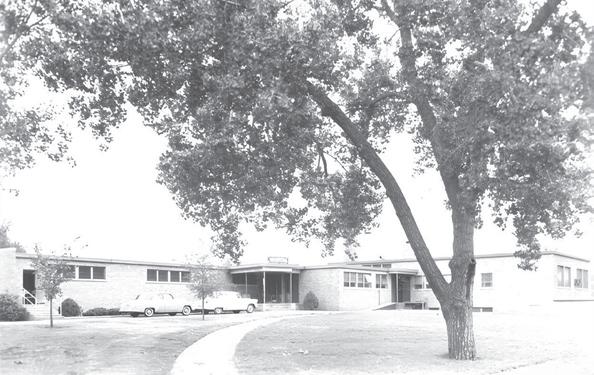
The
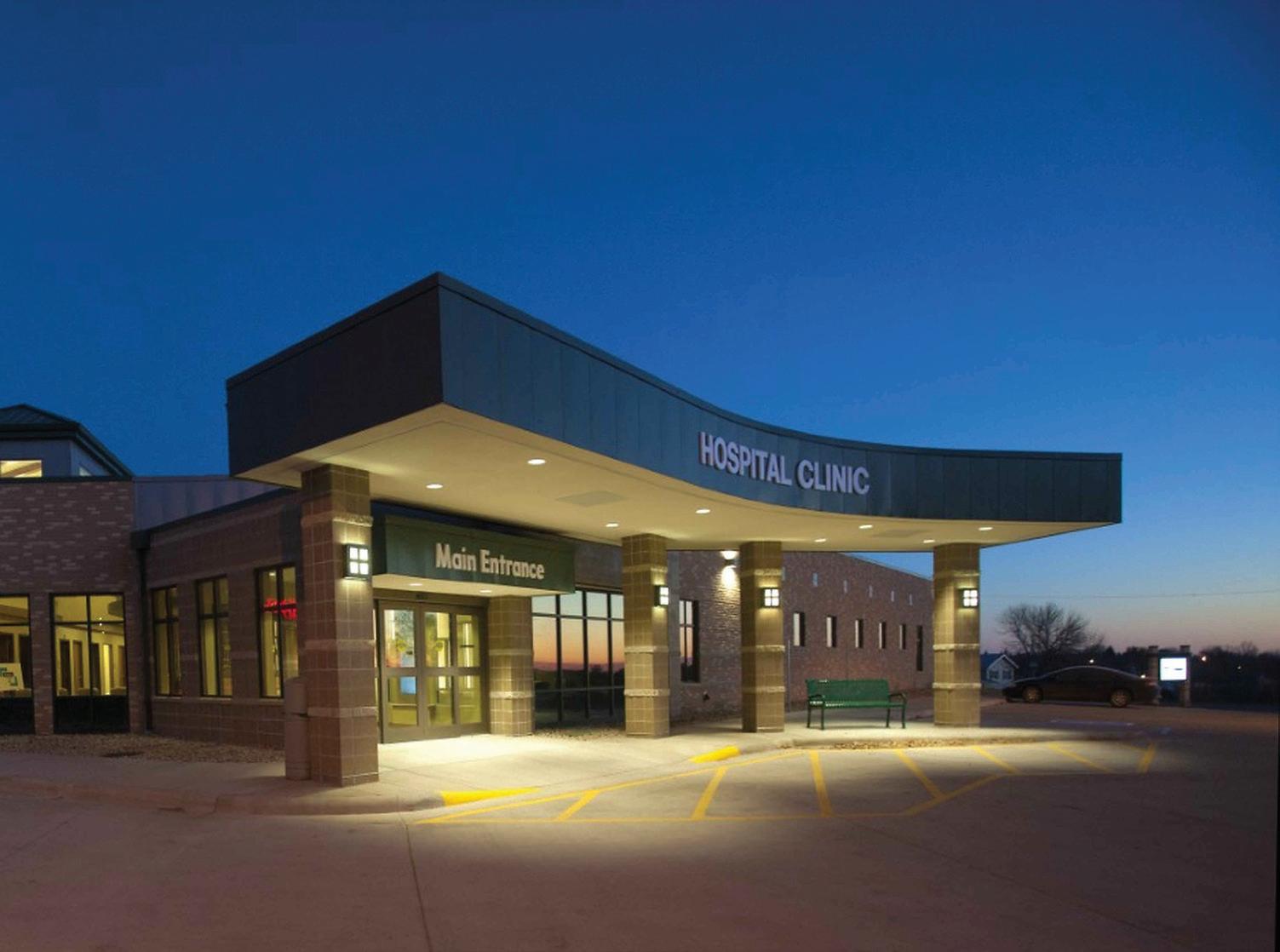
In 1967, the rolling prairie landscape of northeastern South Dakota welcomed a health care institution that would become a cornerstone of community wellness for generations to come. Coteau des Prairies Hospital was established as a non-profit hospital with a 31-bed capacity, designed to serve the unique health care needs of the region’s rural population. From its inception, the facility distinguished itself through its commitment to excellence, quickly earning recognition as one of the best-equipped medical facilities in the Midwest. n The hospital’s physical presence has evolved significantly over the decades. In 1972, just five years after opening its doors, Coteau des Prairies expanded to include a medical clinic and dentist office. Two decades later, in 1992, the facility underwent another significant expansion with the addition of a kitchen and cafeteria, enhancing the patient experience. By 1996, the hospital’s footprint grew again with the completion of a wellness center, expanded dining area and a dedicated dental clinic, reflecting a commitment to preventative care and holistic wellness. A major expansion in 2013 transformed the emergency, clinic, laboratory and radiology departments, equipping these critical areas with state-of-the-art technology and space to meet growing needs. n Throughout more than 55 years of service, Coteau des Prairies has achieved remarkable medical accomplishments. Most notably, the hospital secured recognition as a Top 20 Critical Access Hospital for Best Practice in Quality by the National Rural Health Association in 2024 and 2025, validating decades of dedication to exceptional care standards. The facility has also demonstrated uncommon financial stability for a rural health institution despite challenges faced by many similar facilities
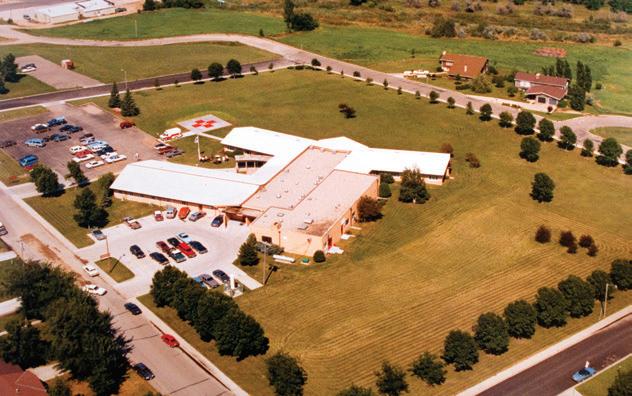
The hospital’s enduring presence has allowed countless patients to receive excellent care close to home, in the heart of the prairie.
across America. Perhaps most impressively, Coteau des Prairies has successfully integrated advanced medical technologies typically found only in urban centers, including 3D mammography, in-house MRI and CAT scanning and a comprehensive electronic health record system, bringing sophisticated diagnostic and treatment options directly to its rural communities. Coteau des Prairies also operates three rural health clinics ensuring that rural residents receive the care they need. n Today, the facility is known as Coteau des Prairies Health Care System—standing strong as more than a hospital. It represents a steadfast commitment to the health and wellbeing of generations of South Dakota families. In a health care landscape where rural communities often struggle to maintain access to quality medical care, this institution provides comprehensive services ranging from preventative wellness initiatives to specialized treatments and emergency services. The hospital’s enduring presence has allowed countless patients to receive excellent care close to home, in the heart of the prairie, surrounded by health care professionals who understand the unique character of their community. n Looking to the future, Coteau des Prairies remains dedicated to its mission: delivering compassionate, high-quality health care services that empower the region to thrive for generations to come.
A CENTURY STRONG: HONORING OUR PAST, SHAPING OUR FUTURE Eureka Community Health Services
Providing Quality, Accessible and Compassionate Health Care for the Region
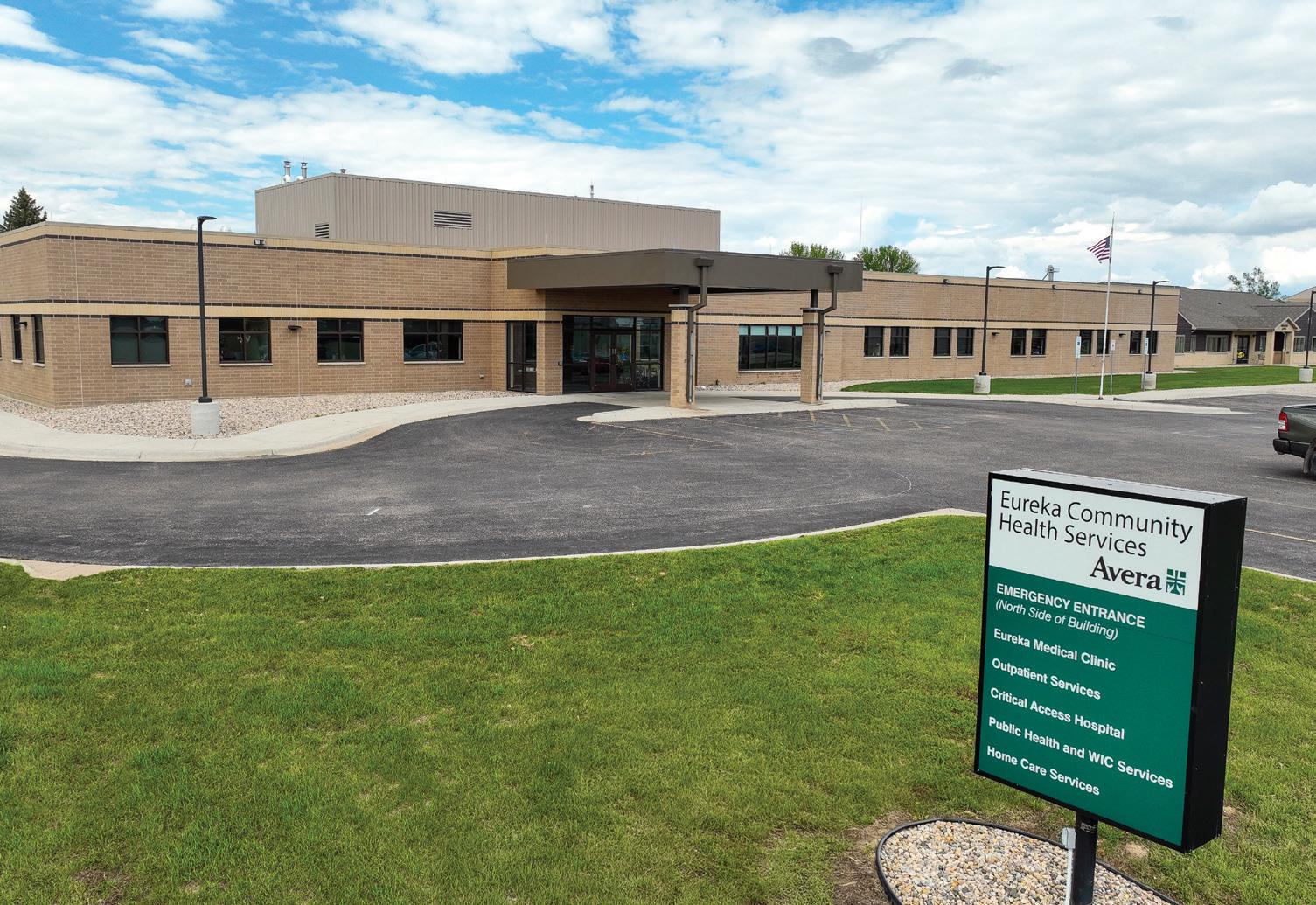
Eureka Community Hospital dates back to 1929, when it opened as a charitable, funded facility operated by the community of Eureka and consisting of 26 beds. The original facility was greatly enhanced with the addition of a new wing between 1964 and 1965. Six private and five semi-private patient rooms, a renovated kitchen and enclosed fire escapes and stairways were constructed. The lower levels of the new wing provided adequate space for X-ray, lab and clinic quarters. In 1978, the surgery, delivery and patient rooms were updated. A new structure provided a medical records department, administration office and conference room. In 1995, the facility ceased to deliver babies. n In 1996, Presentation Health System and St. Luke’s Hospital signed a management agreement with Eureka Community Hospital. Then, in 1997, the facility moved its emergency room, downsized to six beds on the medical floor and added 11 assisted living units. Due to many changes, in 1998 the facility became Eureka Community Health Services
Avera, a critical access hospital (CAH). n In 2000, a new elevator was installed and, in 2005, the lab department was relocated and the facility began to offer endoscopy services. In 2016, the
In 1998, the facility became Eureka Community Health Services Avera, a critical access hospital (CAH).
facility purchased the Eureka Medical Clinic, renamed it the Eureka Medical Clinic Avera, and a capital campaign raised $1 million for a new hospital, clinic and assisted living facility all on one campus, opened in Jan. 2019. Now, the campus offers a four-bed CAH, rural health clinic, 14-bed assisted living facility and 56-bed skilled nursing facility (Avera Eureka Health Care Center). Eureka Community Health Services Avera’s primary medical staff includes three advanced-practice providers and one supervisory physician, two certified physician assistants (PA-Cs) and one nurse practitioner. n Other services offered include a radiology department with an in-house CT; X-ray; laboratory; physical, occupational and speech therapy; emergency services; wound care and cardiac rehabilitation. Outpatient endoscopy and nutrition counseling and education are provided by outreach physicians and providers. Telemedicine is the delivery mechanism for such specialty services as psychiatry, infectious disease treatment and others. Mobile radiology services offered are MRI, ECHO, ultrasound, Dexascan and mammography. West McPherson ambulance services consist of 27 dedicated community volunteers with two ambulances onsite. The hospital employs 49 people. n Throughout the years, the hospital and clinic have striven to provide quality, accessible and compassionate health care for the region.

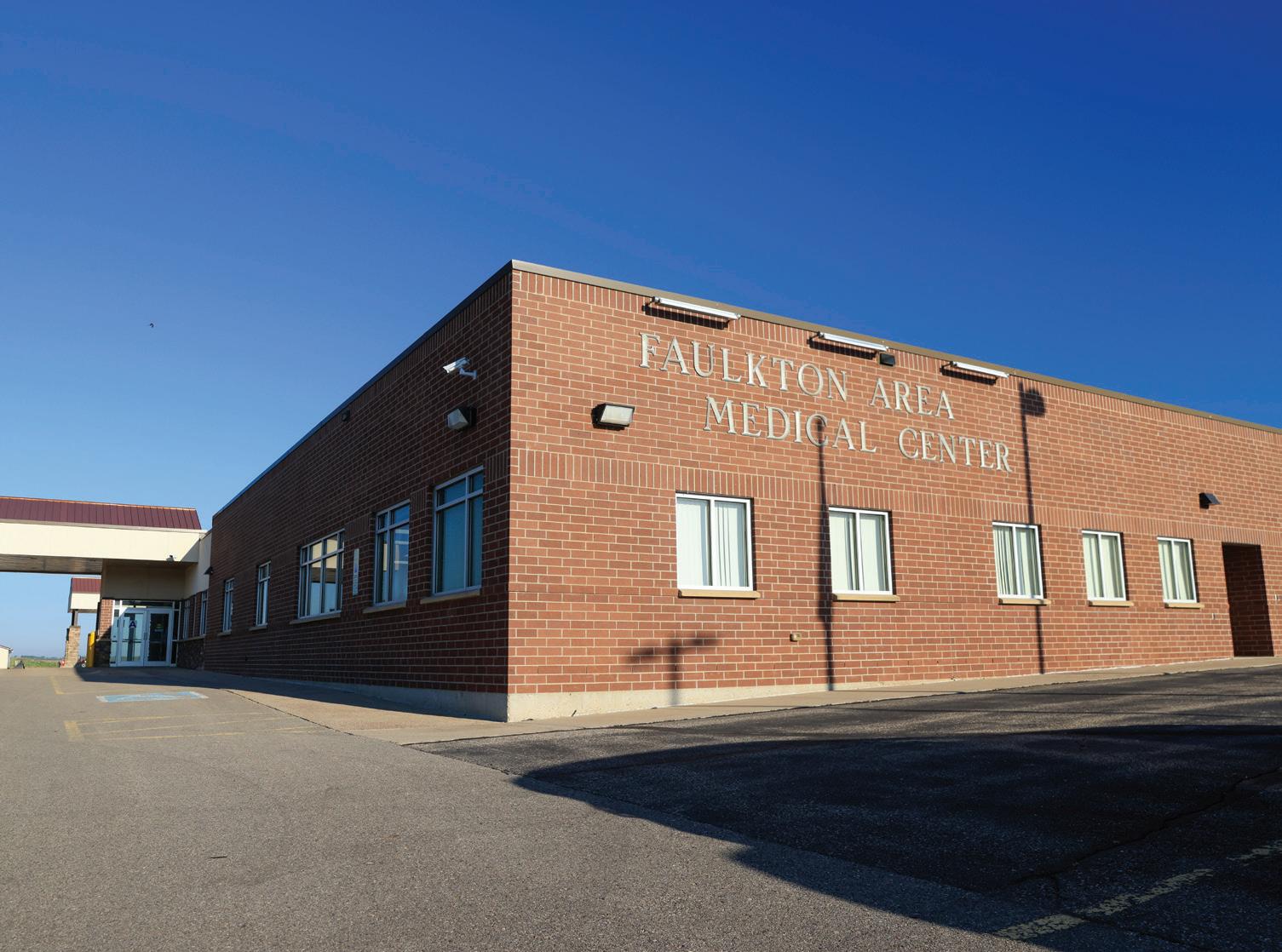
Faulkton Area Medical Center (FAMC) is a 12-bed critical access hospital and rural health clinic, complete with state-ofthe-art MRI and CT scanners—attached to a 46-bed nursing home and 22-room assisted living center. How does a town of only 800 people manage this? n Turn back the clock more than 130 years. Abbie Ann Jarvis moved to Faulkton with her father, a physician, in 1888. She became the first female pharmacist in South Dakota, briefly running a pharmacy, then became the first female physician licensed in the state in 1898, serving until her death in 1931. n A refurbished house was used as Faulkton’s Providence Hospital from 1917 to 1951 but became critically outdated. In 1949, a bond issue, coupled with HillBurton Act funds, allowed the construction of a modern brick structure—Faulk County Memorial Hospital (FCMH)—opening in 1951. Between 1966 and 1968, a 34-bed facility was added. n Presentation Health System of Aberdeen leased the hospital in 1983 and, in 1984, signed a management agreement with it. A new clinic was added in 1992. The hospital became independent again in 1993. n FCMH was certified as the first rural primary-care hospital in the nation in Sept. 1993, licensed for six acute and six swing beds, managed by Lutheran Health of Fargo, then by Tealwood of Minneapolis from 1994 to 1998. In 1998, it became a critical access hospital and rural health clinic. In Aug. 2000, the facility became independent again. n In 2004, FCMH became the only South Dakota health care institution to receive funding through loans and grants to replace its aging hospital—one of only 32 facilities in the nation to receive this
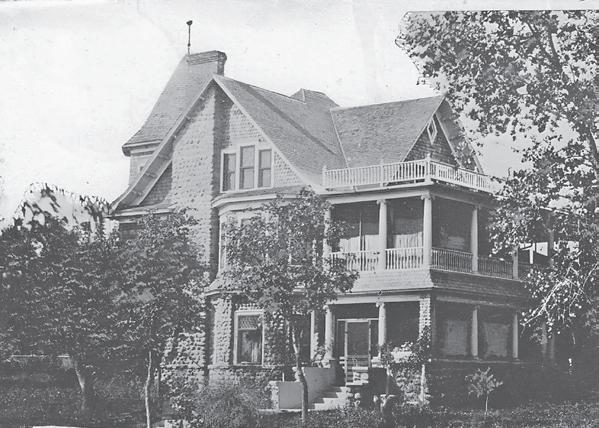
Abbie Ann Jarvis moved to Faulkton and became the first female pharmacist in South Dakota, then the first female physician licensed in the state in 1898.
highly coveted resource. Property next to the Faulkton Senior Living nursing home and The Meadows assisted-living center was donated—allowing connection of the three facilities. n That same year, the FAMC Foundation was founded and a campaign funded the purchase of equipment, upgraded technology and an endowment for the hospital and clinic. n In June 2007, a state-of-the-art CT scanner was installed and the facility was officially named Faulkton Area Medical Center. In 2011, an addition created a new patient-registration area, meeting room, therapy department and outpatient center— now used for outreach providers. n In Nov. 2017, yet another addition created a new Outpatient/Infusion Center for cancer patients to receive treatments close to home. In Nov. 2020, an all-weather ambulance drive-through was built, used by COVID-19 patients for testing without leaving their vehicles. In April 2023, an MRI was installed, drawing patients from more than 100 miles away. n How does a town of only 800 people manage this? Never give up—if you aren’t moving forward, you’re sliding back.

Dr. D.B. Rice opened a medical office in Britton, South Dakota, in 1922. Thanks to his dedication and commitment, the city’s first hospital was built in 1928. According to a 1944 newspaper article, he provided the land, furnished the equipment, and agreed to operate the hospital for 15 years. The structure served as the hospital until 1963. Dr. and Mrs. Rice also founded an accredited nursing school in Britton in 1929 before retiring in 1944. The program graduated 40 students over a 10-year period. n In 1963, utilizing federal Hill-Burton Act grant dollars, memorial donations and county funds, a new hospital and attached clinic were built. The Marshall County Memorial Hospital (MCMH) was owned and operated by the County. n An assisted living center was added in 1997, therapy and wellness center in 2004 and new clinic in 2022. Built in the wake of the COVID-19 pandemic, the clinic features a separate entrance and dedicated exam rooms for patients with contagious symptoms. n Services provided by MCMH have grown over the past 62 years. Maternity and surgical services are now referred to more specialized providers, but the hospital offers physical and
A program called WOW (Warmest of Welcomes) expresses a belief that everyone who enters should be shown kindness, respect and hospitality.
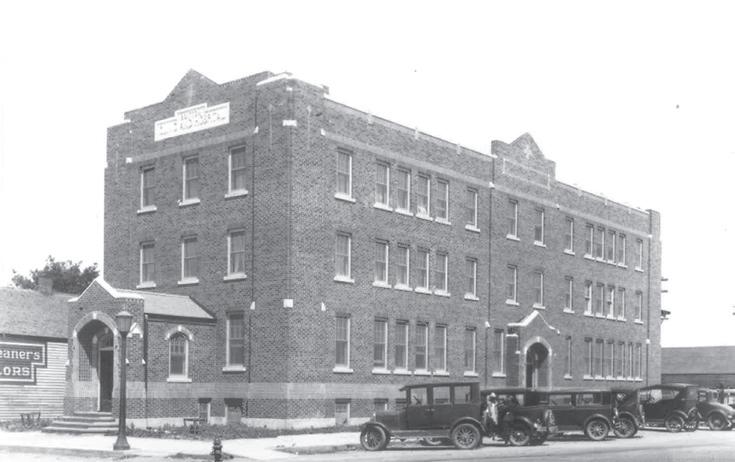
occupational therapy, cardiac rehab, home health, assisted and independent living, ultrasound, mammography, endoscopy, sleep studies, a wellness center and more. Radiology improvements included CT scans in 2017, digital X-ray in 2019 and MRI in 2025. A newly remodeled lab was completed in 2024 to accommodate growing patient numbers with new testing equipment. In 1963, the facility had a staff of 48, but it employs more than 110 people today. n MCMH’s relationship with Avera began in 1983 when the Presentation Sisters and St. Luke’s Hospital in Aberdeen entered into an agreement with Marshall County to manage operations. A Partners in Health Agreement is still in place now. n To formally recognize the facility’s growth, it adopted the name Marshall County Healthcare Center (MCHC) in 1997. It was designated a critical access hospital in 2000 and its clinic (previously independently owned) was purchased in 2015 and designated a Provider Based Rural Health Clinic. These federal designations help cover the cost of providing health care in rural areas. n Begun in 2004, a program called WOW (Warmest of Welcomes) expresses the facility’s culture, a belief that everyone who enters is a guest who should be shown kindness, respect and hospitality. This key factor has fostered the facility’s amazing team of caring professionals who proudly provide “Quality Care, Close to Home.”
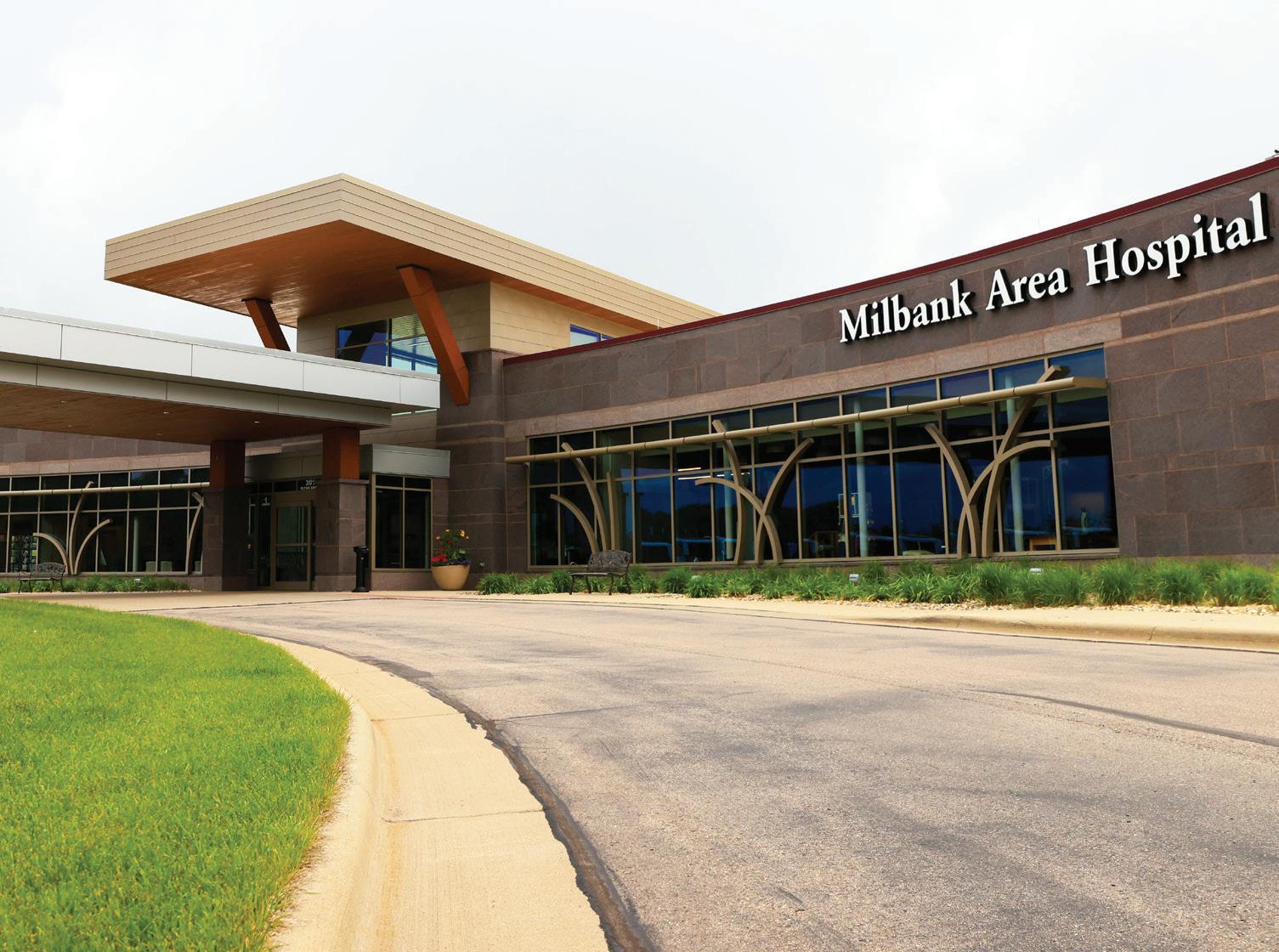
For more than a century, Milbank Area Hospital Avera has served northeast South Dakota with compassionate care. Today, its newly constructed hospital stands as a testament to the region’s commitment to advanced health care, combining the latest medical technology with a patient-centered approach designed for comfort and healing. n Health care in Milbank was initially offered in residents’ homes. But construction began on its first hospital in 1920 with the establishment of St. Bernard’s Providence Hospital by the Daughters of St. Mary of Providence, named after the Chicago hospital where the founding nuns received their training. n This early hospital in Milbank set the foundation for faith-based, community-driven care in the region. As health care needs grew, a replacement hospital was opened in 1969 and, over the years, the hospital evolved with a renovation project adding services in radiology and enhancing services in obstetrics and surgery. n In 2002, the Daughters of St. Mary of Providence transferred the hospital’s ownership to the community, and it was renamed the Milbank Area Hospital Avera. It is guided by the Milbank Area Hospital Foundation, partnering with Avera to enhance its reach and expertise. n Through a shared vision for the future of health care in the region and a need for a more-modern facility, the third and current Milbank Area Hospital Avera opened its doors in 2016. It offers a comprehensive range of medical services, ensuring that families in the region have access to expert care close to home. The facility features modern patient rooms equipped with advanced technology, a spacious emergency department for immediate
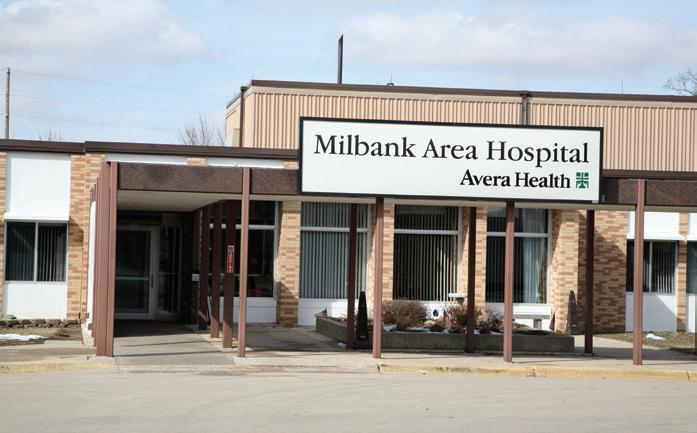
Comprehensive services allow residents the confidence to manage their health in a place they know.
and critical care and specialized areas for diagnostic and radiology imaging, laboratory testing, rehabilitation services, chemotherapy and surgical services—including general surgery and orthopedic procedures. Another key service provided is primary care, including family medicine for patients of all ages, as well as specialized care in obstetrics. Additionally, telemedicine, a range of visiting specialists available for comprehensive care and an independently owned retail pharmacy are available. n Comprehensive services close to home strengthen northeast South Dakota, allowing residents the confidence to manage their health in a place that they know. Avera’s Milbank clinic supports satellite clinics in Big Stone City, Revillo, Waubay and Wilmot. n Today, Milbank Area Hospital Avera continues a rich health care tradition, blending nearly a century of compassionate care with modern medical advancements. It has received multiple recognitions as a top critical access hospital in the country. Through its dedicated medical staff and health care professionals, the hospital is committed to its mission to improve the health and well-being of communities it serves now and will serve for generations to come.

Mobridge Regional Hospital and Clinics (MRH&C), located along the rolling banks of the Missouri River in Mobridge, South Dakota, is an award-winning, independent health care organization with a rich history dating back to July 12, 1959. Originally opening its doors as Mobridge Community Hospital with just 50 staff members, it offered basic health care services such as radiology, laboratory, operating room, anesthesia, obstetric and general medical services. The facility has grown from a modest provider into a comprehensive regional institution serving a five-county area. n As the years passed and demand for services quickly outgrew the original 1959 facility, the hospital expanded both in size and service offerings. The first expansion, in 1966, added a medical records department, medical library and pharmacy expansion to accommodate Medicare requirements. The introduction of an intensive care unit in 1977 marked a significant milestone, accompanied by new recovery rooms, a remodeled visitor’s lounge, generator, updated laboratory, designated area for Auxiliary activities and the addition of nuclear medicine and EEG services. Further additions included surgery and endoscopy suites in 1991, new inpatient beds and expanded emergency department services in 1998, the addition of an assisted living and senior housing facility (Prairie Sunset Village) in 1998 and a new main entrance and physical therapy space in 2013. n In 2022, MRH&C broke ground on its largest construction and renovation project to date, adding over 32,000 square feet of space, including a new patient wing and an improved inpatient pharmacy and infusion center. n Employment of professional staff was challenging in this rural location, spurring the creation of a local Scholarship Committee in 1963. Another milestone came in 1987 when the hospital’s name was changed to Mobridge Regional Hospital and Clinics, reflecting its expanded role as a regional provider. The MRHC Foundation, established in 1991, focuses on community engagement, fundraising, scholarships and supporting expansion of services. n Today, MRH&C operates a 25-bed critical access hospital as well as four rural health clinics in Mobridge, Selby, Timber Lake and McLaughlin, a 24-bed assisted living and senior housing
The facility has grown from a modest provider into a comprehensive regional institution serving a five-county area.
center and a rural ambulance service. Services offered include medical, surgical, obstetrical, intensive care/coronary care, emergency room, home health and swing bed services, a full CLIA-certified laboratory, advanced radiology department, fully equipped cardiac and pulmonary rehabilitation center and a broad range of inpatient, outpatient and surgical services. n An award-winning organization with an award-winning staff, MRH&C proudly received the Top 100 Critical Access Hospital designation from the Chartis Center for Rural Health six of the past eight years and was named a Top 20 Critical Access Hospital in 2023. MRH&C is commited to growth, innovation and meeting the health care needs of the community, now and into the future.
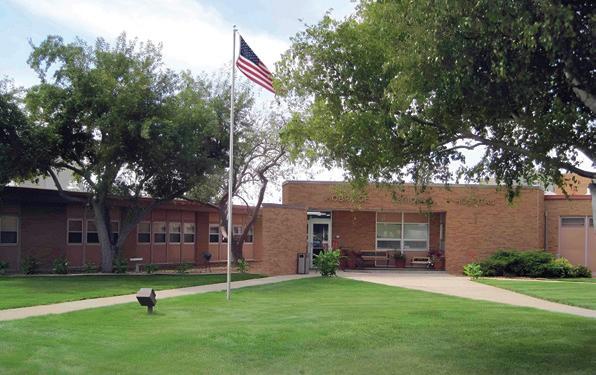
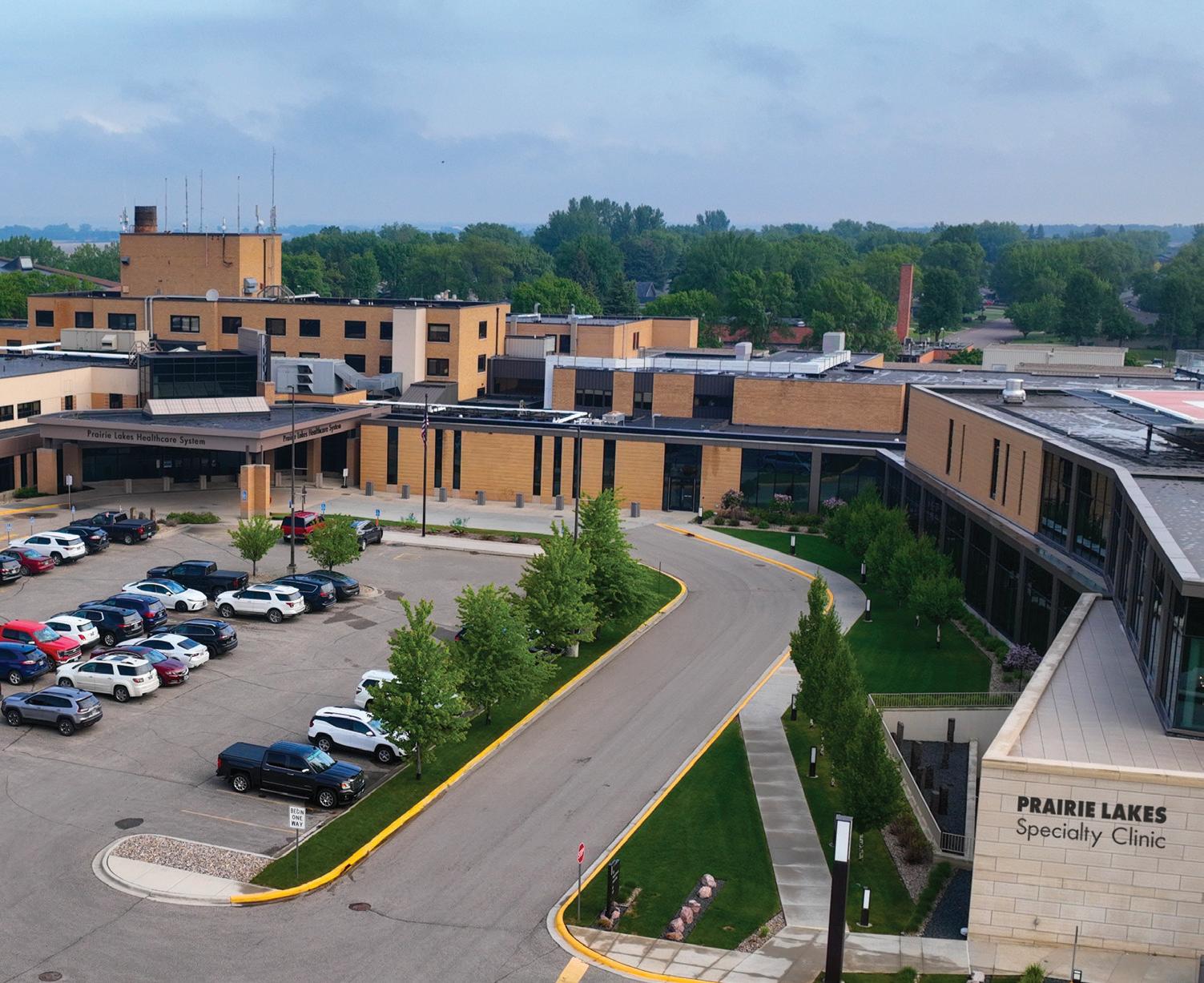
Prairie Lakes Healthcare System (PLHS), located in Watertown, South Dakota, was established in 1986 through the consolidation of St. Ann’s Hospital and Memorial Hospital. This unification marked the beginning of a new era for health care in the region. A pivotal moment came eight years later, in 1994, with the addition of a three-story expansion to house an intensive care unit and medical, surgical and pediatric inpatient services, which are still a vital part of the hospital today. n Evolving to meet the region’s health care needs, the Prairie Lakes Cancer Center, opened in 1999, provides life-changing care, becoming a cornerstone of the community. The Prairie Lakes Cancer Center offers cutting-edge technology and a multidisciplinary approach. The launch of the Cardiology Program in 2006 introduced advanced heart care, including the first cardiac catheterization case in 2007. The PLHS cardiac catheterization lab has become a major foundation of care in the region. More recently, in 2018, PLHS expanded care with the Prairie Lakes Specialty Clinic, offering a comprehensive range of specialty services including 10 medical specialties, such as rehabilitation services and a warm-water therapy pool. n Prairie Lakes strengthened its commitment to accessible, high-quality health care with two key acquisitions in recent years. In 2022, the organization acquired Glacial Lakes Orthopaedics, enhancing its orthopedic service offerings. In 2024, the acquisition of Brown Clinic integrated primary care into Prairie Lakes’ expanding network. These strategic moves reinforce their dedication to providing comprehensive medical
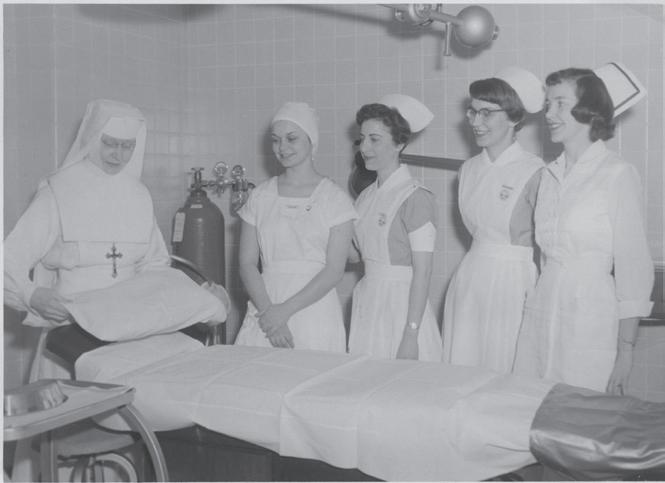
Rooted in its history, PLHS remains forward-focused, embracing advancements that improve lives.
services to the region, ensuring patients have access to a broad spectrum of care close to home. n Prairie Lakes continues to lead with innovation, introducing services like Mohs surgery for skin cancer, robotic bronchoscopy to detect early-stage lung cancer, personalized shoulder procedures using advanced software, shockwave technology during heart procedures and iovera therapy for knee-replacement candidates. n These advancements complement the system’s consistent recognition as a Top 20 Rural and Community Hospital by the Rural Health Association—an honor earned seven times in the past eight years. n Prairie Lakes Healthcare System is committed to delivering exceptional care with compassion and innovation. As an independent health care system, PLHS values collaboration to ensure high-quality care for the communities it serves. n Rooted in its history, PLHS remains forward-focused, embracing advancements that improve lives. Carrying out the system’s mission to make a positive difference in patients’ health, Prairie Lakes is proud to stand by its neighbors, ensuring access to world-class care without leaving the region.
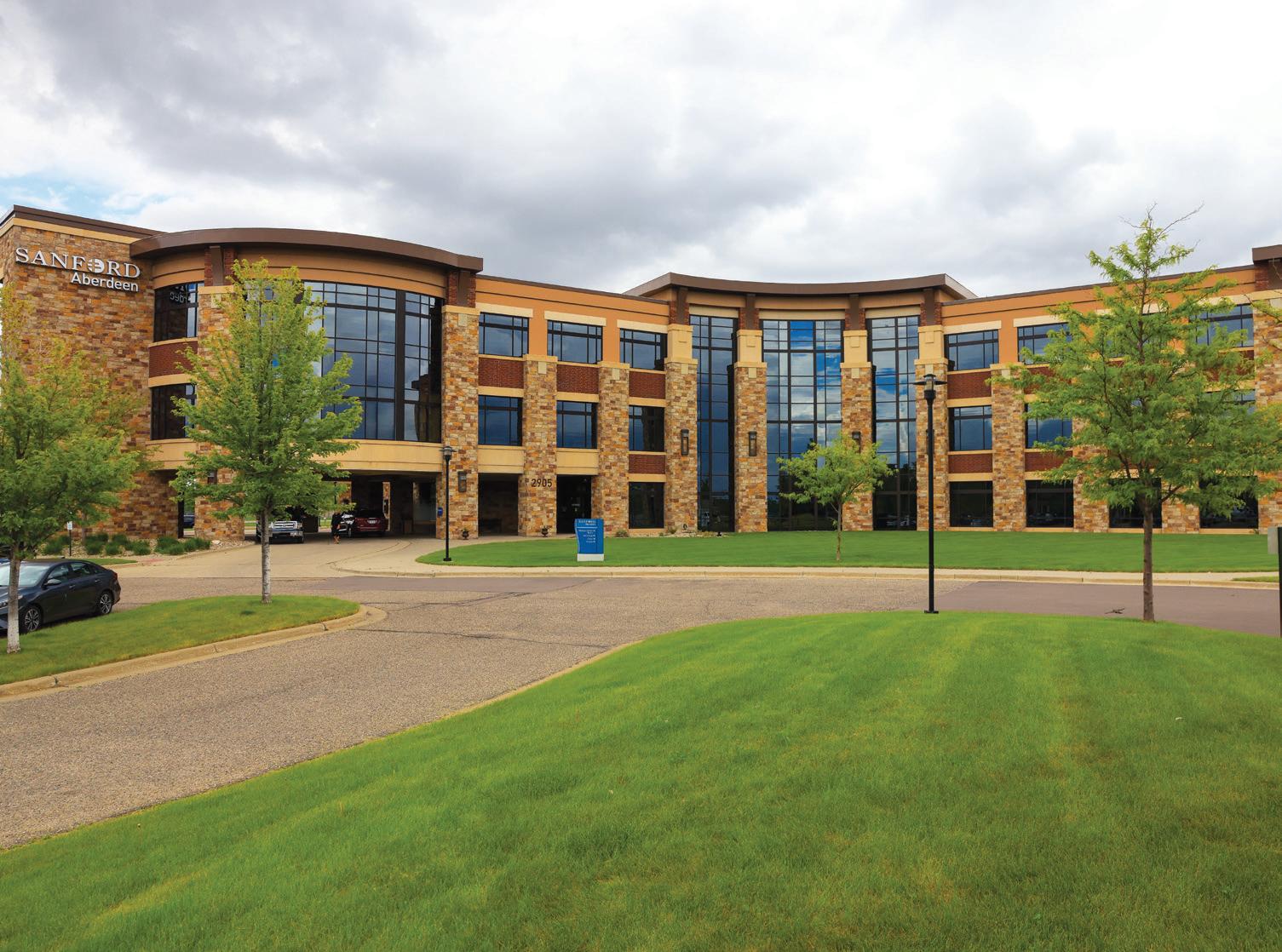
Sanford Aberdeen Medical Center (SAMC) opened in July 2012 in northeastern South Dakota. The 48-bed, state-of-the-art hospital was designed to meet the growing health care needs of the Aberdeen region and communities. n Sanford Aberdeen’s story officially began in Nov. 2008 when the United Clinic became Sanford Aberdeen Clinic, a mid-sized facility with 100 employees. But it wasn’t until the construction of the 113,000-squarefoot medical center in 2012 that the organization really found its footing in the community. In ensuing years, Sanford Aberdeen has expanded access to specialty and primary care services. n SAMC provides a healing environment that focuses on patients and their families. The SAMC care team provides comprehensive services, including inpatient and outpatient surgery, therapy and rehabilitation services, a women’s center, pediatric care, cancer/oncology care, radiology, diagnostic testing, rehabilitation services and emergency care. n SAMC has a multispecialty clinic attached to the medical center, providing family medicine, pe -
There are multiple specialty services provided via telemedicine, giving an option for patients to see a specialist via remote connection rather than having to travel.
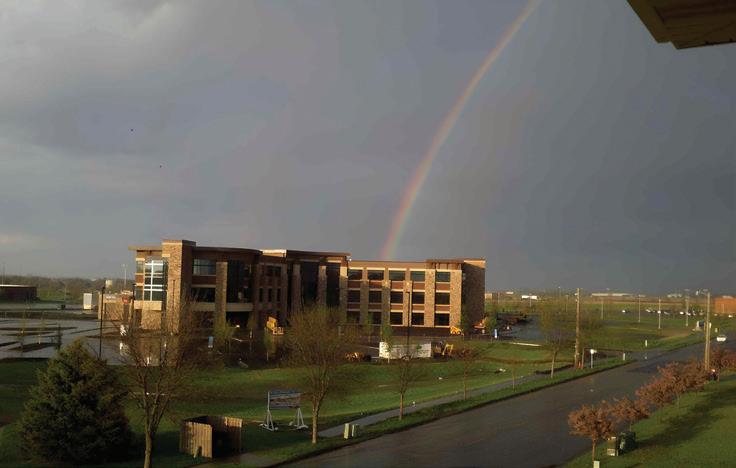
diatrics, internal medicine, general surgery, interventional cardiology, OB-GYN, orthopedic and sports medicine, ENT and urology services. There are multiple specialty services provided via telemedicine, giving an option for patients to see a specialist via remote connection rather than having to travel. Ipswich, South Dakota, also has a rural health clinic that is associated with Sanford Aberdeen. n SAMC continues to partner with communities to expand access to high-value health services while seamlessly transitioning partners and patients to the full range of services available through Sanford Health. SAMC works closely with surrounding communities and health care facilities to provide outreach services and as a resource for facilities, clinicians and communities while providing a high level of care close to home. n The organization is addressing the community’s growing needs by expanding same-day access and upgrading facilities and technology, with a focus on imaging and diagnostic tools. Additionally, it has grown to employ over 450 staff members and more than 60 providers. n Sanford Aberdeen Medical Center received a four-star rating by the Centers for Medicare and Medicaid Services. The national distinction recognizes Sanford Aberdeen’s quality measures and its continued effort to provide safe, quality health care to its patients.
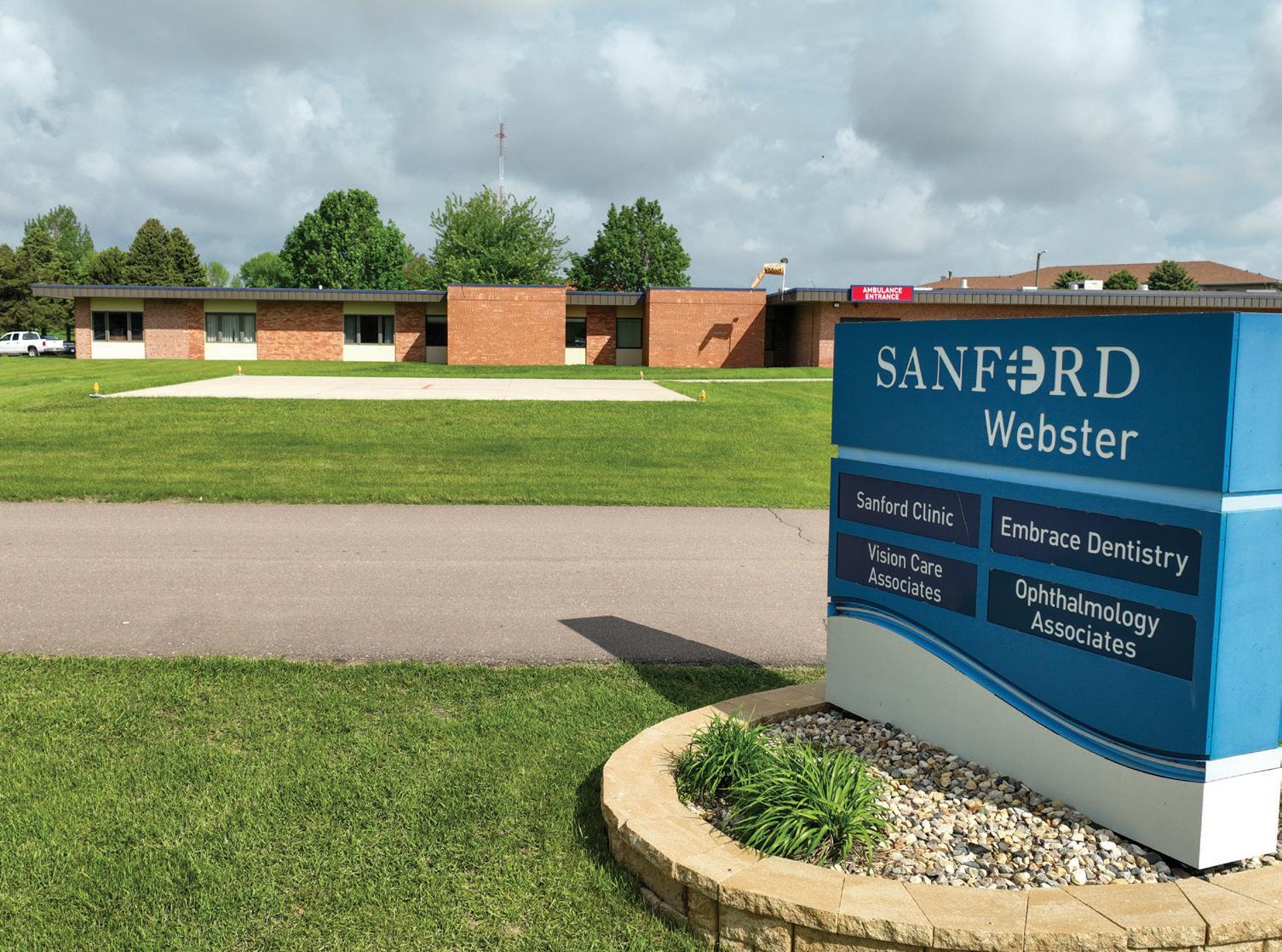
The Sanford Webster Medical Center is located in Webster, South Dakota, a town of 1,800 residents located in Day County. This 25-bed critical access hospital provides emergency services, radiology, lab, rehabilitation and respiratory care services and includes an adjoining rural health clinic. n The hospital’s history can be traced back to the Peabody Hospital, one of the first hospitals in Day County, which opened in 1913 on the corner of Main Street and 10th Avenue, featuring a six-bed capacity. The Peabody School of Nursing was organized in 1913 and was connected to the hospital, continuing operation until 1944. Miss Anna C. Olson, superintendent of nurses at the hospital from 1915 until 1939, has been given credit for the success of both the hospital and the nursing school. In total, 166 nurses graduated from the school, going on to work in all nursing fields, including during both World Wars. n
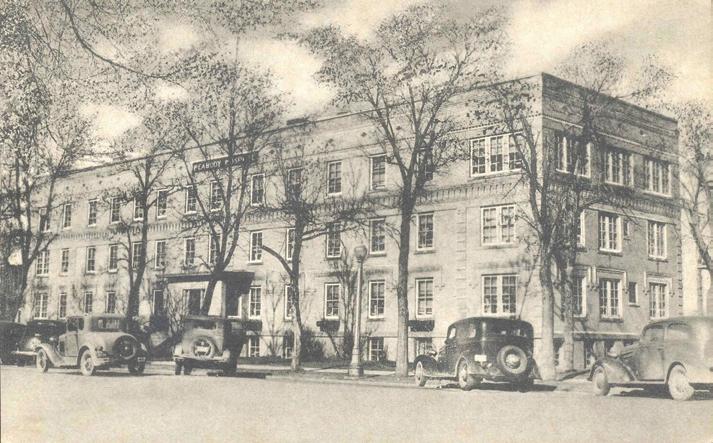
After that hospital closed, it was sold to the Lutheran Hospital and Homes Society and the 39-bed Day County Hospital opened in Feb. 1959, staffed with six physicians. In 1956, the hospital moved into a new building at 22 West 12th Avenue and changed its name to Webster Clinic. In April 1969, the name changed to Day County Medical Center. In 1978, the medical center received federal funding to undergo remodeling and expansion. n From 1979 to 1992, the center continued to remodel and upgrade equipment, including a lab, X-ray, mammography, therapy department and central supply. In the 1990s, the hospital was connected with the Bethesda Nursing
Miss Anna C. Olson, superintendent of nurses at the hospital from 1915 until 1939, was given credit for the success of both the hospital and the nursing school.
Home. This design included a dental suite, vision suite, lab, respiratory and cardiac lab, physical and occupational therapies and two rural clinics. n In response to the growing needs of the community, the hospital added a helipad in 2008. This addition allowed helicopters to transport patients, flight crew and family safely and privately. n In 2018, the lab area was remodeled, along with the addition of management and staff offices. n Beginning in 2019, the Sanford Health system appropriated millions of dollars for a major remodel to the now Sanford Webster Medical Center, including a patient wing with accessible bathrooms and new, upgraded patient rooms. The physical therapy and occupational therapy area was relocated for easy patient access and the emergency department was also relocated for easy access to ambulance and helipad entrances. This remodel allowed for an outreach area for visiting physicians, cardiology and telehealth services. n Sanford Webster Medical Center offers expert medical care close to home with compassionate, comprehensive medical services for the whole family—from infants to seniors— providing pediatric care, emergency medicine, rehabilitation services, surgery and more.
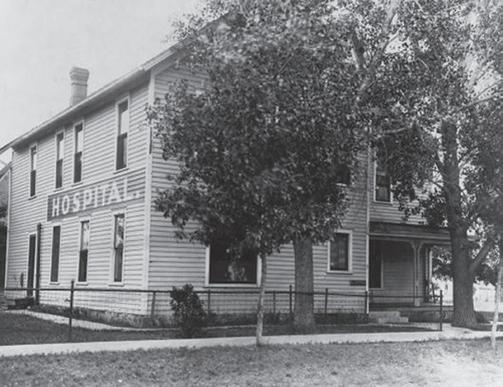
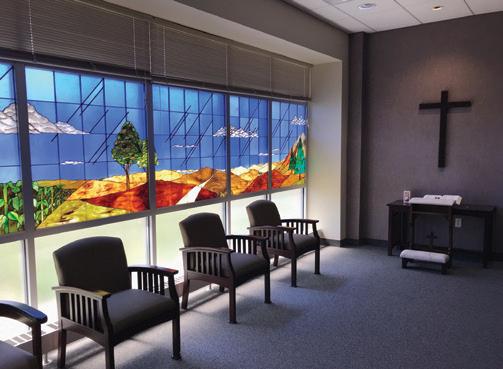

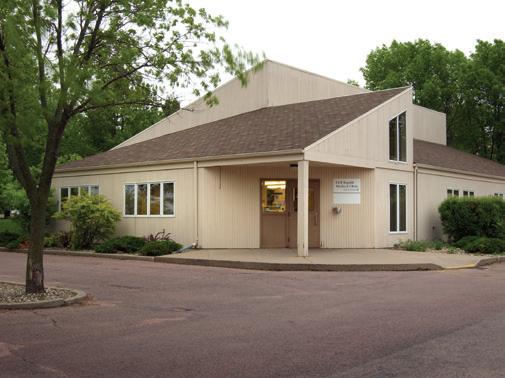
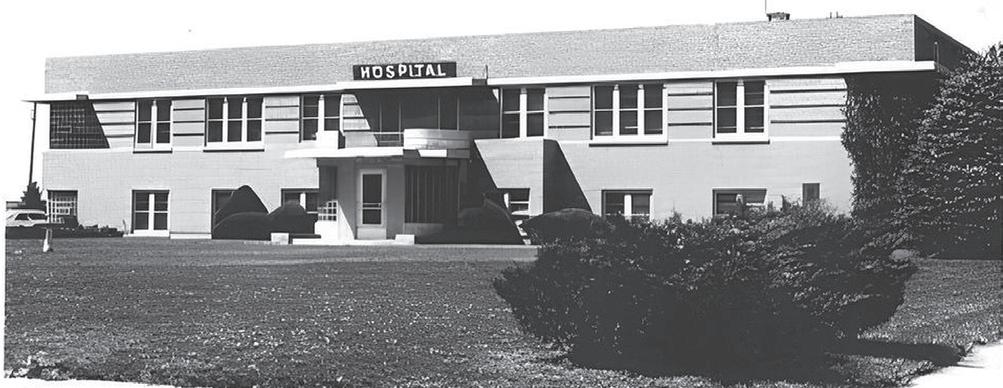



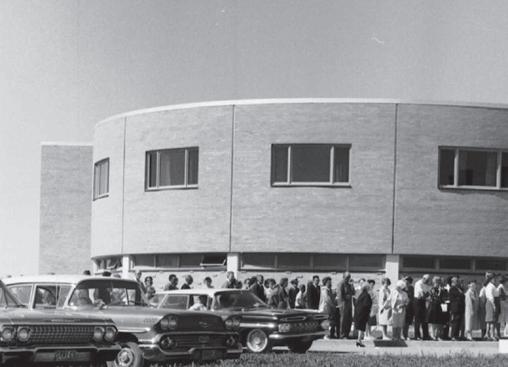
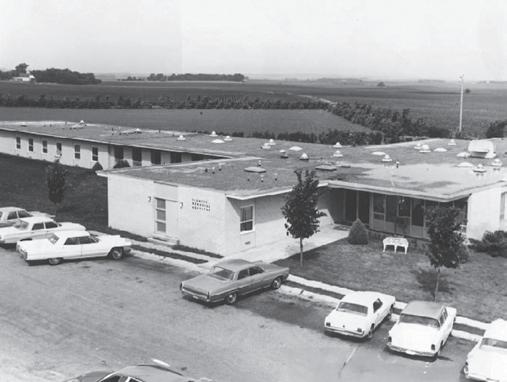


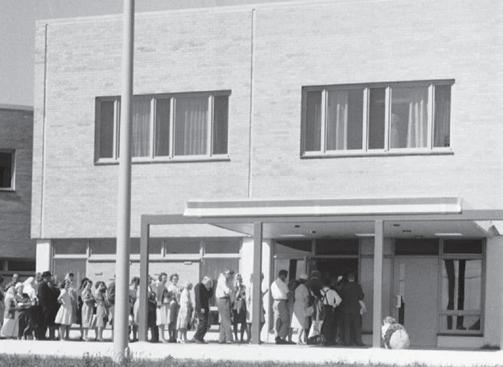
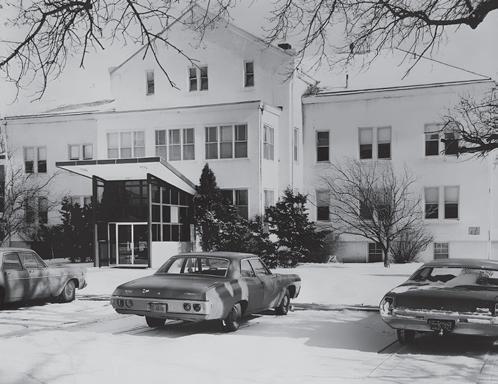

Avera De Smet Memorial Hospital
De Smet
Avera Dells Area Hospital
Dell Rapids
Avera Flandreau Hospital
Flandreau
Avera Heart Hospital
Sioux Falls
Avera McKennan Hospital & University Health Center
Sioux Falls
Brookings Health System
Brookings
Encompass Health Rehabilitation
Hospital of Sioux Falls
Sioux Falls
Madison Regional Health System
Madison
Pioneer Memorial Hospital & Health Services
Viborg
Sanford Canton-Inwood Medical Center
Canton
Sanford Clear Lake Medical Center
Clear Lake
Sanford USD Medical Center
Sioux Falls
Sanford Vermillion Medical Center
Vermillion
Select Specialty Hospital - South Dakota
Sioux Falls
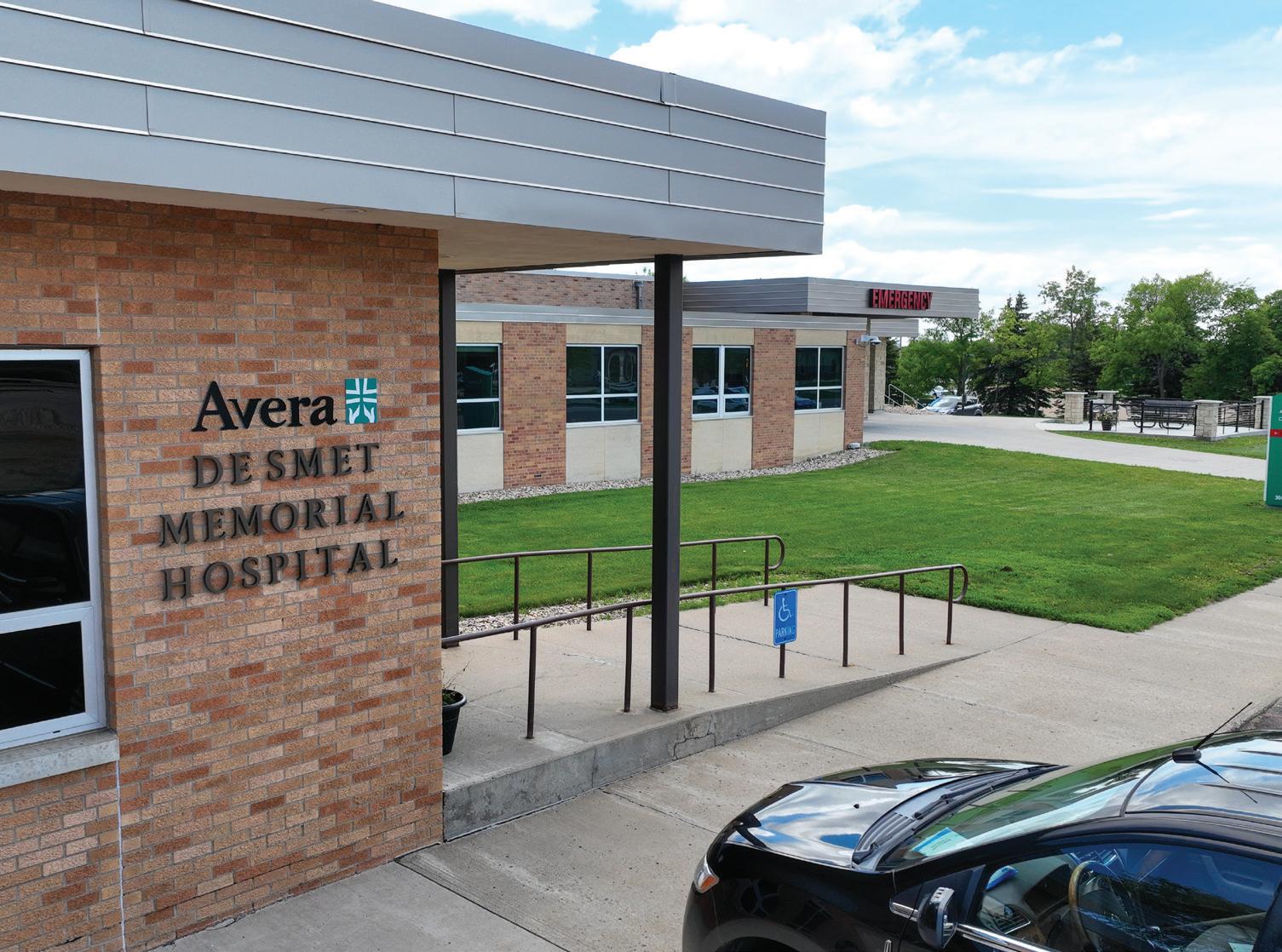
Serving the medical needs of the “Little Town on the Prairie,” Avera De Smet Memorial Hospital delivers state-of-the-art care in the seat of Kingsbury County. The city that served as a home to beloved pioneer and author Laura Ingalls Wilder boasts this modern medical facility offering high-quality care to local area residents and beyond. n The hospital’s rich legacy of health care in the historic railroad town of De Smet dates back more than a century, when the first hospital, known as Kingsbury County Hospital, was located in a residence that later became an apartment building. The present-day hospital was built in 1960. n Owned by the City of De Smet and governed by a local board, the hospital entered into a lease agreement with Avera Health in 2008. n With generous support from the community, Avera De Smet completed a hospital addition and renovation in 2017. This project added to and transformed its existing space to become more modern, efficient, patient-friendly and reflective of leading-edge health care, with new infrastructure and upgrades to the facility’s appearance. n The hospital’s two emergency rooms were remodeled to accommodate the latest technolo-
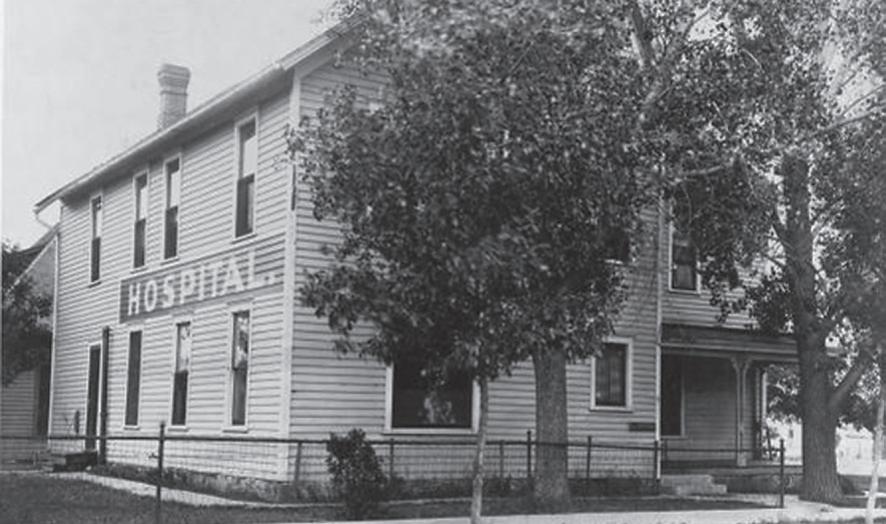
The hospital’s rich history of health care in the historic railroad town of De Smet dates back more than a century, when the first hospital was located in a residence that later became an apartment building.
gy as well as increase patients’ comfort. Its updated inpatient rooms are all private. Avera De Smet’s emergency department has all the capabilities necessary to treat even the most serious conditions 24 hours a day, seven days a week. Local providers are backed up by access to telemedicine, giving the local team immediate contact with emergency medicine specialists. n A critical access hospital, Avera De Smet Memorial Hospital offers a wide range of diagnostic and outpatient care, with a radiology department that includes CT, digital mammography, ultrasound and nuclear medicine. Outpatient services include cardiac rehabilitation, pulmonary rehabilitation and an expanded physical therapy space. When inpatient care is needed, patients have access to private rooms in the hospital’s updated inpatient wing. Local specialties include family medicine, with outreach services offered in OB/GYN, wound care, cardiology, podiatry and more. n Multiple levels of care are available to serve patients at the right time and in the right place for health care needs ranging from preventive care to treatment of chronic illnesses or injuries.
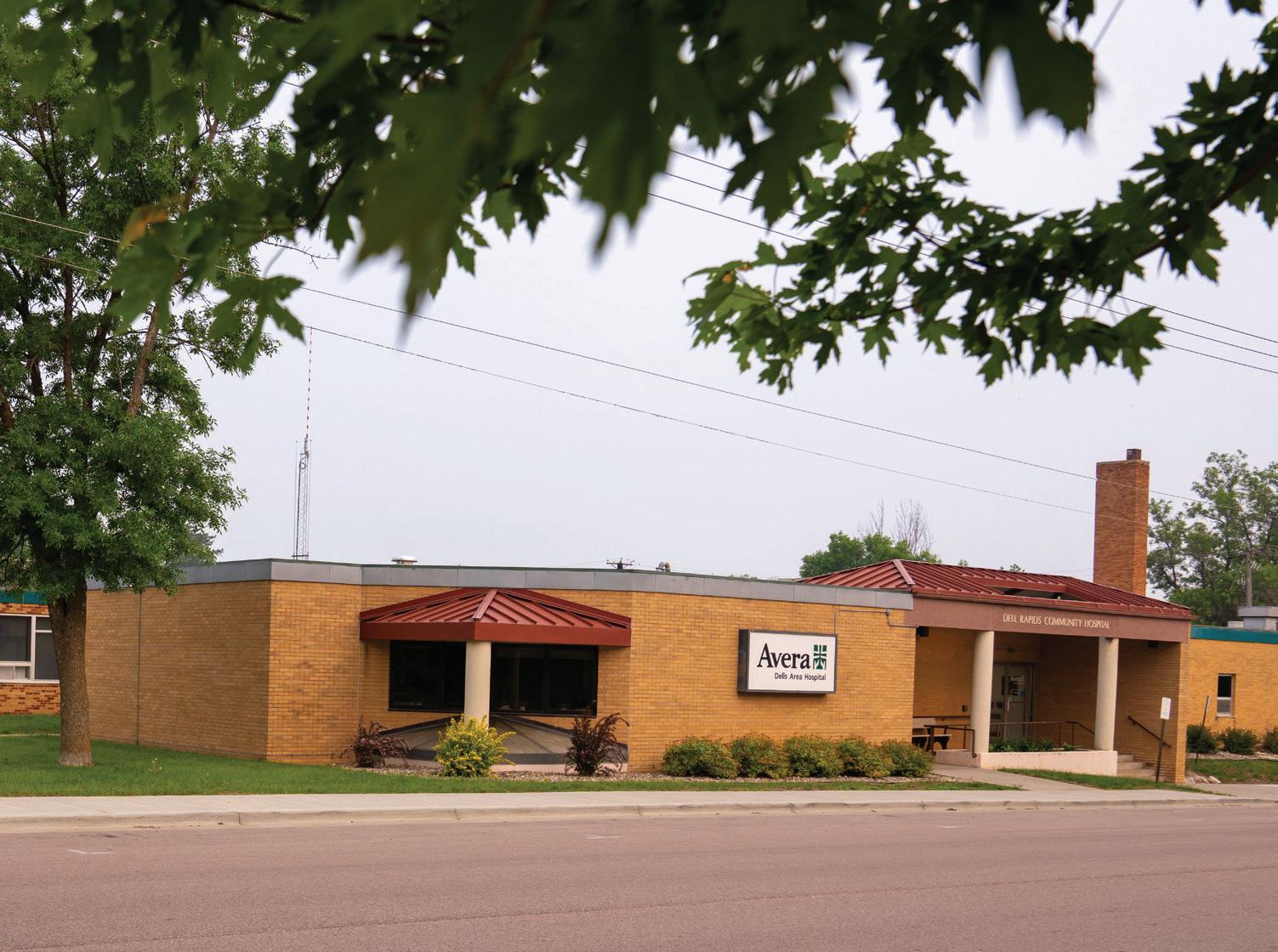
Avera Dells Area Hospital in southeastern South Dakota is an exemplar of efficient rural health care that has grown along with the population it serves. n The first hospital in Dell Rapids was built in the late 1880s. In 1905, providers began practicing in a building in downtown Dell Rapids, which is now a senior center. The hospital then moved to its present-day building, which was constructed in 1959. A new clinic was built in 1981, and the hospital joined the Avera family as a leased facility in 2003. n Throughout its history, the hospital had multiple names—it was Dell Rapids Community Hospital until the late 1990s, when it became the Dells Area Health Center. n In 2006, a new clinic was built adjacent to the hospital, featuring 20 exam rooms and three procedure rooms. This update resulted in a new front entrance for the hospital and decentralized waiting areas that position patients closer to their physicians. The project made for a greater integration of care, as the Avera Medical Group clinic and the hospital are currently on the same campus and connected by a walkway. This clinic was the first to use a model that maximizes patient comfort and staff efficiency, now found in numerous Avera clinics across the system. n Reflecting the growth of the town, Avera Dells Area has experienced notable growth as a facility, reaching nearly three times the size of the original clinic. n Avera Dells Area offers key services such as rehabilitation, diagnostic imaging, emergency care and surgery. The hospital provides outreach for general surgery, podiatry, orthopedics and wound care and features a 24/7 emergency department, inpatient observation and swing-bed and outpatient care. The facility provides support for patients in extended care to assist the ter-
Avera Dells Area has earned multiple performance leadership awards, and the hospital’s wound-care team has received outstanding-achievement awards for clinical distinction and patient satisfaction.
tiary center in Sioux Falls with high patient volumes. n The hospital is known for its active physical therapy department and for providing stand-out primary care for residents, especially elderly patients. n Avera Dells Area has earned multiple performance leadership awards, and the hospital’s wound-care team has received outstanding-achievement awards for clinical distinction and patient satisfaction. n The awards and reputation Avera Dells Area has earned make the state-of-the-art medical facility a fixture of quality health care in the region.
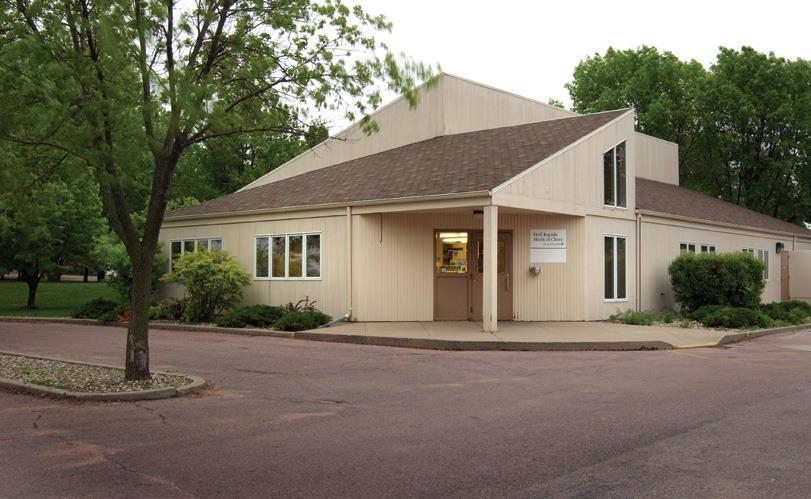
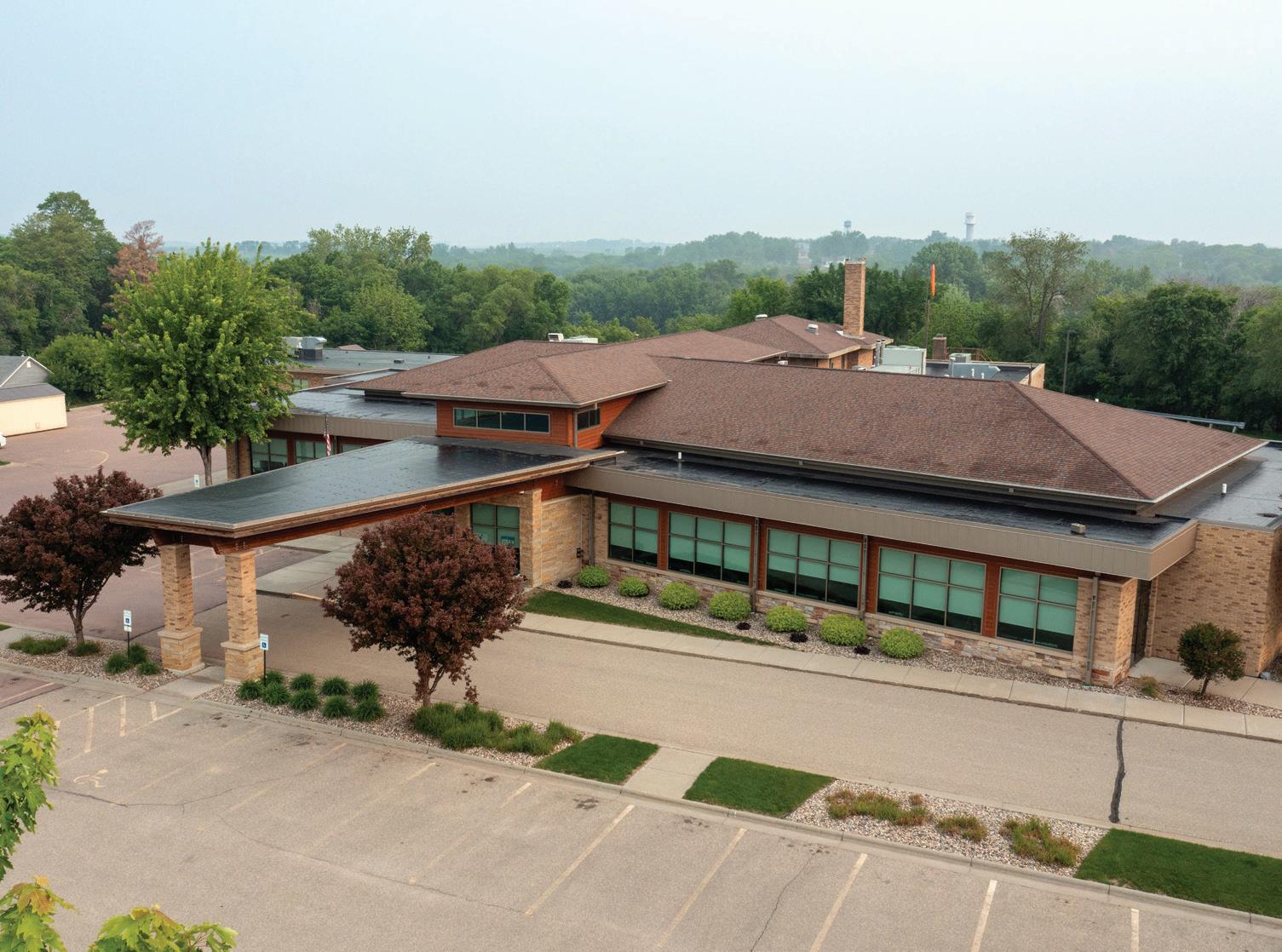
Avera Flandreau Hospital in Moody County, South Dakota, has taken pride in its groundbreaking firsts for almost nine decades, since the city’s first hospital opened in 1937. n The town was served by several physicians before the hospital came under Avera management in 1993. In 1995, Avera purchased the local clinic and replaced the clinic facility in 1999. That year, Avera began a lease agreement with Avera Flandreau Medical Center and, in 2014, a new clinic opened. n Avera Flandreau has been a health care pioneer in multiple respects. It was one of the first hospitals in the nation to convert to the Essential Access Community Hospital/Rural Primary Care Hospital (EACH/RPCH) program, which was created in the early 1990s to ensure access to acute care and emergency services in rural locations. In addition, Avera Flandreau was the first Avera facility to convert to the federal critical access hospital program as well. n Additionally, the hospital was the first to enter into a management agreement with Avera and the first to become a leased facility by Avera. In addition, in 1996 two physicians— Tad Jacobs, DO, and Gary Bruning, DO—became the first
Avera Flandreau has made history for its innovations in efficient and economical health care delivery.
in the state to be employed by a health system as opposed to owning their own practice and receiving privileges at a hospital. n Avera Flandreau’s trailblazing achievements include serving as the pilot site for telemedicine services in 2003, as well as its status as an early adopter of telemedicine for ICU, emergency and pharmacy platforms. n The hospital went on to be one of the first Avera facilities to “go live” with electronic medical records in 2007 and the first hospital in South Dakota to adopt an automated medication-dispensing unit. n Avera Flandreau’s services include inpatient and skilled swingbed care, general surgery, endoscopic services, emergency services and rehabilitation therapies. The facility also features laboratory services and radiology. Several outreach specialty clinics are held at Avera Flandreau, including orthopedics, podiatry, audiology services, counseling services and surgery. n Avera Flandreau is located 45 miles from the nearest tertiary health care center and is the only acute-care facility in Moody County, serving a diverse rural population that includes the Flandreau Santee Sioux tribe. n
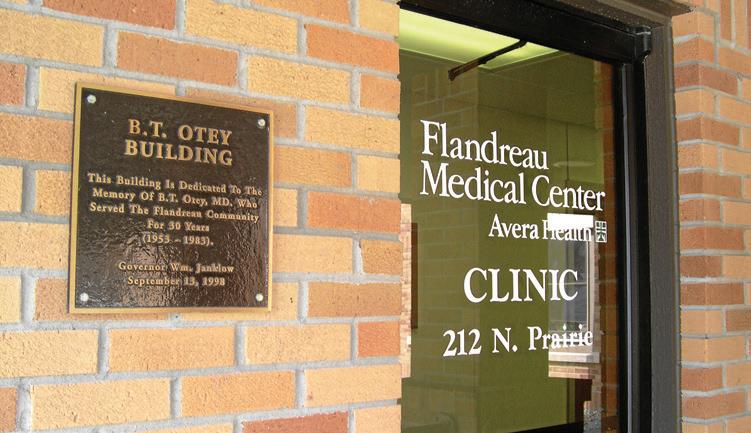
From its pivotal role in growing Avera Medical Group to the recognition it receives as one of the most financially successful small hospitals nationwide, Avera Flandreau has made history for its innovations in efficient and economical health care delivery.

Avera Heart Hospital opened in 2001—the first hospital in Sioux Falls and South Dakota dedicated solely to heart and vascular care. With a strong vision for patient-centered care, the Avera Heart Hospital has been nationally recognized multiple times for quality and service. n In 1988, McKennan Hospital launched cardiac services and open-heart surgeries and, a decade later, planned a joint venture with North Central Heart Institute and MedCath for a specialty heart hospital as part of the Avera system—the Avera Heart Hospital of South Dakota. n The first nationally accredited chest pain center in the state and region, Avera Heart Hospital has received numerous quality recognitions, including being named on national top 100 lists and as a five-star facility. n The hospital and its expert team serve patients with complete cardiac, electrophysiologic, thoracic and vascular care, including everything from prevention to diagnostic imaging, interventional cardiology and complex surgical procedures. A 24/7 emergency department specializes in cardiovascular events, including heart attacks and chest pain. n The hospital supports patients with a full range of services, from critical care to cardiac catheterization, a laboratory, cardiac rehab and specialized imaging including CT, MRI, angiogram and ultrasound. The Prairie Heart Guest House is connected to both North Central Heart Institute and Avera Heart Hospital, where outpatients and loved ones can stay comfortably while receiving care. n Avera has a long list of innovations in heart and vascular care. Even before the Heart Hospital opened, McKennan offered the first-in-the-region cardiac stent in 1993. Avera Heart Hospital was also first to offer pulse field ablation technology to treat atri-

Avera Heart Hospital has received numerous quality recognitions, including national top 100 lists and as a five-star facility.
al fibrillation in the Dakotas and Nebraska and the first thrombolytic therapy. Its longstanding, successful transcatheter aortic valve replacement (TAVR) program was launched in 2014. n Planet Heart was introduced in 2008, offering heart and vascular screening, comprised of blood tests for glucose and cholesterol, blood pressure, CT calcium scoring, vascular ultrasounds and lung/abdominal screening to assess risk for cardiovascular disease. An important aspect of the screening is discussion with the nurse about risk factors. If screening indicates a patient needs additional care, North Central Heart and Avera Heart Hospital offer further diagnosis and treatment. Recently, Planet Heart in Sioux Falls moved to a nearby location, shared with Avera Home Medical Equipment. n After two decades serving the region with outstanding specialty heart and vascular care, a recent remodeling project added clinic exam space, capacity for outpatient surgery, a sixth catheterization lab and updated inpatient rooms. n Avera Heart Hospital continues to build upon a strong reputation. Based on current record volumes, community confidence, population growth, and the incidence of heart and vascular disease, hospital leaders look ahead to service for an increasing population with expert heart and vascular care.

Avera McKennan Hospital & University Health Center is not only a hometown hospital for residents of South Dakota’s largest city, it’s a regional referral center for patients across a 72,000-square-mile footprint in the Upper Midwest, offering tertiary-level care in 60 medical specialties. n In 1906, Helen Gale McKennan willed much of her worldly estate to the betterment of Sioux Falls, including a $25,000 gift to found a new hospital. The Presentation Sisters of Aberdeen agreed to operate it. In 1911, it was completed— state-of-the-art for its day—with electricity, telephone service, an elevator, private patient rooms and an operating room. n The first addition was built in 1919—an expansion necessary to keep up with demands of population growth, as well as a worldwide influenza epidemic. A portion of the 1919 building still remains on the hospital’s northwest corner. A major east wing was completed in 1957, followed by another major expansion in 1975 that allowed for all private rooms. Medical plazas were added to the campus, accommodating numerous physician offices and medical services. In 1986, McKennan Hospital developed Careflight, Avera’s airtransport system. n Beginning in 1993, McKennan became a pioneer in telemedicine services, developing a robust network across a rural landscape. In 2000, Avera McKennan became part of the newly formed Avera Health system, founded by the Benedictine and Presentation Sisters. n In 2006, Avera McKennan’s growing behavioral health service line moved to a separate facility. A new emergency department was constructed in 2007. In 2010, the Prairie Center was completed, a home for the Avera Cancer Institute and Avera Surgery Center. n Then, in 2019, Avera McKennan developed its Avera on Louise Health Campus, home to Avera Specialty Hospital,
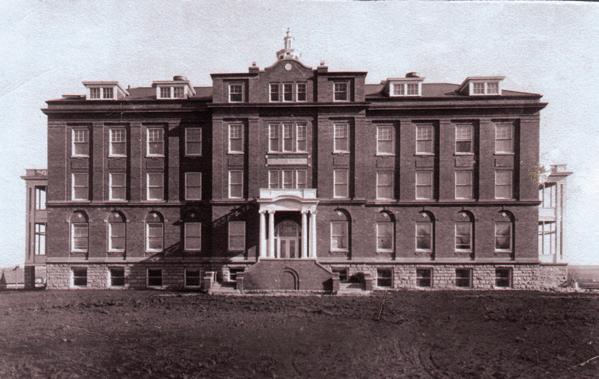
In 1906, Helen Gale McKennan willed much of her worldly estate to the betterment of Sioux Falls, including a $25,000 gift to found a new hospital.
a medical office building focused on gastrointestinal services, Avera Addiction Care Center and Avera Human Performance Center. n In 2024, Avera announced the construction of a 220,000-square-foot tower east of the existing hospital, to create a state-of-the-art home for Women’s and Children’s Services, to be completed in 2027. n Avera McKennan offers nationally recognized care in a wide range and depth of specialties, including cancer, orthopedics, transplants, behavioral health, neurosciences, gastrointestinal issues, women’s care, pediatrics, therapy and rehabilitation, emergency and trauma and more. Within Sioux Falls and surrounding areas, the Avera McKennan region includes a large network of primary and specialty care clinics, including Avera Family Health Centers that offer full-service emergency departments. Avera@Home offers home care, hospice and home medical equipment throughout the Avera footprint. Also part of the Avera McKennan region are Avera Sports, Avera Research Institute, Avera Prince of Peace Retirement Community and Dougherty Hospice House. n Avera McKennan’s focus continues to be on high-quality service and technological sophistication with the Avera mission and values of compassion, hospitality and stewardship in delivering whole-person care.

Brookings Hospital began operation of a 21-bed facility in 1907. It was then purchased by the City of Brookings in 1935. A 61-bed hospital was built at its current location on 300 22nd Avenue in 1964. In 1971, Brookview Manor nursing home was constructed on the east side of the property, which connected directly to the hospital. n Major expansions and renovations started in 2009 with the groundbreaking for the emergency department and laboratory remodel and the acquisition of Yorkshire Eye Clinic and Arlington Medical Center. In 2013, Brookings Health expanded its campus and opened a new skilled nursing facility, The Neighborhoods at Brookview. In 2017, Brookings Health completed a $51 million expansion and renovation of Brookings Hospital that added 62,500 square feet to house surgery, radiology, inpatient and obstetrics services. n Brookings Health System is a nonprofit, municipal health system that offers the Brookings region a full range of inpatient, outpatient, surgery, home health and skilled nursing facility care. The health system includes the 49-bed Brookings Hospital; the 79-bed The Neighborhoods at Brookview facility; congregate living apartments for seniors, called Brookhaven Estates; Arlington Medical Center; White Medical Clinic; Volga Medical Clinic and Yorkshire Eye Clinic & Optical. n Today, Brookings Health System is one of the premier rural community health providers in South Dakota. It has been nationally recognized for delivering high-quality

care and personalized service, receiving recurrent honors, such as inclusion in the National Rural Health Association’s Top 20 Rural Community Hospitals and Newsweek’s World’s Best Hospitals. Other medical accomplishments include serving as a leader in surgical robot integration—the first South Dakota rural community hospital to offer both da Vinci robotic surgical procedures and Mako robotic-arm assisted surgeries. Brookings supports mothers and babies in all aspects of nursing—implementing the World Health Organization/ UNICEF evidence-based Ten Steps to Successful Breastfeeding and offering free Baby Café breastfeeding support sessions with lactation consultants. n The hospital also embraces the household model of long-term care with The Neighborhoods at Brookview, one of the first modern skilled nursing facilities in South Dakota, designed around the care philosophy.
Today, Brookings Health System is one of the premier rural community health providers in South Dakota.
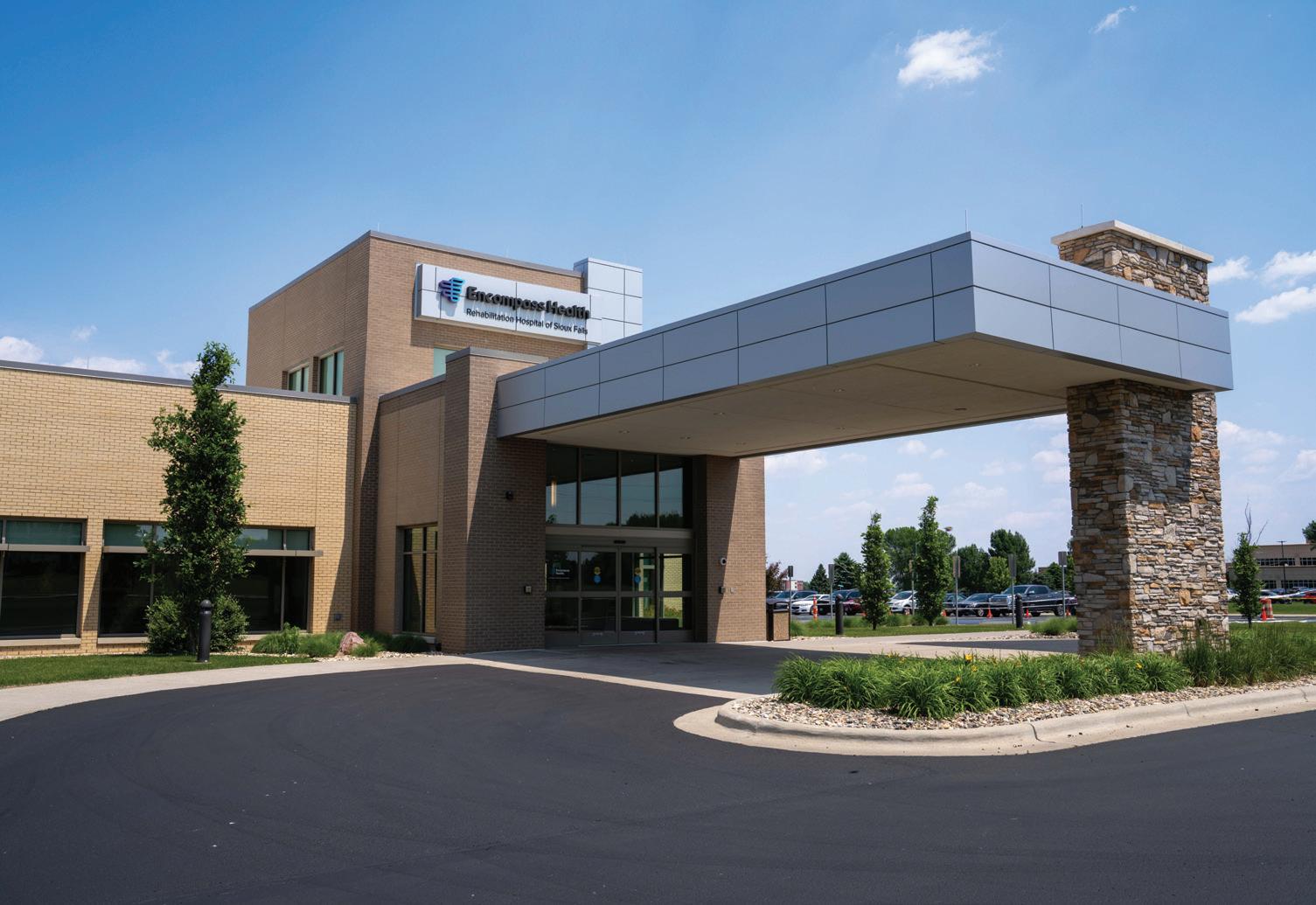
Encompass Health Rehabilitation Hospital of Sioux Falls opened on June 15, 2020, and serves the tristate area of South Dakota, Minnesota and Iowa, recognizing the need for inpatient rehabilitation services in a community that stretches far beyond city limits. n As the only free-standing inpatient rehabilitation hospital in South Dakota, the 40-bed facility has served approximately 4,000 patients since it opened and is home to over 150 employees. As there are approximately 100 rehabilitation beds in the entire state, this hospital serves the community by partnering with referral sources that span acute care, skilled nursing facilities, assisted living centers, outpatient clinics and home-health agencies to ensure patients have access to the care they need. n Encompass Health’s team of physical, occupational, speech and respiratory therapists, along with registered nurses, wound care, case management, dietitians, pharmacists and independent physicians offer patients decades of experience and a deep commitment to personalized care. Encompass Health offers unparalleled clinical expertise for treating inpatient rehabilitation conditions—such as stroke, brain injury, amputation, cardiac, pulmonary, orthopedic, spinal cord, neurological, and general debility—creating a customized treatment plan based on each patient’s unique needs. n It is the mission of Encompass Health Sioux Falls to
The Encompass Health Rehabilitation Hospital includes over 47,000 square feet, 40 private beds, a state-of-the-art therapy gym and an outdoor mobility courtyard.
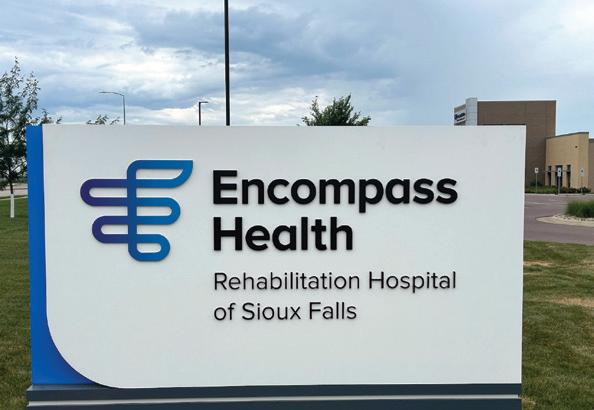
Encompass Health recognizes the need for inpatient rehabilitation services in a community that stretches far beyond city limits.
be both a provider and employer of choice, as it has proudly demonstrated, year after year, improvement in quality metrics and employee engagement, with a strong commitment to patient and caregiver satisfaction. The belief that integrated care delivery across the health care continuum is critical to achieving the best outcomes for patients inspires the hospital to provide outstanding service to patients and communities through customized rehabilitation that exceeds expectations. The care teams of Encompass Health Sioux Falls are committed to achieving the best possible outcomes and allowing patients to get back to what matters most. n In 2024, Encompass Health Sioux Falls received Disease Specific Care certification for stroke rehabilitation from The Joint Commission, the nation’s oldest and largest health care accreditor. Recognition from the commission is evidence of the hospital’s commitment to delivering safe, high-quality care. The hospital was also selected to participate in the American Heart Association’s South Dakota Mission: Lifeline Stroke Post-Acute Care Initiative. n Encompass Health Rehabilitation Hospital of Sioux Falls is the 136th hospital in Encompass’s nationwide footprint. The hospital was the first for the company in the upper Midwest, later followed by Coralville, Iowa; Grand Forks, North Dakota; and Fitchburg, Wisconsin. Encompass Health continues to be the largest provider of inpatient rehabilitation with more than 160 hospitals in 38 states including Puerto Rico. Seventeen hospitals are currently slated to join the Encompass Health family in the near future, including the first in Connecticut.

Madison Regional Health System traces its humble beginnings back to 1878, when the first doctor arrived and opened a small office on Main Street. In 1884, Dr. Alonzo Clough established the first hospital in the south half of his home. As Madison’s population grew, a larger hospital and medical clinic became necessary. In 1902, the hotel Madison House was moved from Main Street, remodeled and opened as the Clough Hospital. n In 1920, a community donation drive successfully funded the construction of a 35-bed brick building on North Washington Avenue, known as The New Madison Hospital. A postcard from the time showed the hospital’s façade bore this caption: “bright cheery fireproof . . . the welfare of the patient is our first consideration on fully approved list of the american college of surgeons.” n By 1963, modernization and updating became necessary for the medical facilities. Again, with the help of generous donors, the Madison Community Hospital opened its doors at 917 North Washington, complete with modern equipment and the latest technology. In 1998, a major addition and remodel joined the clinic and hospital buildings. n In Oct. 2015, the Madison Regional Health System welcomed the first patients to a new $36.8 million facility on the south side of Madison. n Today, Madison Regional Health System is a 22-bed non-profit facility committed to providing quality health care close to home. It has served Madison and its surrounding communities for more than 140 years and is governed by a board of directors. Designated as an awardwinning critical access hospital, Madison Regional provides health
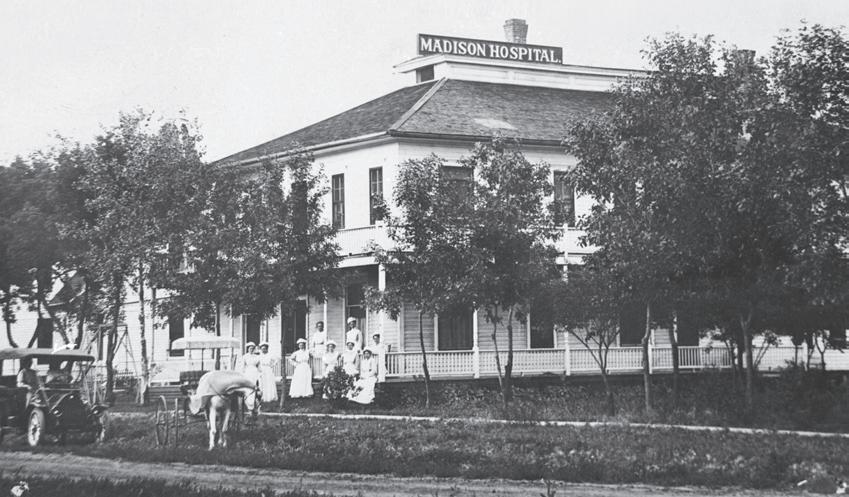
In 1902, the hotel Madison House was moved from Main Street, remodeled, and opened as the Clough Hospital.
care services to residents who would otherwise be required to travel long distances for care. n The health system integrates a hospital, clinic, multiple departments and other partnered health care companies. With a team of over 270 employees, the hospital is dedicated to providing quality inpatient and outpatient health care services with a personal touch. Whether it’s routine wellness visits, obstetrical services, surgical services or emergency care that is needed, the hospital’s highly skilled medical professionals are committed to ensuring patients receive the exceptional care they deserve. n Madison Regional Health System takes great pride in its stature as a longstanding pillar in the community, serving as a health focal point through the provision of compassionate, quality and innovative care. MRHS remains focused on continuous quality improvement, innovation, attention to patient safety and strategic planning—all while tailoring its services to meet the unique needs of the community.
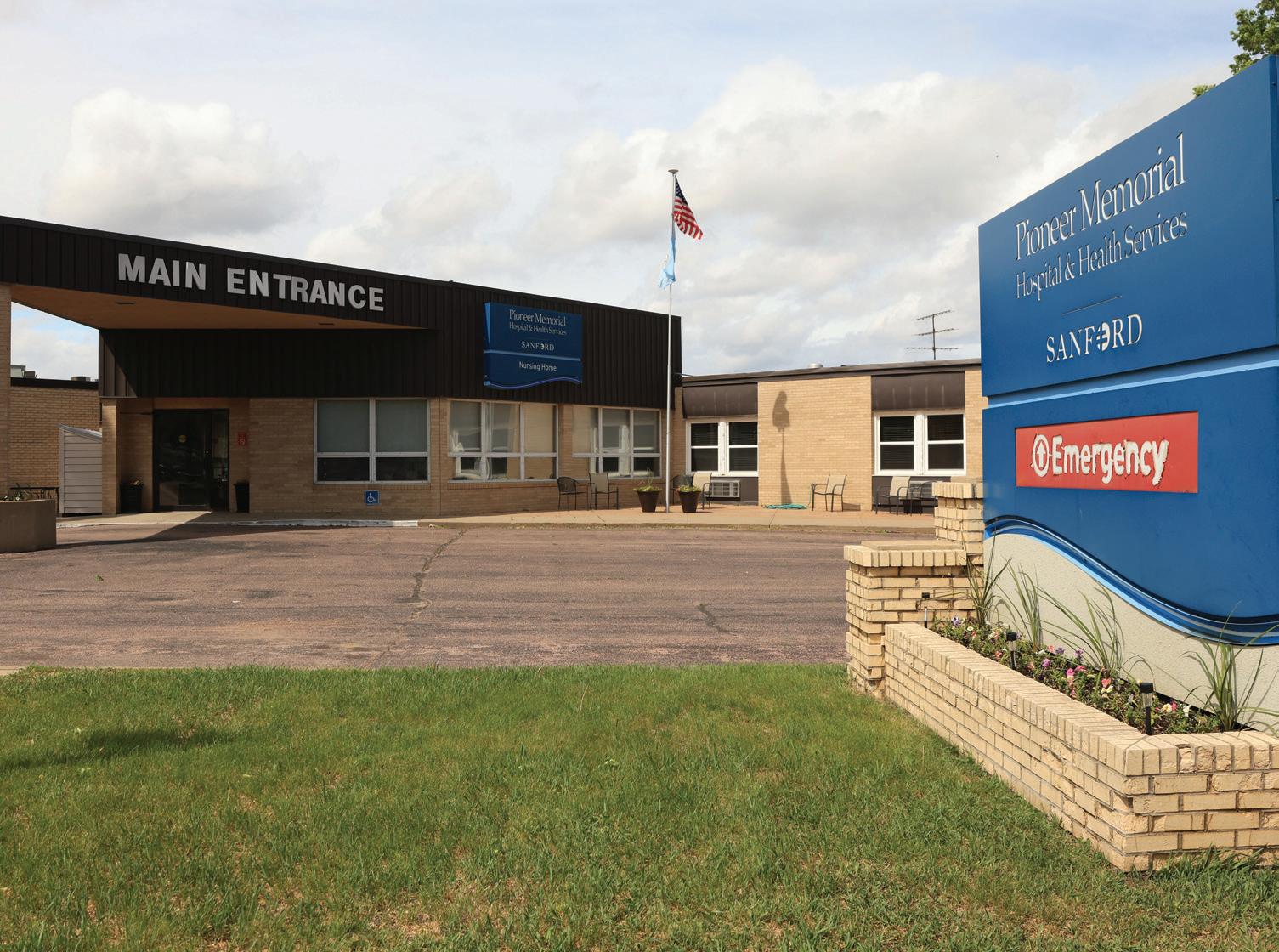
Pioneer Memorial Hospital and Health Services, located in Viborg, South Dakota, offers residents a 12-bed critical access hospital; three rural health clinics in Viborg, Centerville and Parker; a 51-bed nursing home; a 10-unit assisted living facility and 20 independent living units. n The hospital, founded in 1959, is a private, not-for-profit organization, independently governed by a board of directors. n The original Viborg Clinic and Hospital operated out of the three-story Stidworthy house on Main Street. On the first floor, Dr. Carlos E. Kemper maintained an exam-room clinic, X-ray room, lab and kitchen. The upper floors housed patient beds, a small operating room and an obstetrics suite. The home’s front porch doubled as a clinic waiting room. By 1957, Dr. Kemper and his staff began to raise awareness about the need for a new facility, as this private hospital no longer met state standards. n In 1959, an open house was held upon completion of a new community hospital and the first patients were admitted on Sept. 16. Between 1959 and 1989, several additions were made to the facility, including the Pioneer Memorial Nursing Home, Pioneer Villa and Viborg Medical Clinic. In 1990 and 1992, the hospital’s network expanded when the Parker and Centerville satel-
Pioneer Memorial currently is the largest employer in Turner County.
lite rural health clinics joined the organization. n In 1991, Pioneer Memorial aligned with Sanford Health (formerly Sioux Valley Hospital & Health System) under a management-services agreement. This integration with a larger health system benefited patients by providing access to hundreds of specialty physicians. In Jan. 1999, another milestone was reached with the completion of a $4.2 million building and renovation project. A new 12-bed hospital was built to improve the inpatient emergency room and outpatient facilities, and exam rooms and a lounge/conference room were added to the Viborg Clinic. Long-term care services were expanded to include assisted living. n Pioneer provides a continuum of care—from newborns to seniors (as their housing and medical needs change), thereby supporting the local economy. In fact, Pioneer Memorial currently employs approximately 150 people—and is the largest employer in Turner County. n Pioneer Memorial has a long history of responsiveness to changes in the health care environment. For instance, among its most significant medical achievements, Pioneer Memorial implemented an Epic EMR System to store, manage and share patient records in 2008. n Pioneer Memorial’s high-quality, comprehensive health care services are a success story because of the visionary leadership, dedicated staff and continuing support of its community. With pride, it carries on a tradition of excellence, as per its mission statement: “Committed to Health, Healing, and Community.”

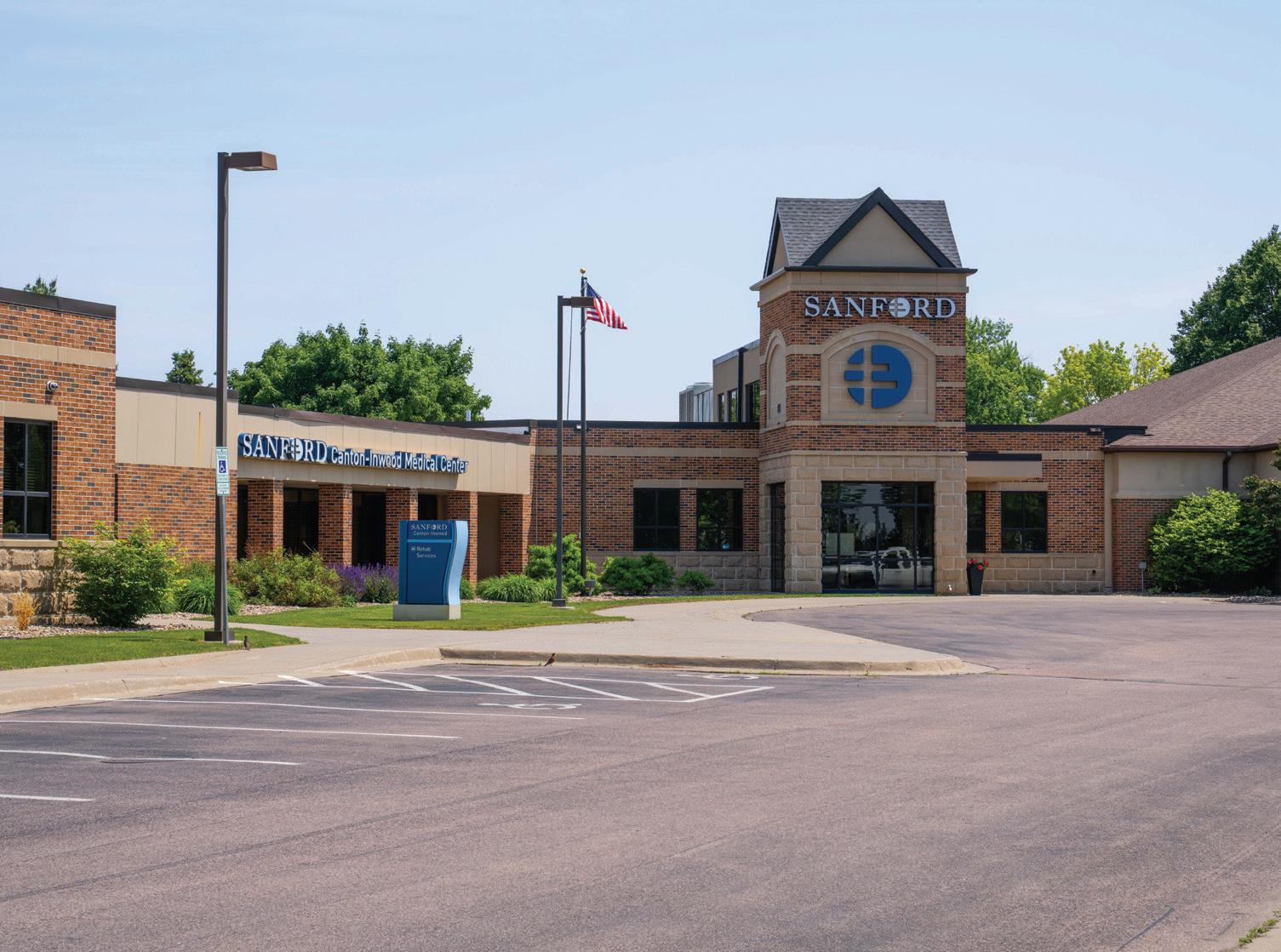
Sanford Canton-Inwood Medical Center has served its communities for more than seven decades. The facility’s history began when the federal government founded the Hiawatha Indian Asylum in 1902, a psychiatric hospital for Native Americans. A surgery/ hospital building was later added to accommodate tuberculosis patients and other infirmary needs. Most patients were sent to the asylum not for mental or behavioral issues, but rather physical illnesses or due to their refusal to adopt the ways of life being forced upon their people. The asylum closed in 1934 and then, in May 1949, it was converted to a hospital at a cost of $125,000. The 40bed hospital consisted of 30 rooms with a staff of only 12 people. In 1950, a dedication ceremony was held to celebrate paying off its debt. n In the 1960s, state and federal health officials deemed the two-story facility unsafe for continued use as a hospital and plans formed for a new facility to ensure that local health care was available. In 1971, community members raised $565,000 and, combined with a $518,000 Hill-Burton grant, built the new hospital, which opened in Nov. 1975, named the Canton-Inwood Memorial Hospital. The new facility provided medical, surgical, pediatric, maternity and newborn services. A volunteer ambulance service answered approximately 50 calls per year. n In 1991, a physician office building was constructed that connected to the hospital. That same year, the hospital leased its building and operations to the Sioux Valley Service Corporation. n Sanford Health purchased the hospital on Jan. 1, 2009, and set aside $4 million for construction projects and $5 million to form the Canton-Inwood Area Health

The
Canton-Inwood
Foundation provides grants to improve the health and wellness of the communities, scholarships for students and the purchase of new hospital equipment.
Foundation. Among other things, the Canton-Inwood Foundation provides grants to improve the health and wellness of the communities, scholarships for students pursuing a degree in health care and the purchase of new hospital equipment. n From 2012 to 2015, the facility was improved with a $7.65 million project, adding or renovating 38,555 of its total 52,000 square feet. n Over the past decade, Sanford Canton-Inwood Medical Center served an average of 55 patients per day in the hospital and more than 52 patients visit its clinic daily. Services offered include radiology, laboratory, surgical, cardiology, inpatient, therapy (PT/OT/ST), cardiac, pharmaceutical, respiratory therapy, IV therapy, emergency room and more. n In 2017, Sanford Canton-Inwood hired staff to continue its ambulance service and, in 2021, the Canton-Inwood Area Health Foundation donated $350,000 toward construction of a new ambulance garage—opened in 2022—answering more than 600 calls per year. n Sanford Canton-Inwood Medical Center currently employs more than 100 employees and strives to make a positive impact on the patients and communities it serves.
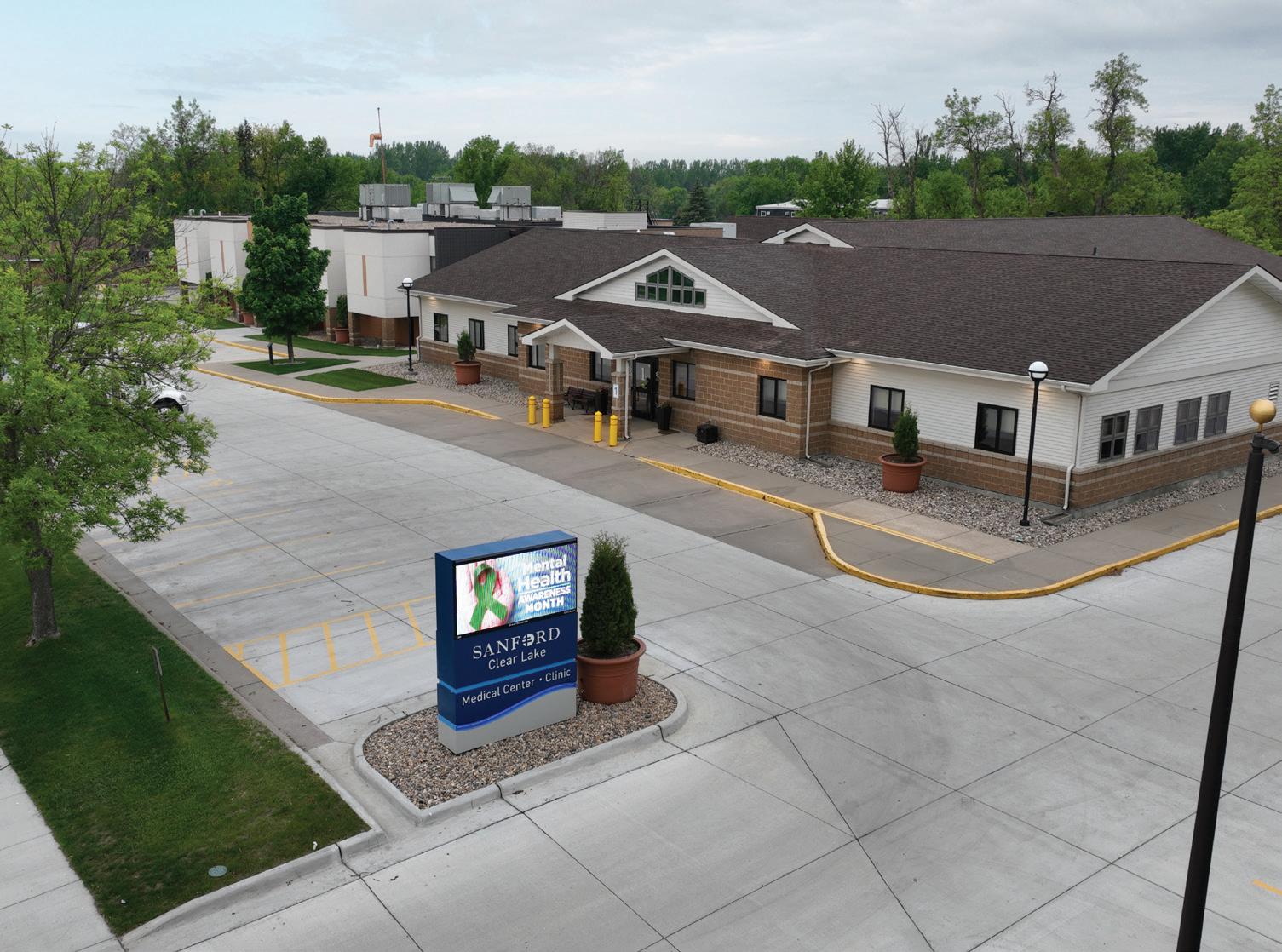
The “hospitals” of Clear Lake, South Dakota, date back to the 1880s when patients recuperated in hotels and private homes, with citizens providing care for each other. The Mekkelson House functioned as such—Carolyn Mekkelson, known as “the Florence Nightingale” of Deuel County, cared for patients in her home. n With the formation of public hospitals, patients from Deuel County were taken to neighboring communities that had built hospitals, and the care provided in hotels and private homes began to dwindle. n Clear Lake community leaders planned to build a hospital, and the Deuel County Memorial Hospital (DCMH) was built in 1949. Over the next 50 years, the Deuel County Memorial Hospital board governed the hospital or entered into agreements with various health care organizations to manage the facility. n Then, in 1996, the DCMH board entered into a lease agreement with Sioux Valley Hospital, which would later become Sanford Health. That agreement remains in place, and Sanford Clear Lake has experienced an expansion of health care services. In 2001, a new clinic and therapy area were built and, in 2008, new laboratory, radiology and emergency departments were constructed. To address patients’ desire for privacy, an expansion of hospital rooms occurred in 2014 to make them single-occupancy with a shower in each room. n Sanford Clear Lake proudly offers a primary care clinic where its dedicated staff can meet all routine health care needs. Its providers are well-versed in chronic-disease management, wellness visits and treating acute illnesses. If patients need to see a specialist, providers arrange for those services with visiting outreach specialists, in-person appointments or connecting via telemedicine equipment right in the facility. n Sanford Clear Lake can perform many laboratory and radiology exams, and it partners with Sanford Health for additional specialized laboratory testing and mobile radiology services. The facility offers a full complement of rehabilitation professionals on-site for physical, occupational, speech and cardiac therapy. These staff work with patients as they recov-
Responses to a recent employee-engagement survey explain how dedicated the hospital’s staff is to meeting the health care needs of the community.
er in the swing bed program while staying in the hospital or on an outpatient basis. n The emergency department is open 24/7 for unexpected situations requiring quick medical care. Sanford Clear Lake is designated as a trauma-receiving hospital with the South Dakota Department of Health. Telemedicine services are also available in the emergency department. n Sanford Clear Lake employs approximately 70 health care professionals. Responses to a recent employee-engagement survey explain how dedicated the hospital’s staff is to meeting the health care needs of the community, such as: “Our services are committed to ensuring safety and the best standards of care” and “I love my job and the people I work with.”
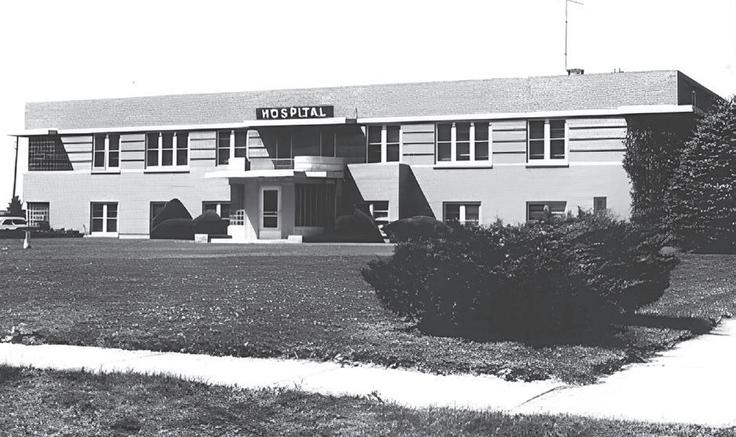
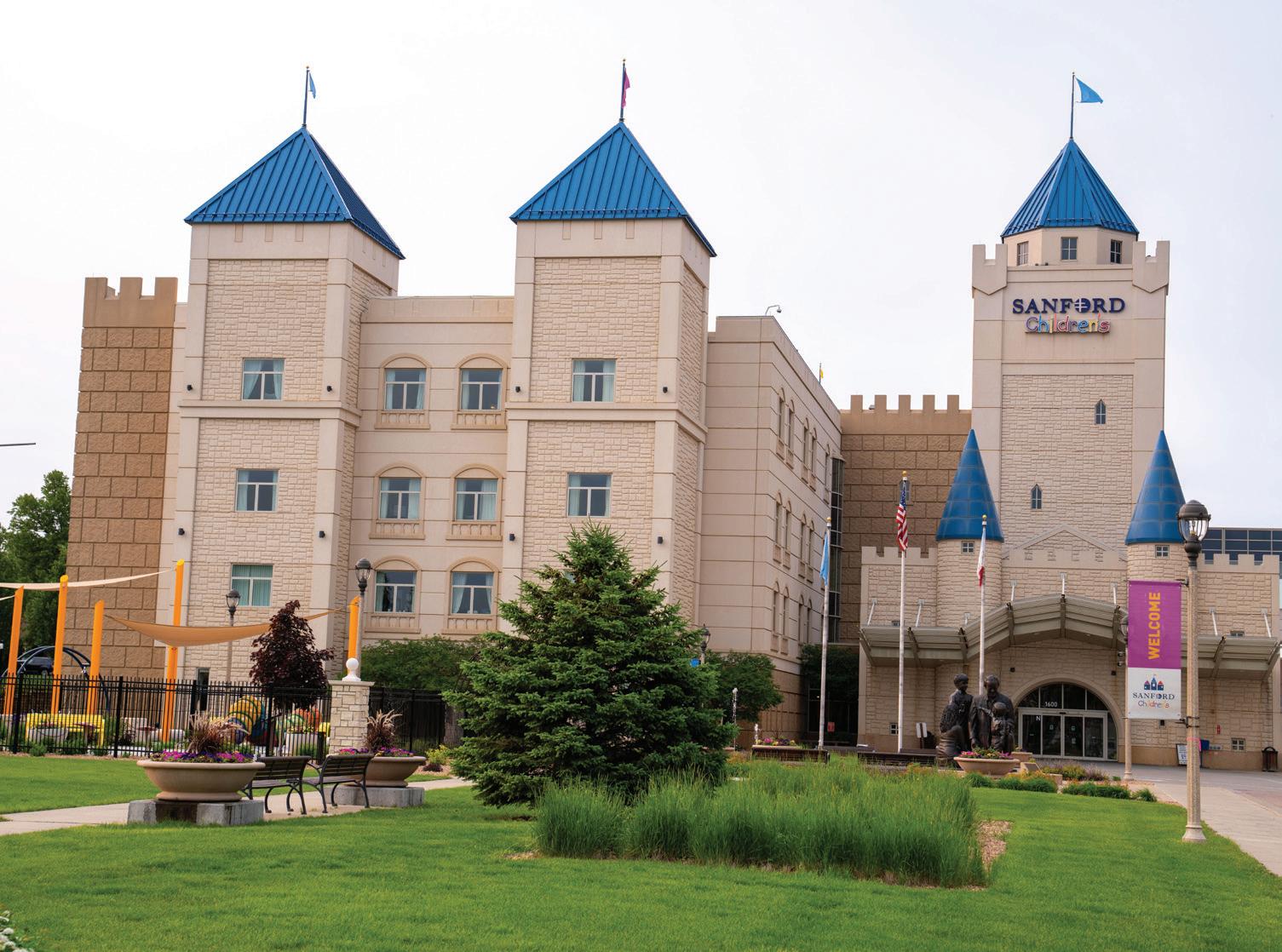
Sanford USD Medical Center has served its communities for over 130 years. In 1895, Sioux Falls Hospital opened in Sioux Falls and was later renamed Sioux Falls Lutheran Hospital in 1900, the first building in South Dakota that was constructed as a hospital. In 1926, the name changed again to Sioux Valley Hospital Association and, in 1930, the construction of a new hospital was completed. n The Ann Berdahl Hall was built in 1960 as a student nursing dormitory, named in honor of the hospital superintendent and School of Nursing director. Lyle Schroeder began leadership as the hospital administrator in 1961, serving for 36 years. During his tenure, the west wing of the hospital opened in 1964. n In 1976, the Intensive Air Medical Transport launched and the facility became a Children’s Miracle Network Hospital. In 1990, the Sioux Valley Heart Center opened, where Dr. John C. Vanderwoude, a cardiac surgeon, performed the first pediatric open-heart procedure in South Dakota in 1994. n In 1997, Sioux Valley Hospitals and Health System formed and, in 1999, Sioux Valley Hospital was renamed Sioux Valley Hospital USD Medical Center, the primary teaching hospital for the University of South Dakota School of Medicine. n In 2004, Sioux Valley leadership announced Denny Sanford’s $16 million gift to fund construction of a new stateof-the-art children’s hospital. In 2006, expansion of the medical center included a $55 million surgical center, and the Boekelheide Neonatal Intensive Care Unit opened. In 2007, the health system’s name changed to Sanford Health. n In 2009, Sanford Children’s Hospital, the “Castle of Care,” opened and, in 2011,
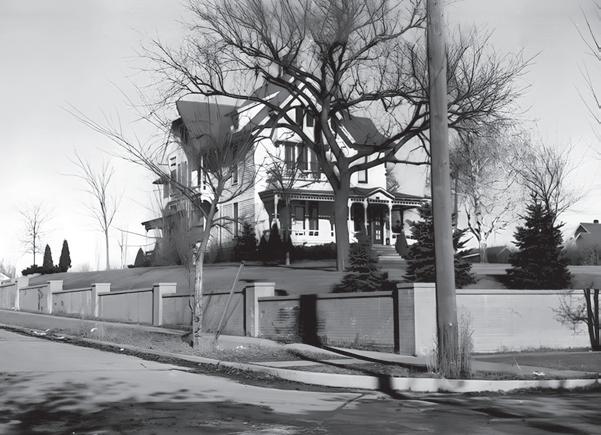
In 1994, Dr. John C. Vanderwoude performed the first pediatric open-heart procedure in South Dakota at the Sioux Valley Heart Center.
the Edith Sanford Breast Center was established. In 2012, the Sanford Heart Hospital was completed. In 2014, Sanford Imagenetics was funded by a $125 million gift from Denny Sanford. n Throughout the 2010s, hospital expansions included Sanford Cancer Center, Van Demark Building, Ronald McDonald House and Ava’s House (adult and pediatric hospice). In 2023, Sanford USD became a Level I trauma center, the first health system in the state to be verified as such. In 2024, the Sanford Center for Digestive Health was created. n The organization is proud to offer the latest in innovative care—with 545 beds and 4,000 employees. Its highly skilled medical teams are known for their passion, leadership and dedication to patients. n The facility’s comprehensive care includes emergency air transport, neonatal and pediatric intensive care, transplant services and specialty centers in children’s care, heart, cancer, neuroscience, sports medicine and women’s health. n By building on the talents, experiences and beliefs of its employees, the hospital aims to improve the lives of patients and residents throughout the diverse communities it serves.

Sanford Vermillion Medical Center, located in Vermillion, South Dakota, has served its communities since the 1930s. Its Dakota Hospital Association was incorporated in May of 1930, with the purpose of providing and maintaining a hospital for patients in Clay County and areas adjacent to it. On Oct. 17, 1935, the Dakota Hospital officially opened. n In the 1960s, it was decided that the health care campus should be expanded, so construction began on an addition to both ends of the existing Dakota Hospital. The project was completed in 1966. By 1989, Sioux Falls’ Sioux Valley Hospital had extended its reach to the Clay County area. During this time, a 36-bed hospital was built adjacent to the Dakota Hospital in 1992. Additions to the health care campus included a new emergency room, a new lobby, and the Family Medicine Clinic. In 2007, Sioux Valley Vermillion Medical Center was renamed the Sanford Vermillion Medical Center. n In early 2014, the Dakota Hospital Foundation signed an agreement with Sanford Health, a non-profit health system, to build a new health care facility on the footprint of the Dakota Hospital in order to provide quality health
This partnership with the Dakota Hospital Foundation and Sanford Health has brought new facilities, new programs and new doctors to serve the Vermillion area’s health care needs.
care close to home for all residents in the region. An investment of $12 million was provided by Sanford Health and $2.45 million from the Dakota Hospital Foundation. The facility houses an outpatient services center for physical therapy, occupational therapy, speech therapy, cardiac rehabilitation services, respiratory therapy and areas for imaging—including a new MRI and ultrasound, as well as equipment for bone densitometry measurements. In Aug. of 2023, 3D mammography began to be offered at Sanford Vermillion Medical Center. n Sanford Vermillion Medical Center provides comprehensive, community-based health care. Since 1989, this partnership with the Dakota Hospital Foundation and Sanford Health has brought new facilities, new programs and new doctors to serve the Vermillion area’s health care needs through its outpatient clinic, hospital, 66-bed intermediate-care nursing home at the medical center and 23-unit assisted living center, called Dakota Gardens. Sanford Vermillion Medical Center is dedicated to transforming patients’ health care experience and providing access to world-class health care in America’s heartland.
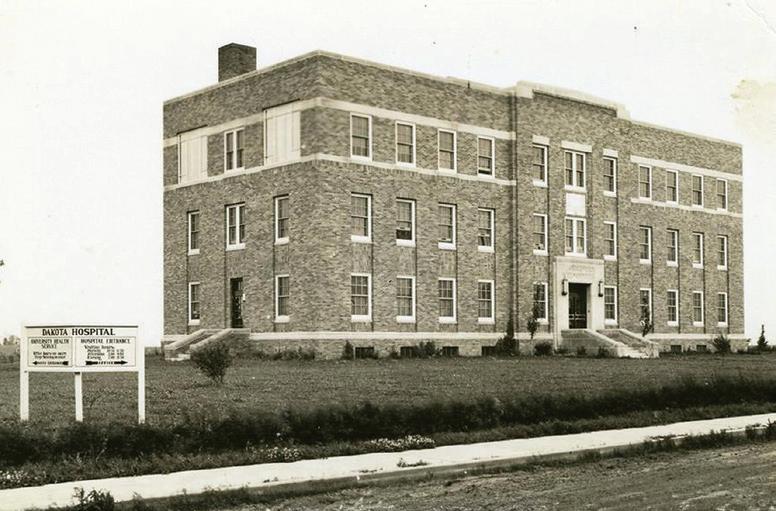
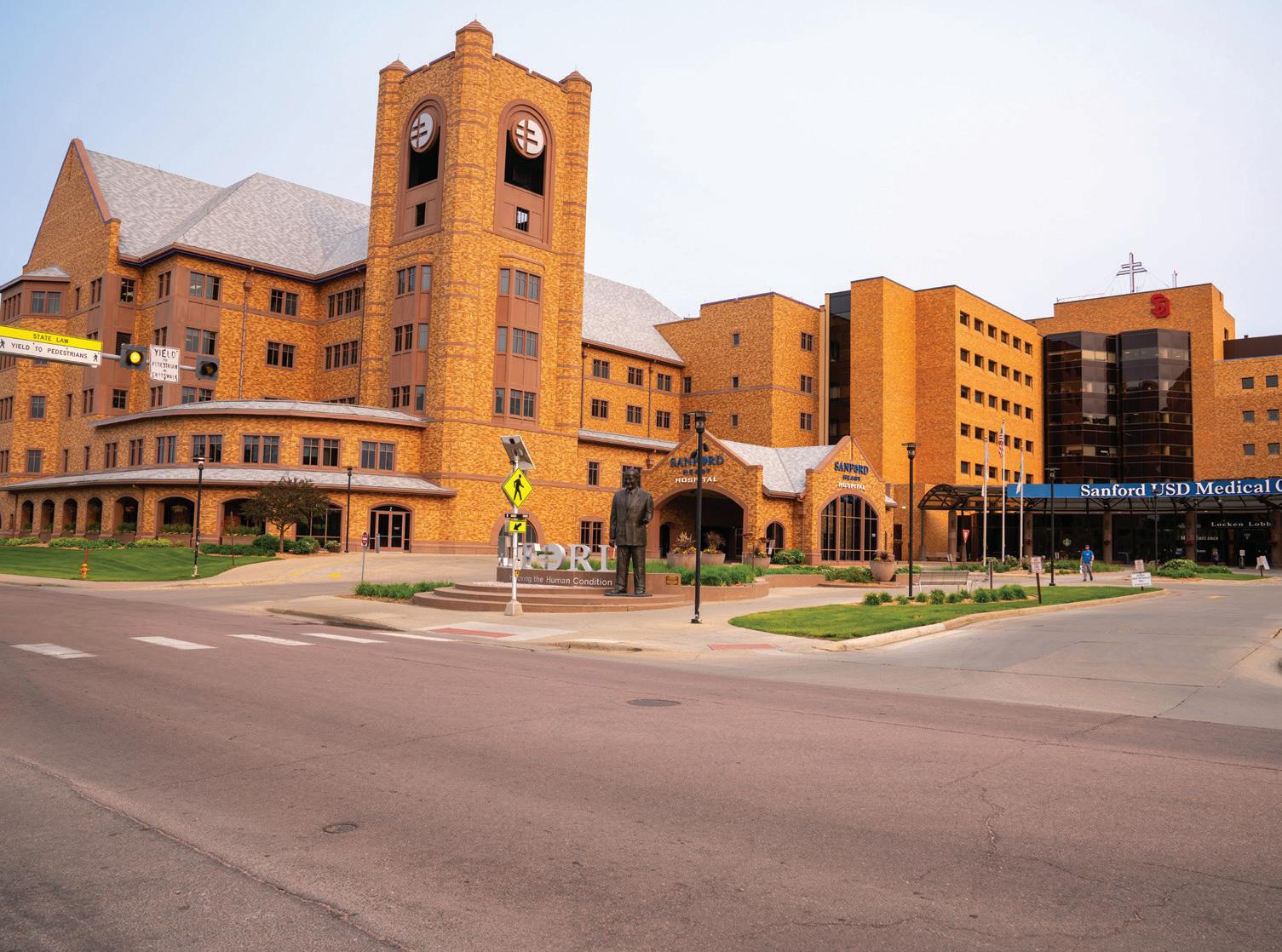
South Dakota marked a significant health care milestone on Dec. 16, 1998, as Select Medical opened the state’s first critical illness recovery hospital, Select Specialty Hospital (SSH)–South Dakota, licensed as a long-term acute care hospital (LTACH). n As its name implies, the 24-bed hospital cares for patients recovering from critical illnesses or traumatic injuries; typically these patients are transferred from an intensive care unit. Patients may be dealing with serious issues such as infectious disease, surgical complications and orthopedic, wound or post-trauma care. Patients may also require ongoing treatment for pulmonary conditions, including ventilator liberation, neurological disorders, cardiac conditions or renal disorders. The hospital is state-licensed, Medicare-certified and accredited by The Joint Commission. n The hospital, which serves South Dakota, Iowa, Minnesota, North Dakota and Nebraska, provides an array of services and programs including pulmonary and respiratory therapies, ventilator liberation and wound care. Clinical-care plans and protocols are guided by a medical director and chief nursing officer. n Hospital staff includes nurses, case managers, dietitians and pharmacists, as well as respiratory, physical, occupational and speech ther -
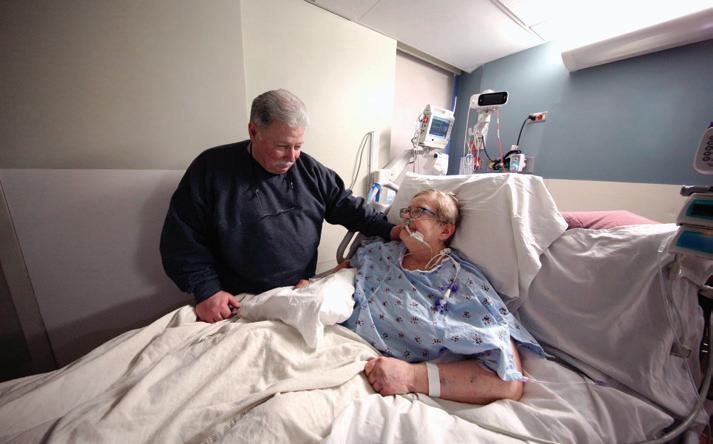
All members of the interdisciplinary care team work together toward a common goal: to provide an exceptional patient care experience that promotes healing and recovery in a compassionate environment.
apists. All members of the interdisciplinary care team work together toward a common goal: to provide an exceptional patient care experience that promotes healing and recovery in a compassionate environment. In short, the experienced, skilled staff help their critically ill patients breathe, eat, think, talk and walk again through customized care plans. n Select Specialty Hospital–South Dakota, formerly Select Specialty Hospital–Sioux Falls, was originally located within Intensiva Hospital at 800 East 21st Street in Sioux Falls. In Dec. 2012, it relocated to the second floor of Sanford USD Medical Center at 1305 West 18th Street in Sioux Falls. n Select Medical is one of the nation’s largest providers of post-acute care, overseeing more than 100 critical illness recovery hospitals, more than 30 inpatient rehabilitation hospitals and more than 1,900 outpatient centers. Its more than 45,000 health care professionals help restore quality of life for thousands of people and their families every day.
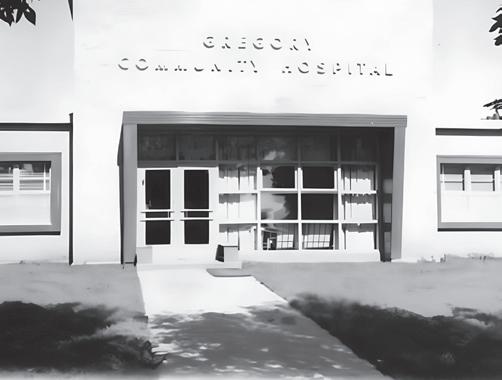
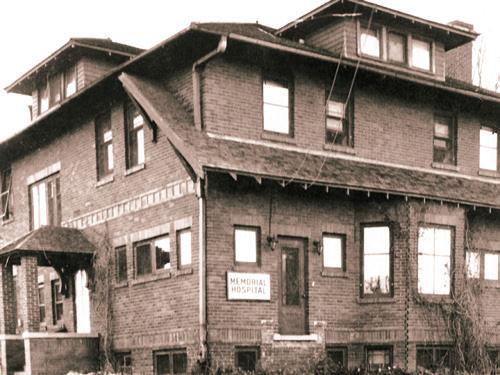
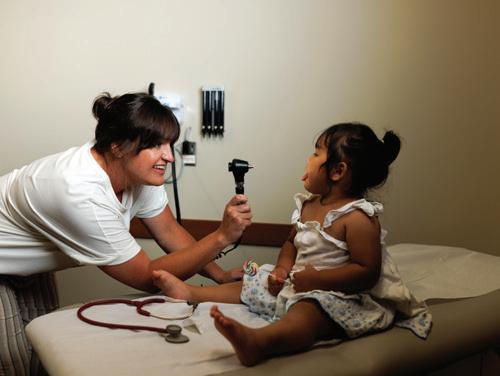
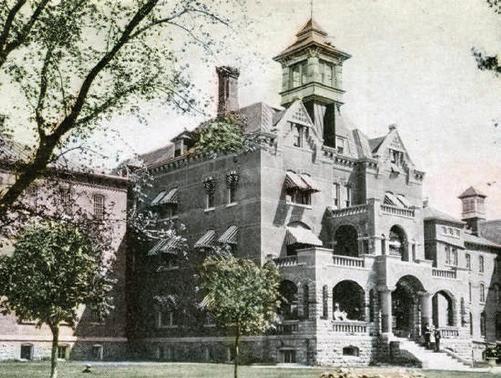
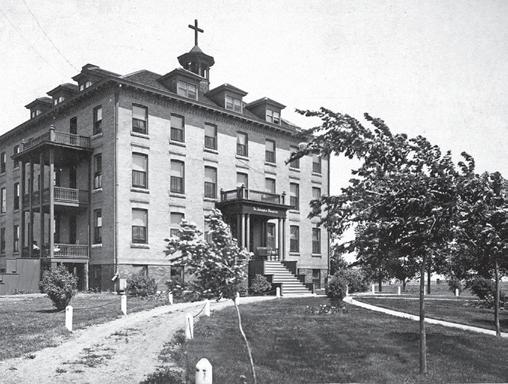

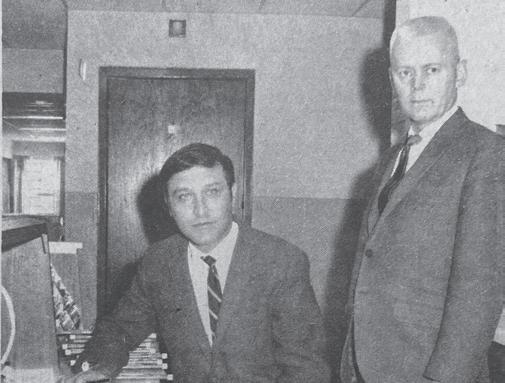
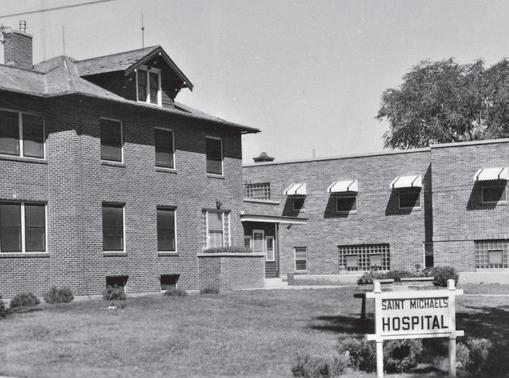

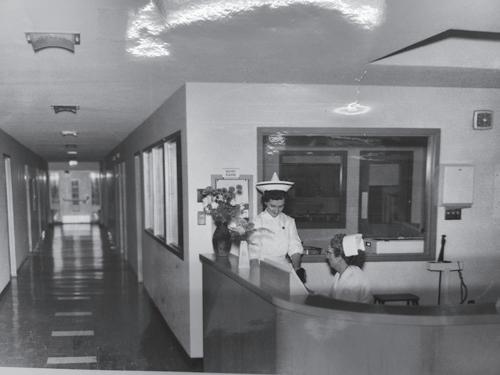


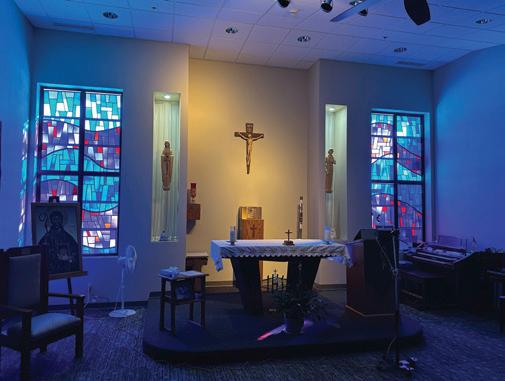

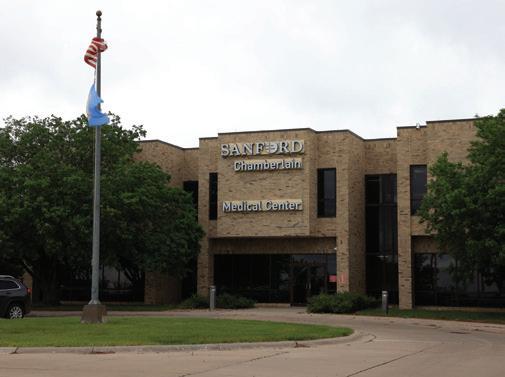
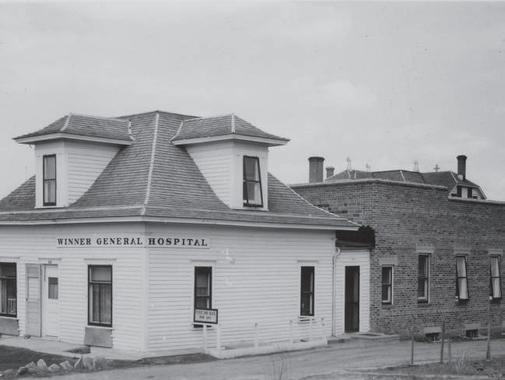
Avera Gregory Hospital
Gregory
Avera Queen of Peace Hospital
Mitchell
Avera Sacred Heart Hospital Yankton
Avera St. Benedict Hospital Parkston
Avera Weskota Memorial Medical Center Wessington Springs
Community Memorial Hospital–Burke
Burke
Douglas County Memorial Hospital Armour
Freeman Regional Health Services
Freeman
Huron Regional Medical Center Huron
Landmann-Jungman Memorial Hospital Avera
Scotland
Platte Health Center Avera
Platte
Sanford Chamberlain Medical Center
Chamberlain
South Dakota Human Services Center Yankton
St. Michael’s Hospital Avera Tyndall
Wagner Community Memorial Hospital Avera
Wagner
Winner Regional Healthcare Center
Winner

Since its founding, Avera Gregory Hospital has been a leading health care provider for rural communities in south-central South Dakota and northern Nebraska. n The first hospital in Gregory’s history opened in the 1930s. In 1947, a new hospital was constructed—later becoming Avera Gregory Medical Clinic. The Rosebud Country Care Center opened in 1962, and the hospital moved to its third location on Park Avenue in 1975. The services offered at this 25-bed critical access hospital outgrew the facility, necessitating a move to a fourth location that integrated all care, accommodating the latest technology and eliminating the potential for duplication of services with laboratory work and imaging. n Originally called Banner Health Systems, in 2007 the hospital joined the Avera Health system, founded by the Benedictine and Presentation Sisters. Avera Gregory is currently the largest employer in the community, with over 130 full- and part-time employees. Not only is the hospital an economic driver for the area, but it’s also a driver of peace of mind for residents, as its support of the local health care system is crucial to maintaining a strong rural community. n The hospital is the definition of rural, regional care— farmers and ranchers make up over 40 percent of service-area residents, and some must travel 40 to 50 miles to receive care. n
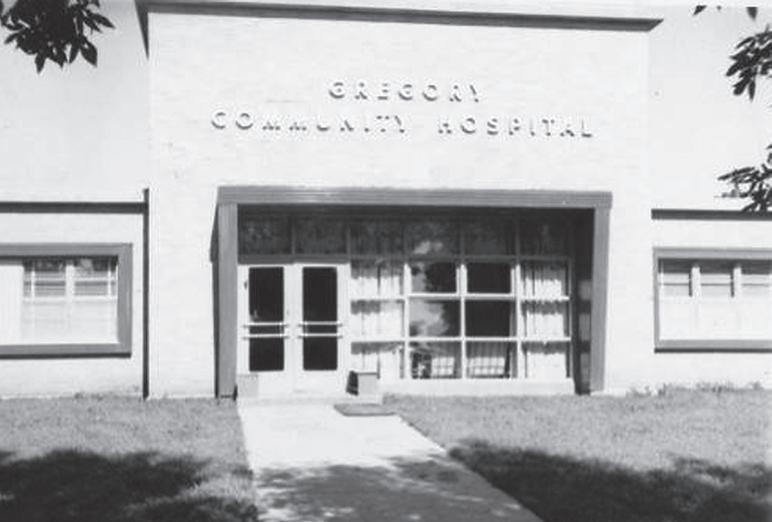
In 2023, Avera Gregory celebrated the opening of a new health campus, including a hospital, long-term care center, clinic and dialysis center. The new campus doubled the hospital’s previ-
Not only is the hospital an economic driver for the area, but it’s also a driver of peace of mind for residents.
ous space, bringing the hospital and Avera Rosebud Country Care Center under one roof and featuring a clinic for both local providers and visiting outreach specialists. n The facility’s on-site dialysis center serves patients from Gregory, Tripp, Todd and Charles Mix counties. The health campus also offers a 24hour emergency room and therapy gym for physical and occupational therapies. n Easy access to the state-of-the-art lab, imaging departments, endoscopy room and surgical suite means less traveling for patients, which is a big win for the residents served by the facility. With the closest regional health care center 110 miles away in Mitchell, many residents are not faced with a decision about whether to be treated in Gregory or elsewhere, but rather about whether to receive health care in Gregory or not at all. n This underlying philosophy has spurred the hospital to continue to add new abilities throughout the last 20 years—a mission made easier through the growing resources of the new campus.
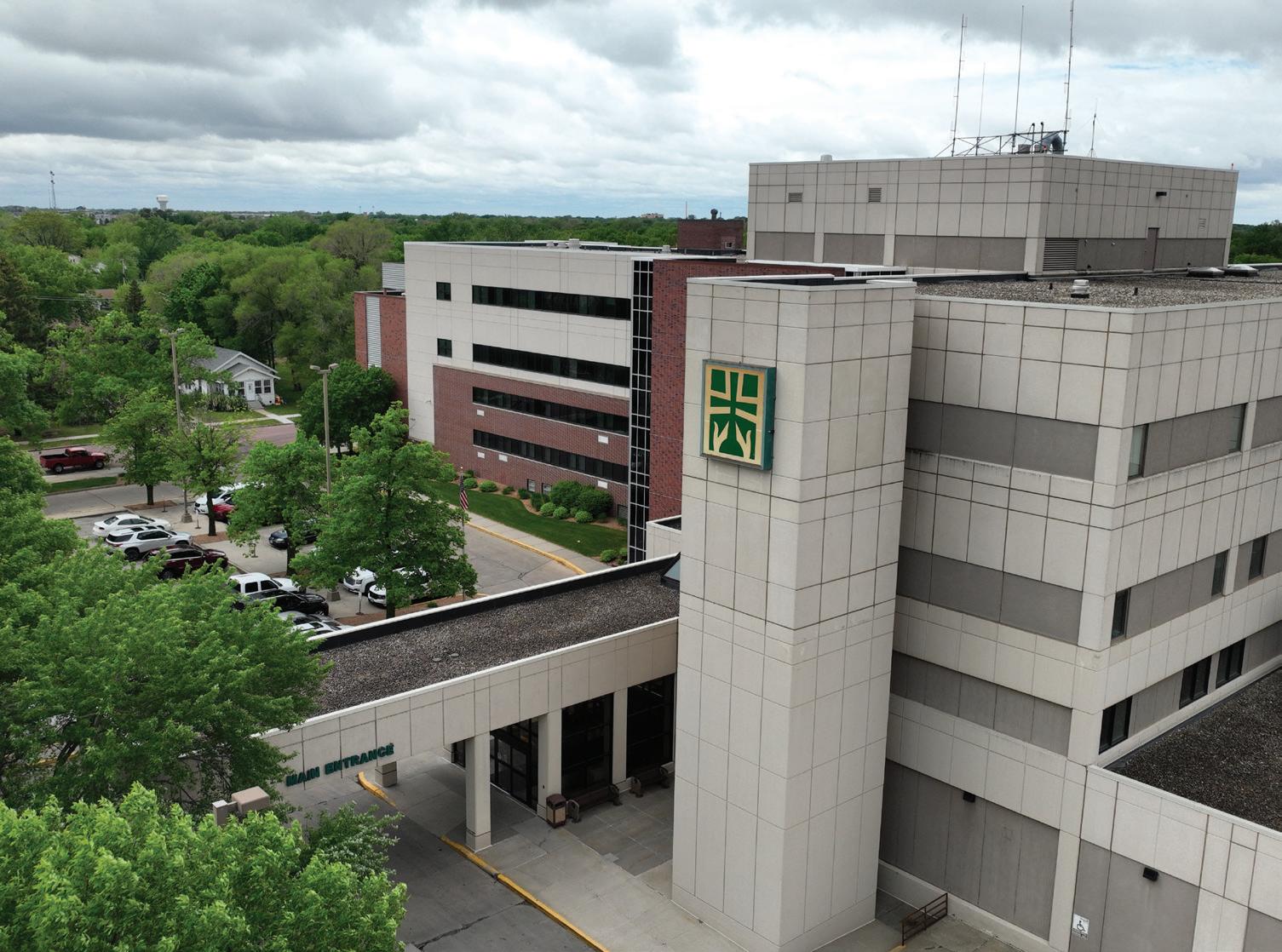
What began as a small, pioneering hospital on the prairie has become a comprehensive medical facility offering sophisticated technology and services for residents of Mitchell and the surrounding area. n The Presentation Sisters established St. Joseph Hospital at the request of Mitchell civic leaders in 1906. It had 30 beds and was staffed by three Sisters, three nurses and Dr. B.A. Bobb. n In 1918, a second hospital was opened in Mitchell: the Methodist State Hospital. In 1921, St. Joseph Hospital constructed a new building to accommodate 85 beds and 18 bassinets. In 1951, construction began on a 45-bed addition and, in 1974, another addition accommodated admitting, X-ray, surgery, emergency, a lab, medical/ICU and receiving/purchasing. In 1991, St. Joseph and the Methodist Hospital came together to create Queen of Peace Hospital. In the Catholic faith, Queen of Peace refers to the Blessed Virgin Mary—the mother of Jesus Christ, who is also called the Prince of Peace. n A major expansion in 1994 included a new ambulance entrance, lobby and chapel. In 2000, the Benedictine and Presentation Sisters brought their health care ministries together to form the Avera Health system. In December that year, a cancer center and physician office building opened. In 2006,
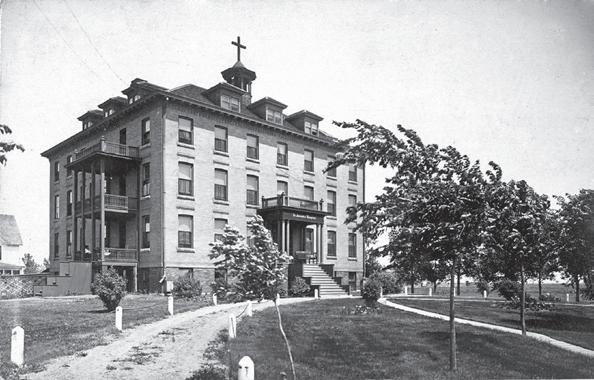
Today’s health care consumers seek convenient and accessible services with a focus on wellness and prevention.
two floors were added to accommodate surgical services and the Women’s Center. n In 2016, Avera Queen of Peace opened a 70,000-square-foot facility on the Avera Grassland Health Campus, housing the latest technology and a comprehensive mix of medical services and specialty care. The facility now provides inpatient and outpatient health care, specialty medical services, diagnostic imaging, labor and delivery, surgery and a 24/7 emergency department. It is a verified Level IV trauma center. n Surgical suites offer inpatient surgery, same-day surgery and minimally invasive techniques, including surgical robotics. A wound-care center features hyperbaric therapy. n Patients have local access to general surgery; ophthalmology; obstetrics/ gynecology; pain management; urology; dermatology; primary care; pediatrics and ear, nose and throat. Outreach is available in person and by telemedicine. Hospitalists coordinate care from the emergency room to the hospital and post-hospital care. Access to specialty services is enhanced by robust telemedicine services. n One of six regional cancer centers within the Avera system, Avera Cancer Institute in Mitchell treats patients through surgery, chemotherapy, radiation and survivorship. The Mitchell High Risk Breast Clinic provides local access to preventive care and alternative screening options for those identified as high risk. n Today’s health care consumers seek convenient and accessible services with a focus on wellness and prevention. Avera Queen of Peace embraces these changing dynamics as it develops the Avera Grassland Health Campus and health care facilities in Mitchell.

A trusted health care leader in its region for more than a century, Avera Sacred Heart Hospital in Yankton is a thriving community hospital offering a comprehensive array of medical and health services in a wide range of specialties. Nationally recognized for quality, Avera Sacred Heart has been named to top 100 lists for numerous consecutive years. n Among hospitals in the Avera Health system, Sacred Heart was the earliest to be founded. Bishop Thomas O’Gorman prevailed upon the Benedictine Sisters of Sacred Heart Convent in Yankton to enter the health care ministry alongside their mission of education. Upon opening in Nov. 1897, Sacred Heart Hospital was a 30-bed facility located in a remodeled building that formerly served as a girls’ academy, school and orphanage. n In 1912, an 80-bed hospital was constructed. In 1965, the Sisters completed and dedicated an addition to the hospital and a new wing—now called the Benedictine Center. In 1981, the new 144-bed Sacred Heart Hospital was constructed, the third building in the institution’s first 84 years. n In 1998, development of the Avera Sacred Heart Majestic Bluffs campus began, which would include a new home for Avera Sister James Care Center, assisted living and independent living apartments and townhomes. n Sacred Heart took on the name Avera in 2000 as the Benedictine and Presentation Sisters brought their respective hospital systems together as one. n In January 2003, the Avera Sacred Heart Rehab & Wellness Institute opened, since renamed the Surgery Center, which houses the Same-Day Surgery Center, Avera Sacred Heart Wellness Center and physical therapy. In 2006, Avera Sacred Heart’s new emergency department opened its doors, doubling the number of patient rooms and providing the latest in emergency care technology. A renovation was completed in 2023. n Construction of the 60,000-square-foot Professional Office Pavilion was completed in 2007. To meet expanding needs, the Northern Lights addition was built, which contains a café, conference rooms, laboratory, registration and more. n In Dec. 2015, more than 70 beds in
Among hospitals in the Avera Health system, Sacred Heart was the earliest to be founded.
the Avera Yankton Care Center were moved to a new Avera Sister James Care Center addition, which offers a café, theater and other amenities for residents, as well as a hospice residential house. n In 2024, Avera announced the construction of a new Avera Cancer Institute location on the Avera Fox Run campus, bringing all oncology specialty care under one roof in Yankton. n Today, Avera Sacred Heart provides comprehensive inpatient and outpatient health care, specialty medical services, women’s services including labor and delivery, same-day and inpatient surgery, advanced imaging and diagnostics, therapy and rehabilitation and a 24/7 emergency department. n The hospital serves as a hub of care for multiple Avera locations in Yankton and nearby outreach locations.
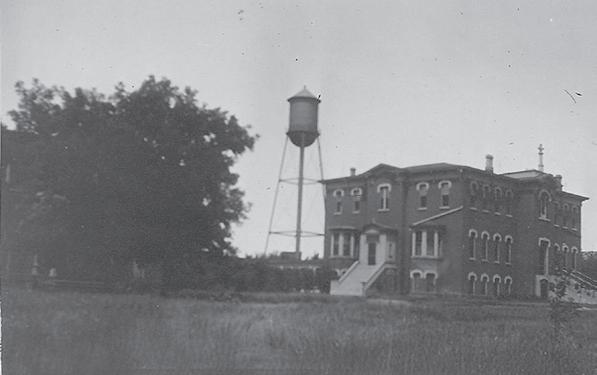
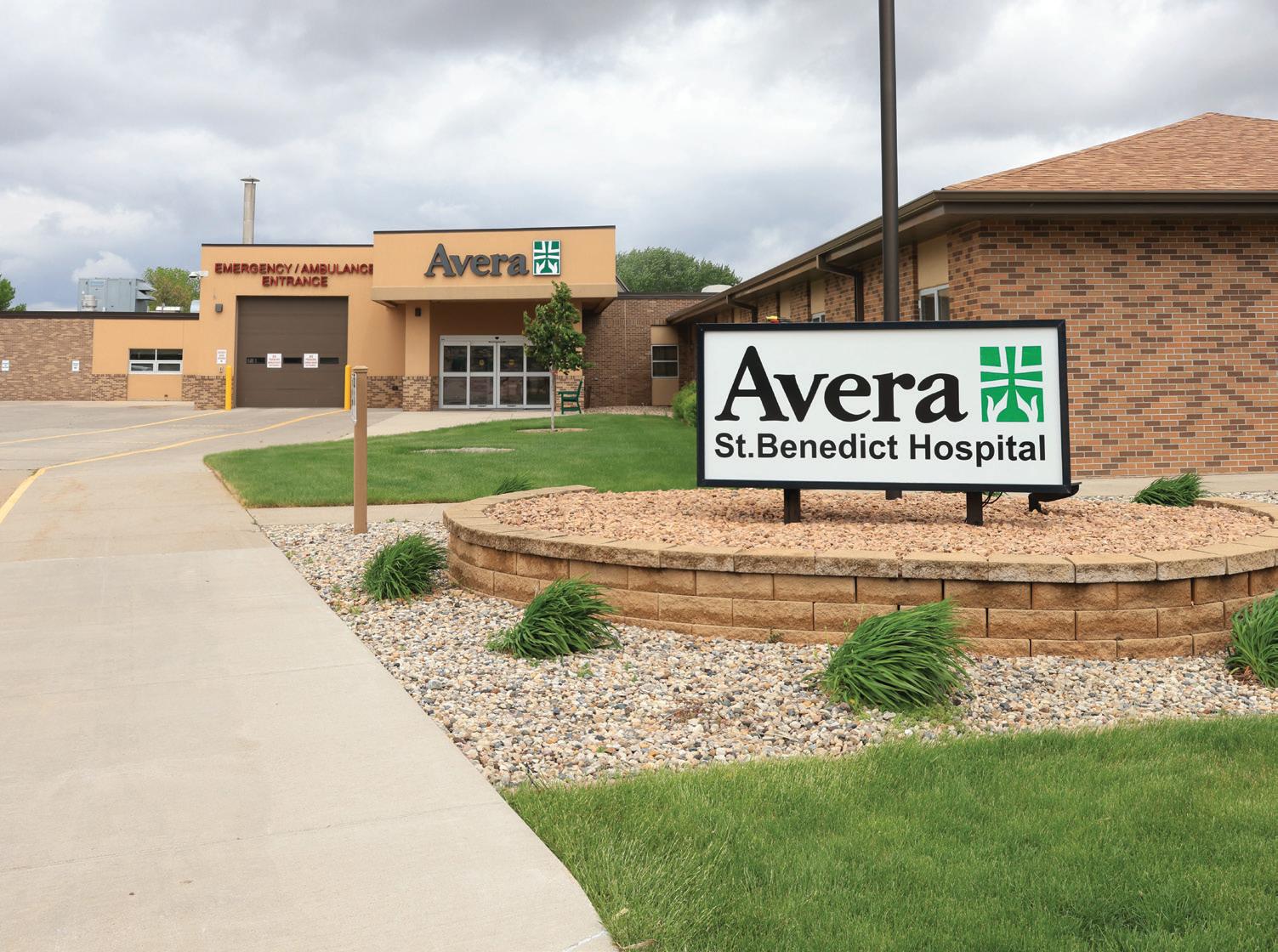
Serving the rural community of Parkston and Hutchinson County in southeastern South Dakota, Avera St. Benedict Health Center is nationally recognized for quality and is the largest employer in Parkston. n The hospital has seen plenty of growth since its start in 1934, when the Benedictine Sisters of Sacred Heart Convent and Dr. J.L. Waldner opened a 12-bed facility. In 1946, a new hospital wing opened, featuring 34 beds and 12 bassinets. Then, in 1965, a new 38-bed acute care hospital was built. In 1988, St. Benedict purchased the Good Samaritan Nursing Center and a new home for the long-term care facility was constructed in 1989, attached to the hospital. The hospital made further additions in 1993, 2005, 2015 and 2018. n In 2000, St. Benedict became part of Avera Health as the Benedictine and Presentation Sisters joined their health care ministries into one system. n Now a 25-bed critical access hospital, Avera St. Benedict features surgical and obstetric capabilities. On-site offerings include a fully digital radiology department, laboratory and emergency services. The facility also provides physical, occupational and speech therapy. The campus includes the Avera St. Benedict Certified Rural Health Clinic, Avera Bormann Manor nursing care facility, a 25-bed assisted living facility and the Avera St. Benedict Wellness Center. n The hospital is staffed by primary care physicians, certified registered nurse anesthe -
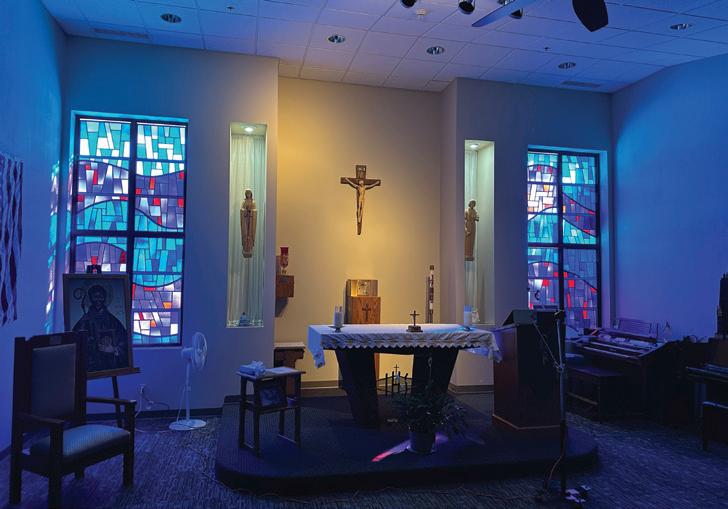
The hospital has seen plenty of growth since its start in 1934, when the Benedictine Sisters of Sacred Heart
Convent and Dr. J.L. Waldner opened a 12-bed facility.
tists, advanced practice providers and a mental health counselor. Outreach and specialist physicians and providers offer services ranging from oncology and cardiology to orthopedics and pulmonology. n Outreach is a staple of the hospital. Avera St. Benedict is the primary medical provider for nearby Hutterian Brethren colonies. Avera St. Benedict also operates certified rural health clinics in Tripp and Lake Andes and provides outreach to area nursing homes and consultations at other health care facilities. n Telemedicine is another hallmark of Avera St. Benedict for specialties such as psychiatry, infectious disease and palliative care, as well as support in pharmacy, emergency, ICU and hospitalist services. n Avera St. Benedict has received multiple recognitions as a top critical access hospital and the hospital’s wound-care clinic has earned clinical distinction and patient satisfaction awards. These honors highlight the hospital’s standing as a beacon of innovation and health care expertise in the community.
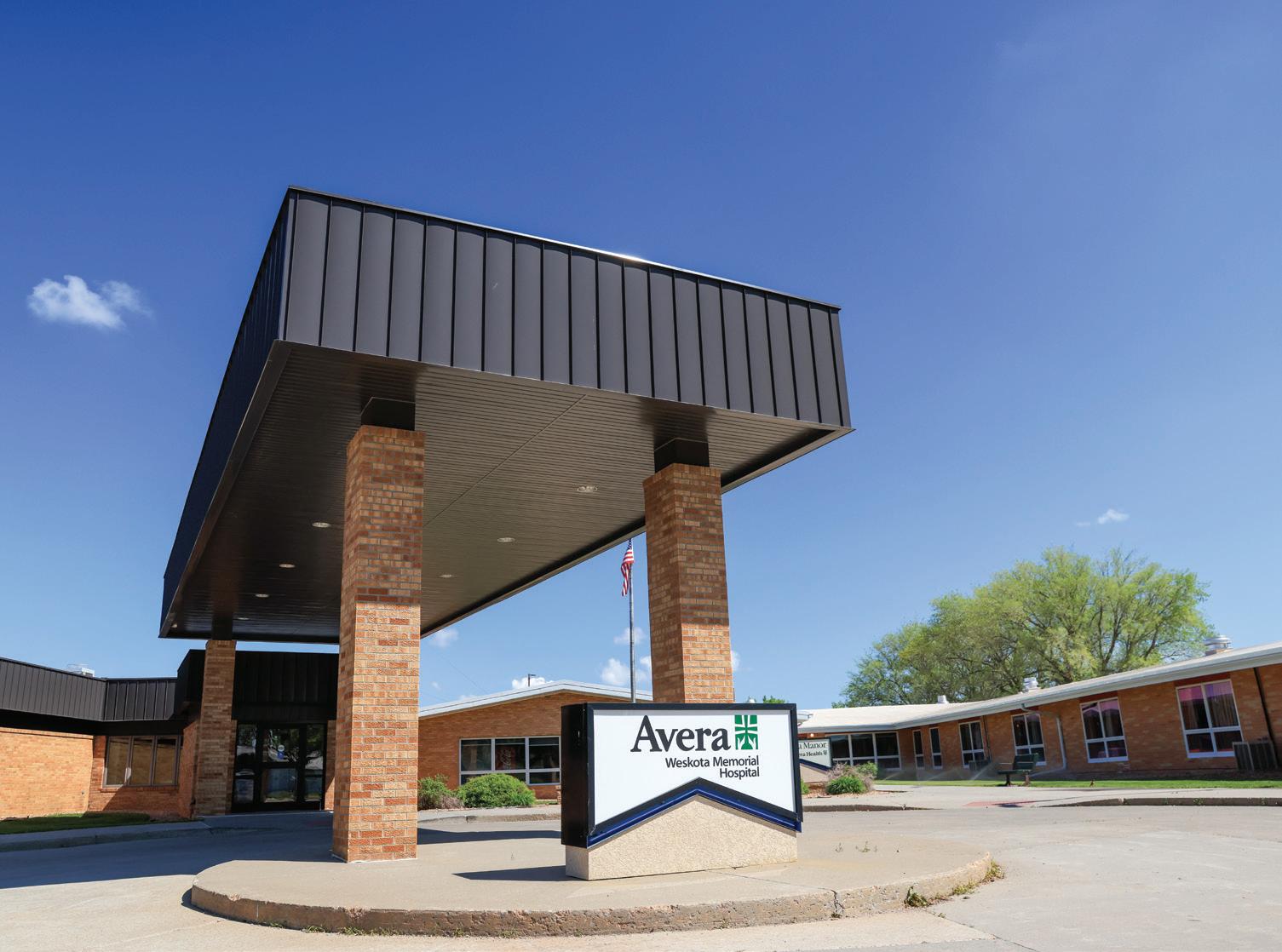
The population of Jerauld County and Wessington Springs benefits from a robust rural medical campus that serves a wide range of needs, including a critical access hospital, medical and dental clinic, long-term care center and senior apartments—all housed under one roof. n Avera Weskota Memorial Hospital was originally founded in 1947 as Jerauld County Hospital to honor county residents who lost their lives in World War II. The original hospital was established in a remodeled boys’ dormitory known as the McConnell House and was funded through the efforts of 80 Jerauld County men who each advanced $100, plus an additional sum of $35,000 that was achieved through the sale of bonds. n Since 2000, Avera Weskota has been an affiliate of Avera Health, founded by the Benedictine and Presentation Sisters. A county-owned facility, it is leased by the Avera Queen of Peace Hospital region. n In addition to inpatient care, swingbed care and a 24/7 emergency room, services at the hospital include computed tomography (CT), digital mammography, EKG, ultrasound, laboratory and more. Avera Lab Direct Access testing is available as an additional service. Avera’s 3D mobile mammography unit visits Wessington Springs on a monthly basis. Outpatient infusions, injections, bladder scans and more are also offered at Avera Weskota. n Wessington Springs is served by Avera Careflight air-transport service. For the 1,660 residents of Jerauld County, this access to local medical care is not only convenient, but can be lifesaving in the case of critical illness or injury. n A family practice is available locally, too, as well as a robust group of therapy and rehabilitation specialists, including physical therapy, occupational therapy, speech therapy and cardiac rehab. n Thanks to telemedicine connections, consultations and treatment take place with a wide range of medical specialists, all without leaving the Wessington Springs area. Specialties offered
For the 1,660 residents of Jerauld County, this access to local medical care is not only convenient, but can be lifesaving in the case of critical illness or injury.
are surgery, neurology, infectious disease, cardiovascular, hematology, transplant, oncology, urology, nephrology and hepatology. n Weskota Manor Avera, adjacent to Avera Weskota Memorial Hospital in Wessington Springs, offers skilled longterm care and independent living provided in a people-centered environment. The Weskota Wellness Center provides access to quality fitness equipment in a safe, clean environment. n The local medical campus has served thousands of residents over the decades and continues to be an attractive amenity and economic driver for the community.
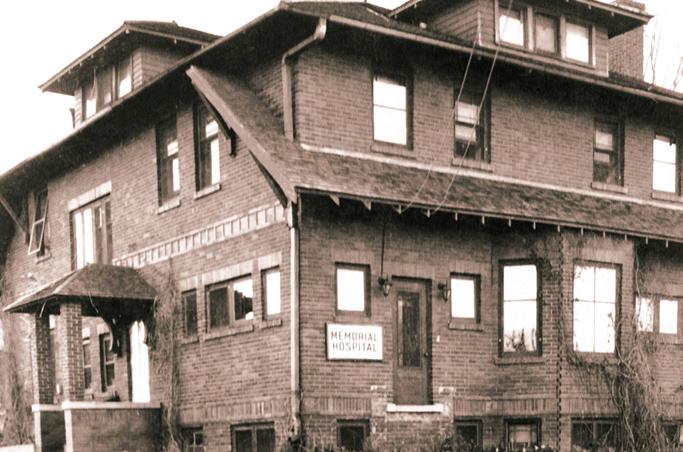

The history of health care in Burke, South Dakota, dates back to the 1900s when Joseph Waterman, MD, and a Dr. Sautler arrived during the opening of the townsite on Aug. 8, 1904. These medical pioneers traveled by horse and buggy, day or night, to patients’ homes. n Then, in 1913, Robert J. Quinn, MD, arrived in Burke to practice medicine with a much different approach. He recommended providing rooms for patients in an available home in Burke for services such as surgery, difficult births, serious illnesses or injuries. This lasted for several years; however, Dr. Quinn envisioned the building of an actual hospital in Burke. The need was answered when the town’s existing courthouse was moved to a new brick building, constructed between 1933 and 1934. The old courthouse thus became Burke’s first community hospital. Its first patients were admitted in Nov. 1934. n Progress was also made on March 29, 1947, with the groundbreaking of a new 30-bed community hospital, erected on the site of an apple orchard on Jackson Street. It was built and equipped entirely by members of the community, without state or federal aid. The largest financial contribution to the effort was obtained from a bull auction that was carried over a national radio network. Dr. Quinn’s dedication and the community’s hard work were rewarded as the hospital was ready for occupancy on June 1, 1948. n In 1957, a clinic was built on the hospital grounds. Dr.
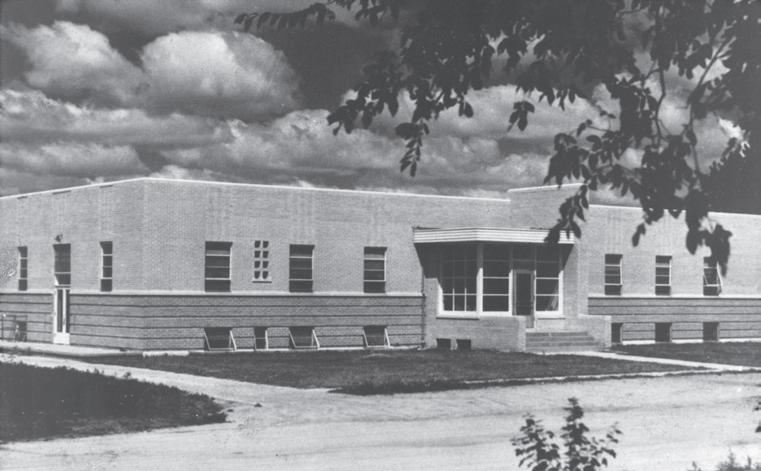
The hospital has a long history of community support, which has a direct correlation with the success of the organization.
E.P. Sweet joined the facility in 1958 as Dr. Quinn retired later that year—Dr. Sweet became the chief of staff and the hospital’s only physician, continuing to practice in the Burke community for 19 years. n Additions were made to the hospital in 1972, 1988 and, most recently, in 2018—the largest to date—adding 18,000 square feet to the facility, thus increasing the footprint of the organization by combining the clinic and hospital (which previously existed in two separate buildings) and moving the retail pharmacy to a new location for patient convenience. Services were consolidated into one location, and this updated, modern facility now allows for continual advancements in equipment and technology. n The community recognizes the importance of health care and Community Memorial Hospital works to ensure services continue for generations to come. n As evidence of this dedication to the community, Community Memorial Hospital–Burke was named one of the Top 20 Critical Access Hospitals by the National Rural Health Association in the category of patient satisfaction for the last three years.

On Sept. 9, 1957, approximately 700 proud citizens gathered for the dedication of Douglas County Memorial Hospital (DCMH). The 20-bed hospital was constructed for approximately $200,000 with a staff of 20 employees directed by Administrator Jean Guenthner. In its first year, 452 patients were admitted and 56 babies were born. Ronald Price, MD, and Mary Price, MD, were its first practicing physicians. The hospital guild organized benefits to purchase new equipment and sponsored annual food drives. n In 1987, when Dr. Ronald Price retired after 40 years of service, Douglas County commissioners voted to cease management of the hospital. The future of the facility was uncertain but, thanks to a group of dedicated citizens, in 1989 a new hospital corporation was formed, with local residents serving on its board of directors. n Also in 1989, Marlys Luebke, MD, started her practice in the city of Corsica. This proved to be a turning point for the hospital. Vanessa Miller, PA-C, joined the staff in 1990 and Dave Schwenk, PA-C, joined in 1992. n A helicopter pad was also added in 1992 and many outreach services were instituted. In 1998, a new addition was added that houses the Prairie Health

The future of the facility was uncertain but, thanks to a group of dedicated citizens, in 1989 a new hospital corporation was formed.
Clinic–Armour, offering cardiac rehabilitation, physical therapy, laboratory, medical records, optometry services and a community education room. In 2000, the hospital was licensed as an 11bed hospital, which it remains today. n In 2005, a clinic in Stickney opened, expanding the hospital’s coverage area. It opened the Prairie Health Clinic–Corsica later that year, providing residents close-to-home health care with a laboratory and pharmacy. n In 2012, DCMH received a grant for hospital improvements including additional outpatient rooms, an enlarged emergency room and inpatient pharmacy, and a new family waiting room, labor/ delivery room and nursery. A new attached ambulance bay allows indoor patient loading. n With the outbreak of COVID-19 in 2020, positive air-exchange rooms were added and an isolation area was created. n Today, DCMH is a trauma-receiving, critical access hospital offering observation, acute and swing/skilled admissions. DCMH provides chemotherapy, outpatient infusions, surgeries and outreach services. It continues to grow—its clinics provide care for patients ranging from newborns to the elderly. This independent hospital strives to provide the best health care in the area with a pharmacy, community health services and an assisted living facility. Since 1999, CEO Heath Brouwer and the board of directors oversee more than 100 employees. n The ability to remain independent has allowed DCMH to utilize resources and establish relationships that allow it the greatest opportunity to serve its patients high-quality care in the most cost-effective and efficient manner.
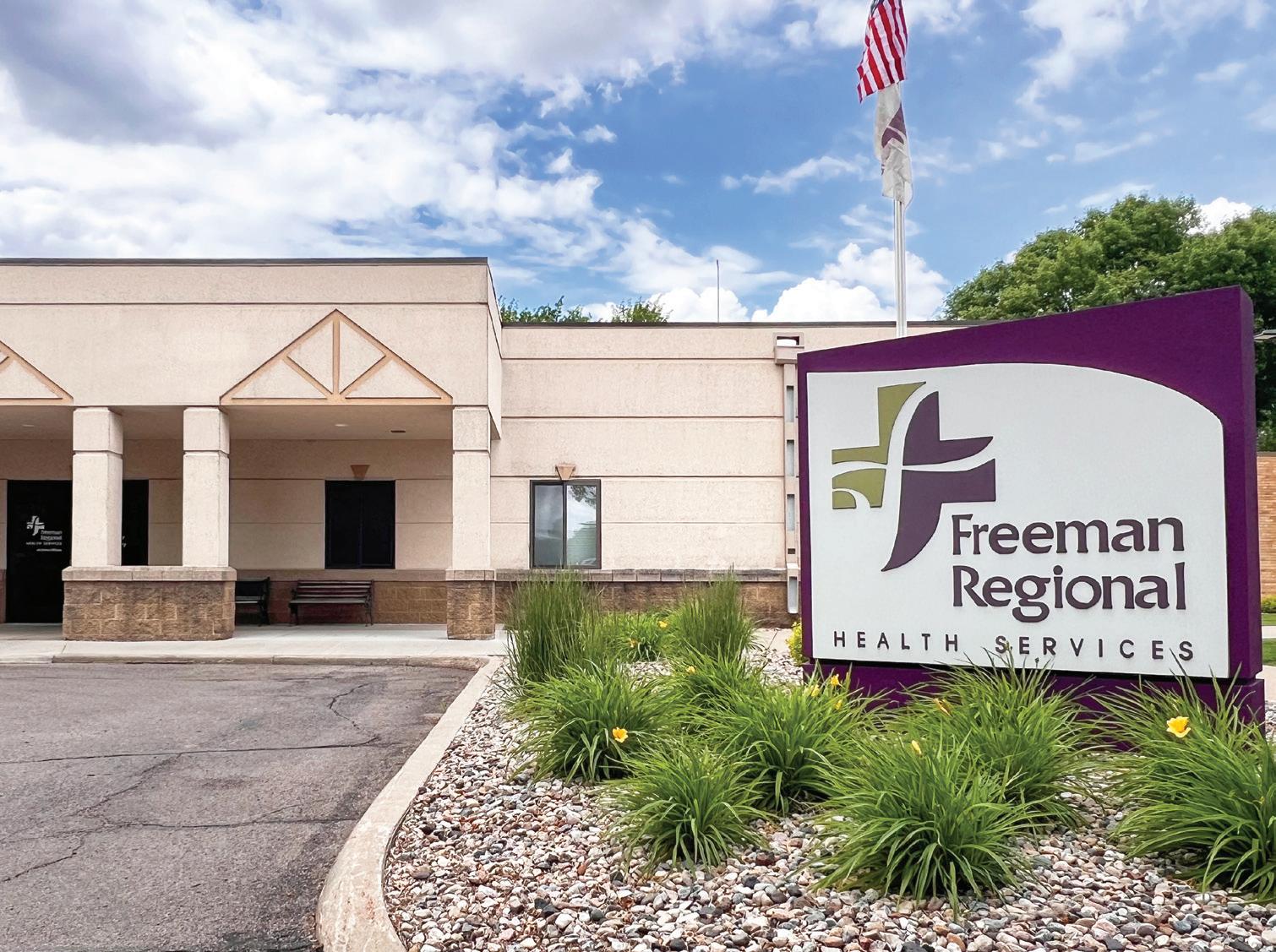
The vision for health care in the Freeman community became a reality in 1952 with the completion of a 16-bed hospital, officially named Freeman Community Hospital. This effort marked the beginning of what would become a transformative journey for health care in the area. n As Freeman grew, 16 beds proved inadequate, prompting the addition of a 14-bed extension to the hospital in 1960. In 1971, a 30bed nursing home addition was completed, and another 29 beds were added in 1979, ensuring that Freeman’s elderly residents had access to care. n During the following decades, the hospital underwent more expansions to meet the evolving needs of the community. In 1994, a significant milestone was reached when the Rural Medical Clinic—built in 1963—was physically connected to the hospital, creating a seamless health care experience for patients. n Health care needs in the area grew and, in 1997, Walnut Street Village was built, followed by Dewald Street Village in 2007. Each congregate living facility offered 10 independent-living apartments. n Recognizing the regional scope of its health care offerings, Freeman Community Hospital officially became Freeman Regional Health Services (FRHS) in 2004. This name change reflected the broader reach of the facility and its commitment to serve the region. n In 2005, a 10-bed Dementia Care Unit opened, providing specialized care for residents, an important part of the nursing home,

In 1994, a significant milestone was reached when the Rural Medical Clinic was physically connected to the hospital, creating a seamless health care experience for patients.
offering a safe environment tailored to residents’ needs. n In 2011, FRHS purchased the practices of the Rural Medical Clinics in Freeman, Menno, Marion and Bridgewater in a joint venture with Avera. This acquisition expanded FRHS’s reach and solidified its commitment to providing comprehensive health care services to surrounding communities. n FRHS then became an Avera affiliate in 2020. In 2023, the Salem Mennonite Home, an assisted living facility with a longstanding reputation in Freeman, joined FRHS. n FRHS offers top-quality care with the introduction of advanced technologies such as 3D mammography, DEXA and a new 64-slice CT supporting the expansion of outpatient services such as Planet Heart. The priority of its leadership is to foster a strong culture rooted in its mission, vision and values, as well as CARE standards—Compassion, Attitude, Respect and Excellence. These remarkable achievements would not be possible without the dedication and guidance of its board of directors, medical providers, leadership and care team. n In order to further strengthen rural health care, planning is underway for a new campus. FRHS values its history and is committed to enhancing the health and wellness of the communities it serves for generations to come.

In Nov. 1947, in a crippling snowstorm, the hospital that would eventually become Huron Regional Medical Center (HRMC) opened its doors. The first patients at St. John’s Hospital were 11 babies, transferred from Sprague Hospital, followed by 119 other patients during the hospital’s initial days. The facility had been developed by Rev. J.J. O’Neil, who envisioned a fully equipped and modern hospital to serve the community. St. John’s, operated by Franciscan Sisters, opened just in time to serve an influx of polio patients that soon occupied an entire floor of its 140-bed facility in 1948. n Thirty years later, in July 1978, St. John’s was purchased by the community and incorporated as Huron Regional Medical Center. Facility upgrades have occurred over the years, with additions or renovations in 1983, 1995, 2003, 2019 and 2022, ensuring HRMC is equipped with stateof-the-art technology to serve as a regional hub for maternity, imaging, emergency and trauma care and surgery. HRMC boasts 3D mammography, Philips Ingenia Ambition 1.5T MRI and Atlas uCT for the best imaging technology available. n To keep primary and specialty care local, the HRMC Physicians Clinic was constructed in 2014, with on-site X-ray and lab. In 2022, the Physicians Clinic expanded, doubling its size to make room for additional providers, including those who had previously served at Tschetter & Hohm Clinic, which operated from 1946 to 2022. Clinic services consist of pediatric, family and internal medicine, general surgery, orthopedics, podiatry, cardiology, OB/Gyn, urology and wound care. n In 2021, HRMC purchased longtime physical therapy practice ProPT, merging with its inhospital rehabilitation department to create HRMC ProRehab.
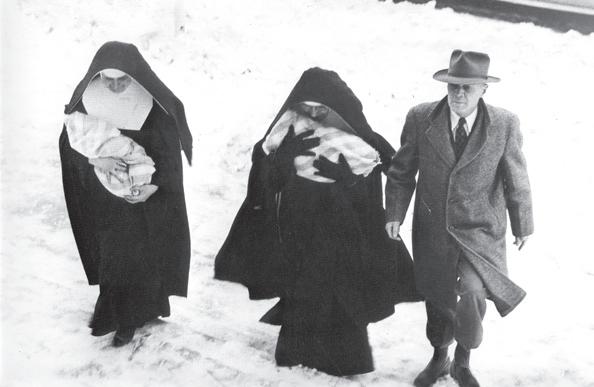
Pride in the ability to truly care for the community where they live is a common theme expressed among caregivers at HRMC.
With two locations, ProRehab offers hydrotherapy, lymphedema therapy, blood-flow restriction therapy, LSVT BIG for individuals with neurological disorders, pelvic floor therapy and more, with full-service physical, speech and occupational therapy. In 2023, Huron native Kevin Hofer, MD, an orthopedic surgeon, arrived, advancing HRMC into the world of robotic-assisted surgery, with Mako SmartRobotics. In 2024, HRMC welcomed Jordan Finck, DPM, adding foot and ankle surgery to the world-class surgical care available locally. n Most recently, HRMC merged with New Life Clinic, a family medicine and general surgery practice. A walk-in Convenient Care at the HRMC Physicians Clinic serves the urgent-care needs of the community. n Pride in the ability to truly care for the community where they live is a common theme expressed among caregivers at HRMC. Whether a new birth, emergency services or preventative medicine close to home, the vision born in 1947 to provide care to the community remains. Recollection of growth and change paired with a focus on the future bring HRMC to where it stands today, with more than 77 years of caring for neighbors and friends, right here in Huron.
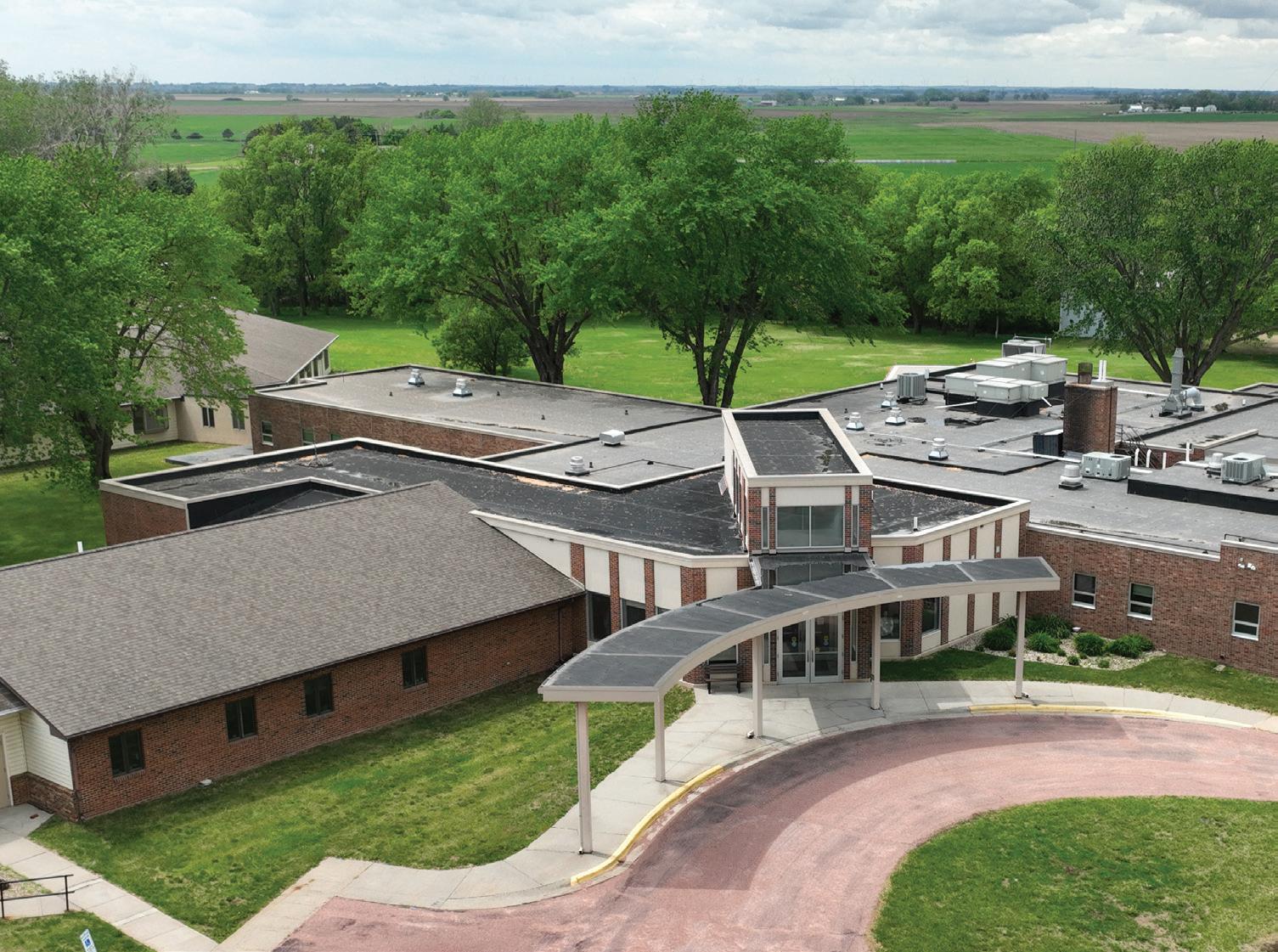
In 1964, the Scotland Community Hospital Committee was formed with the dream of building a hospital in Scotland, South Dakota. The committee raised private and grant funds to make their dream a reality just five years later. The facility groundbreaking ceremony took place on April 7, 1968. On Jan. 16, 1969, Mrs. Frank Vesely was appointed hospital administrator of the soon-to-be “new, ultra-modern health facility,” as it was called. Members of Company D of the 153rd Engineers Battalion of Springfield, South Dakota, constructed a new road to the hospital site, where it was dedicated by Governor Frank Farrar on Sept. 14, 1969. The facility officially opened on Nov. 5, 1969, and its name represented two hometown physicians, Dr. Landmann and Dr. Jungman, who cared for the community prior to the hospital’s existence. n The hospital grew and changed over the years, with major remodels taking place throughout the facility’s history. In 1991, West Winds Apartments, independent living for people over 65, was added to the campus; the Scotland Medical Clinic addition was completed in 1996 and the town’s retail pharmacy, Scotland Pharmacy, was purchased and added to the campus in 2003. Landmann-Jungman Memorial Hospital partnered with Avera as a Partners in Health site in 1999. The facility’s first use of eCare services started in 2011, followed by an electronic medical record in 2014. Additional major upgrades to equipment, the physical plant and patient-care areas took place between 2017 and 2024. In summer of 2025, the facility was proud to become the first rural emergency hospital in South Dakota. n In its more recent history, Landmann-Jungman has been a leader in rural health quality,
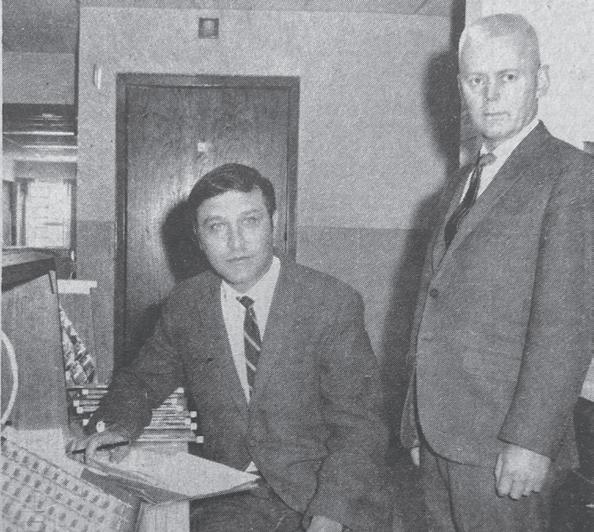
In summer of 2025, the facility was proud to become the first rural emergency hospital in South Dakota.
exceeding state and national benchmarks in the delivery of quality care. As a result, it has been recognized by various state and national organizations for its quality and leadership efforts in rural health care. The facility offers many outpatient services locally for the people of Scotland and surrounding rural service area, including access to world-class eCare services, emergency care, laboratory services, specialized imaging services, rehabilitative therapies and more. n The family-centered, employee-positive culture is second to none, which is evident in the attitude of the staff and how they care for the community and each other. The community and hospital rally together in times of need and tragedy with selfless collaboration, ensuring an evolving survivorship of each, well into the future. Quality care, close to home—that is what Landmann-Jungman Memorial Hospital Avera offers.

Platte Health Center Avera began as Platte Community Memorial Hospital when, on Sept. 2, 1947, a group of residents met at Platte’s Servin Hotel to discuss the possibility of creating a community hospital. The group decided to purchase the Sen. Johnson house, and an architect converted the building into a hospital. In 1947, the Platte Hospital Auxiliary was organized and, through the years, raised funds to benefit the facilities. n In Oct. 1949, the hospital was dedicated. It included a laboratory, X-ray and dark room, laundry room, kitchen, a private room, drug room, operating room, eight-bed ward, delivery room, formula room, sterilizing room and nursery. An elevator facilitated movement between floors. n In 1955, an addition provided a full basement for a drug room, nursery and seven two-bed rooms. Solicitors raised funds and the remainder was borrowed from the community for a period of 15 years. During this time, the hospital also organized a walking blood bank. In 1958, it installed a medical-record system. n In 1961, the hospital sent out a questionnaire to gauge whether the community was interested in a nursing home facility. The answer was yes and, after two years of planning, construction began on a 40-bed
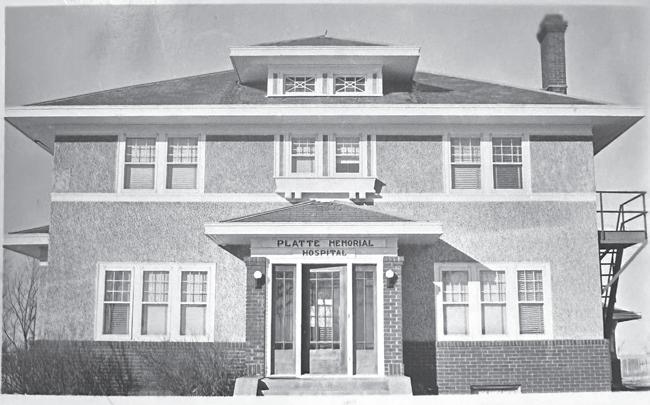
In 1961, the hospital sent out a questionnaire to gauge whether the community was interested in a nursing home facility. The answer was yes.
nursing home. In Jan. 1975, eight rooms were added. n In 1994, the Platte Hospital and Care Center entered into an agreement with Avera Health, renaming the facility Platte Health Center Avera, and the nursing home became the Platte Care Center Avera. This affiliation carries on today, allowing the hospital the opportunity to serve its community under the umbrella of the mission, values and goals offered by Avera Health. n In 1995, Platte Hospital and Care Center became part of a five-state pilot program that later became the critical access hospital program. n The Chartis Center for Rural Health’s Performance Leadership Awards recognize top quartile performance among rural hospitals. In the fourth quarter of 2024, Platte Health Center Avera was recognized by Chartis with an award for its 90th-percentile ranking in quality and patient perspective. It is also a four-time recipient of the National Rural Health Association’s Top 20 Critical Access Hospitals in the country. n Platte Health Center Avera provides for the needs of regional residents with accessible, cost-effective health care services featuring the latest technology. In this rural setting, patients receive the same innovative, top-quality health services found at major medical centers, including precision diagnosis and treatment using advanced technology such as computed tomography (CT), digital and 3D mammography, magnetic resonance imaging (MRI), nuclear medicine, ultrasound and bone-density scanning and telemedicine.
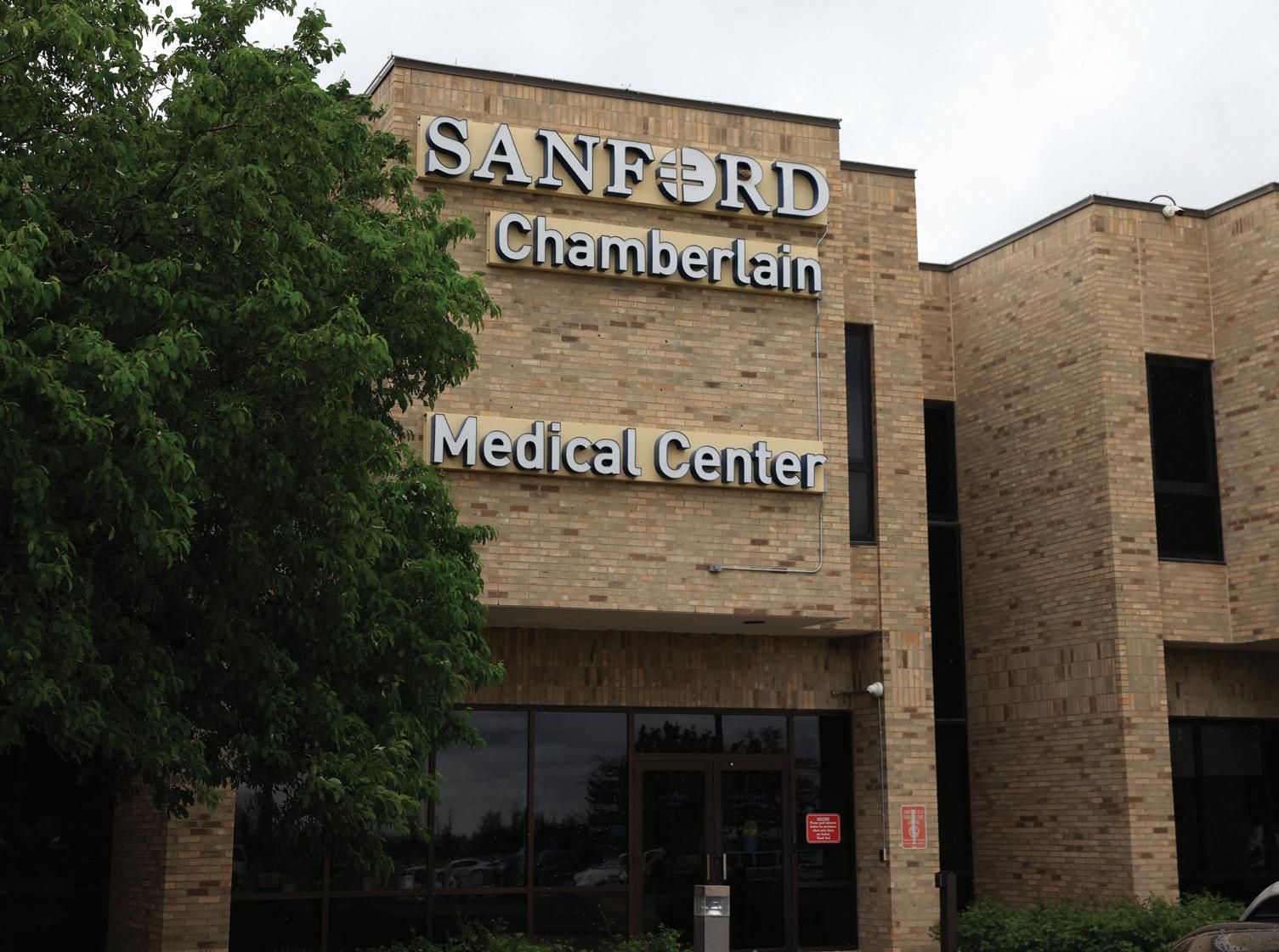
Sanford Chamberlain Medical Center has served its community for 118 years. The original sanitarium facility in the area opened its doors in July of 1907, offering 24 rooms at a cost of $38,000 to build on a 20-acre lot. It quickly expanded to support 125 patients in 1910 and provided electrical treatment, Swedish massages and steam rooms. In 1949, a new 28-bed Community Bailey Hospital was built at a cost of $228,000. The hospital expanded four times between 1949 and 1972 to include additions such as an obstetrics wing in 1953, a 26bed nursing home in 1956, a main lobby, administrative office and pediatrics in 1962 and intensive care units and coronary care units in 1972. n In 1976, plans were drawn up to build a new hospital. Funds were raised through Farmers Home Administration loans, the sale of hospital revenue bonds, local pledges and donations. In March of 1981, Mid-Dakota Hospital was built and opened, offering 54 beds at a total cost of $6 million. n In 2007, the Sioux Valley Health System, which later
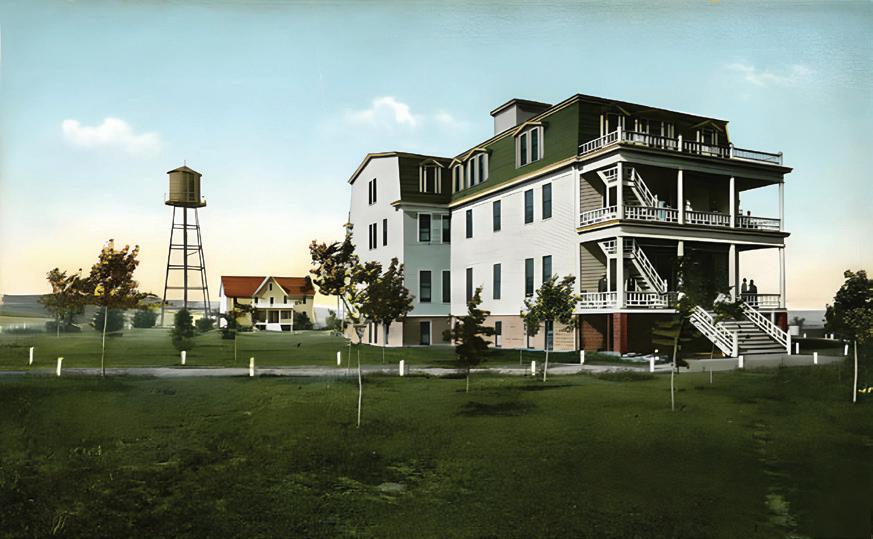
Sanford Chamberlain is dedicated to providing the best health care services to the residents of the tri-county area of Brule, Buffalo and Lyman counties through a holistic, integrated care continuum.
became Sanford Health, acquired Mid-Dakota Hospital, a key part of the organization’s expansion into rural South Dakota. The Sioux Valley Health System was renamed Sanford Health in 2007 after T. Denny Sanford’s $400 million gift to the organization. n As of 2024, Sanford Chamberlain Medical Center installed in-house 3D mammograms, a gold standard in breast cancer detection. In the past, patients in the Chamberlain region might have had to drive 70 miles or more for a 3D mammogram and now patients can receive their screenings close to home. n Sanford Chamberlain is dedicated to providing the best health care services to the residents of the tri-county area of Brule, Buffalo and Lyman counties through a holistic, integrated care continuum. Since the facility’s partnership with Sanford Health, it has expanded its outreach services, training programs and education resources to provide the people of the region with comprehensive, high-quality, accessible health care services.
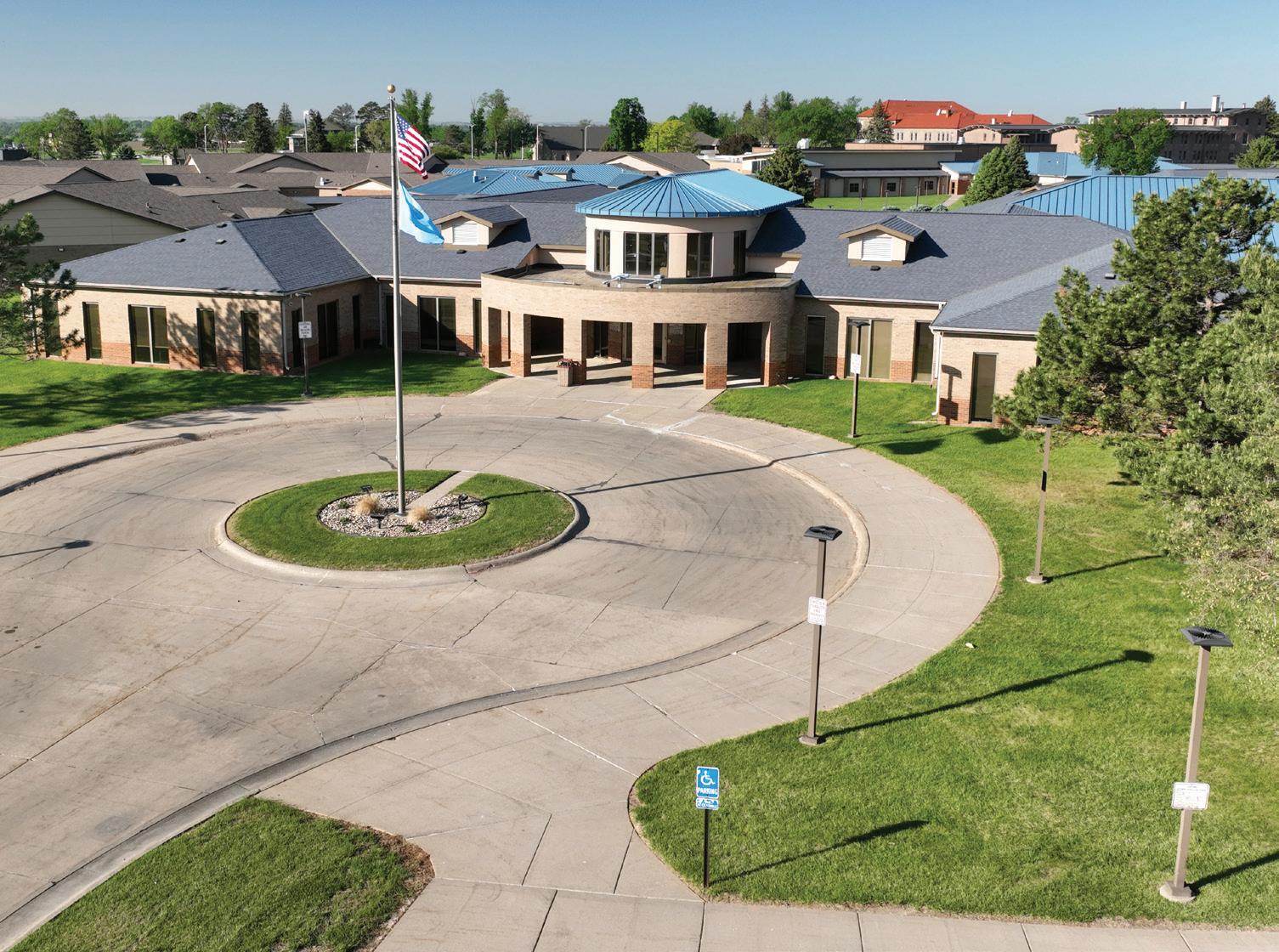
After taking office in June 1878, Dakota Territory Governor William Howard pursued the improvement of care for mentally ill patients, declaring that a local hospital be created. Two large unoccupied frame structures in Yankton were disassembled and transported three miles north of town and reconstructed, becoming Dakota’s first Hospital for the Insane, now the South Dakota Human Services Center. Governor Howard paid the expenses for this move himself ($2,286.85), trusting that the legislature would reimburse him. n On April 11, 1879, the hospital opened to patients. J.K. Rainey, MD, of Illinois was elected as its superintendent by a board of trustees. Nine men and eight women were transferred to the hospital from Minnesota and Nebraska. Dr. Rainey resigned within a month and Dr. S.D. McGlumphy of Nebraska was elected to replace him. n On April 8, 1882, a fire broke out in the hospital. The building was soon recognized as unsafe due to its combustibility and the legislature in 1881 authorized construction of a new, substantial hospital. Before its completion, a fire burned one of the buildings to the ground—causing the death of five patients. n Later, Dr. V. Sabiakin Ross, a new superintendent, recommended the hospital’s name be changed to Yankton State
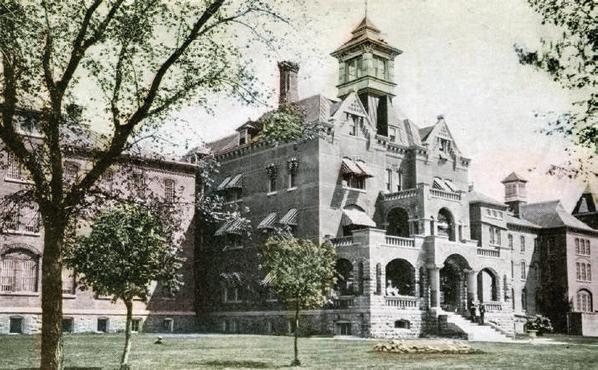
In 1878, Dakota Territory Governor William Howard pursued the improvement of care for mentally ill patients, declaring that a local hospital be created.
Hospital, which took place in 1918. In 1929, during its fiftieth anniversary, the hospital suffered the effects of the Great Depression, forcing it to operate with fewer economic resources than ever before. Over the next eight years, the situation became increasingly difficult, with an increasing number of admissions and a decreasing budget. Ironically, however, funds were somehow found to build a nine-hole golf course at the hospital in 1930. n By 1937, the hospital housed nearly 1,700 patients. Treatments for psychotic disorders using the drugs insulin and Metrazol proved successful, allowing a third of those treated to recover and be released. In the early 1950s, Yankton State Hospital discontinued the use of straightjackets and other antiquated methods of patient restraints. n In 1974, the organization’s name was changed to the South Dakota Human Services Center. In 1991, Governor George Mickelson ordered a study of the hospital, and the legislature in 1992 passed a bill allowing for new construction. On April 28, 1994, there was a dedication and groundbreaking ceremony for a new facility, named the Mickelson Center for the Neurosciences (MCN). Staff and patients moved into the new hospital in Oct. 1996. In 2013, 13 structures from the “Old Hospital” were demolished. n Today, the campus is referred to as the Human Services Center (HSC), serving as a learning campus for students of many disciplines. A goal of HSC is to destigmatize mental illness with education and outreach to the public, providing psychiatric and substance-use disorder treatment services for the entire state of South Dakota.
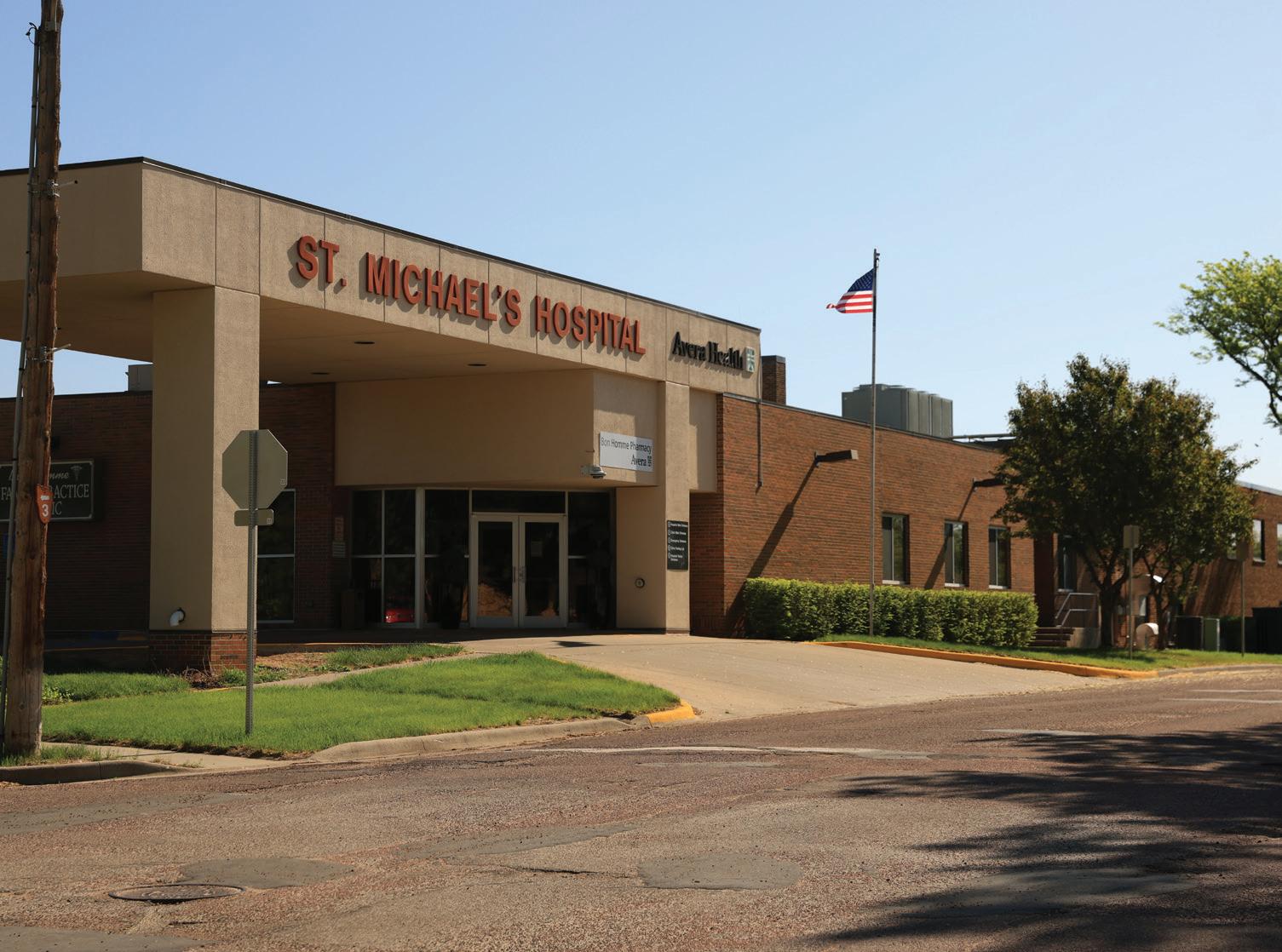
St. Michael’s was founded 75 years ago and has provided a rich legacy of faith-based care to Bon Homme County. In 1949, Dr. H. Klima first supported the growing need for health care in the area by treating patients in his home. Soon thereafter, sponsored and operated by the Catholic Benedictine Sisters, a new hospital, named St. Michael’s, was constructed. A formal opening and dedication ceremony was held on Feb. 26, 1950. The hospital was funded through the generosity of the local community, bond levy and additional donations, and the general construction cost was $74,003.50 plus plumbing and heating costs of $24,364.84. n The hospital housed Mother Jerome, Sister M. Luitgard, Sister M. Ursula and Sister M. Linus and the other Sisters who provided nursing care, along with Dr. David Brown. The 25-bed facility’s departments included surgery, obstetrics, laboratory, X-ray, central supply, sterilization, kitchen, dining rooms and a central heating plant. n A clinic was purchased in 1966 and the campus was extensively remodeled in 1968. The local Tyndall Clinic was sold by Dr. Foley to St. Michael’s Hospital in 1991 and was renamed Bon Homme Family Practice. It is now
Sponsored and operated by the Catholic Benedictine Sisters, a new hospital, St. Michael’s, was constructed in 1950.
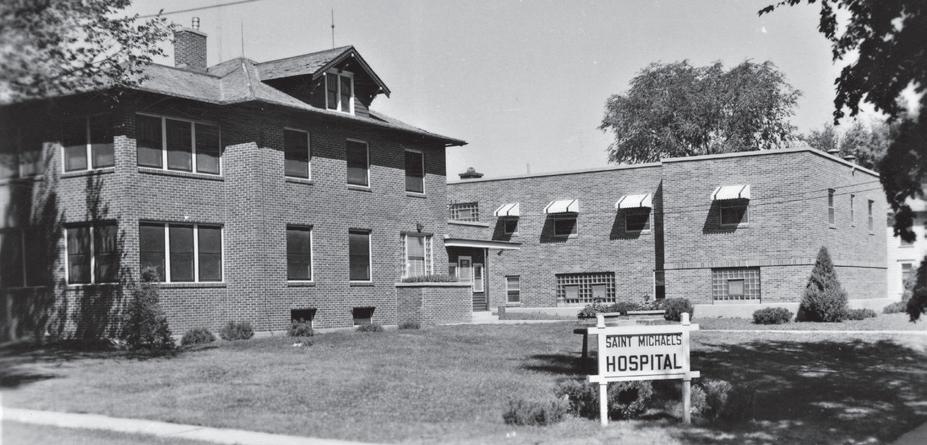
a certified rural health clinic. Since 1996, the Catholic identity of St. Michael’s transitioned to a relationship with the Sioux Falls Catholic Diocese. In 2001, the hospital was designated a critical access hospital and St. Michael’s also joined into a partnership with Avera Health through a management agreement. n In 2006, St. Michael’s nursing home ceased operation. In 2015, a new inpatient addition was added to the campus that includes a pharmacy, hospice, emergency room and chapel. n The facility provides family-practice care in two rural health clinics; 24/7 emergency services; inpatient, swing-bed and nursing facility swing-bed care; wellness center; cardiac rehab and an outpatient physical therapy department. Recent updates to the hospital’s radiology department include new equipment, a CT 64 slice, portable X-ray and in-room X-ray equipment. Its Planet Heart program provides screening for cardiovascular disease close to home for the region’s residents. The medical staff has two physicians and five advanced-practice providers who are grateful to provide health care close to home for those in need of support.

In the early 1900s, a Dr. Townsley built Wagner’s first hospital and named it after Dr. Pierce Pinard, its resident surgeon. n In the early 1940s, T.A. Duggan, MD, a graduate of Marquette University School of Medicine, received many offers to start a practice, but on invitation from Wagner’s Dr. Swett, he traveled there and decided to stay. At the time, there were only 13 physicians in Charles Mix County and only one in Douglas County. Duggan became the president of both county health boards and the second story of the Barkl Building on Main Street was converted to a hospital and named after him. The building was not patient-friendly—patients, well or sick, had to navigate its long, steep staircase. n When the local Indian Health Hospital’s physician never returned from a vacation, Dr. Duggan was left in charge of that hospital too—saddled with a lot of responsibility. n After World War II, Richard W. Honke, MD, joined Dr. Duggan’s practice “temporarily”—but he remained for 38 years. Dr. Honke advocated building a new hospital and, in 1947, enough money was raised to build one. The new facility, called the Wagner Community Memorial Hospital, opened with Dr. Honke, Dr. B.T. Brookman and 25 nurses on staff. n In the 1970s, Wagner Community Memorial Hospital Association Chair Vene Eitemiller proposed a completely new hospital— necessitated by the advent of Medicare, which required a more
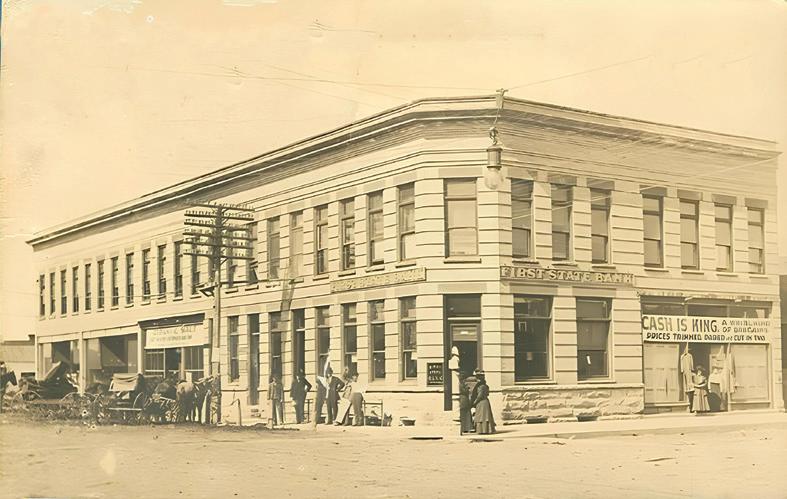
The hospital was an early implementor of innovative and lifesaving emergency room telemedicine services, resulting in better care and lower costs.
modern facility. From 1970 to 1972, Optometrist Morris Schuurmans headed a drive that raised $325,000 to pay one-third of the new hospital’s cost, augmented by a Hill-Burton grant and a loan. The building opened in 1976. To accommodate additional doctors, a new clinic was built in 1982, named in honor of Drs. Honke and Brookman, who served the community so well for so long. n In 2002, the hospital partnered with Avera Health and, in 2009, it opened a new primary-care clinic and physical therapy addition. In 2012, it completed a $4,100,000 inpatient-wing addition with 13 new inpatient rooms and renovations for outpatient services, a nurse’s station, palliative-care room, pharmacy, ER trauma room and ambulance garage. n The hospital was an early implementor of innovative and lifesaving emergency room telemedicine services, resulting in better care and lower costs. In 2021, Governor Kristi Noem honored WCMH for its response to the COVID-19 pandemic. n Today, WCMH offers outreach services and a behavioral health clinic—with a total employment of more than 135 dedicated staff.

Winner Regional Health (WRH) began humbly in 1913 as Trinity Mission Hospital and was sponsored by the Episcopal Church. Through the decades leading to Word War II, the hospital changed hands and names several times, transitioning from Winner General Hospital to Rosebud Community Hospital. It was only once the war was over that plans were made to expand, allowing for better care for the community. Though the name would remain Rosebud Community Hospital, plans for a new facility were in the works and its construction was finished in 1949. n The Baptist organization gained ownership of the hospital in 1961, and decided to build a new hospital in 1973 with grant money they had received. In 1991, the hospital board voted to expand to accommodate a physical therapy wing and more outreach exam rooms. The Winner Nursing Home was also purchased around this time. Three decades after they had taken on the mantle of the hospital, the Baptist church withdrew
Winner Regional Health has succeeded due to support from the community that surrounds it.
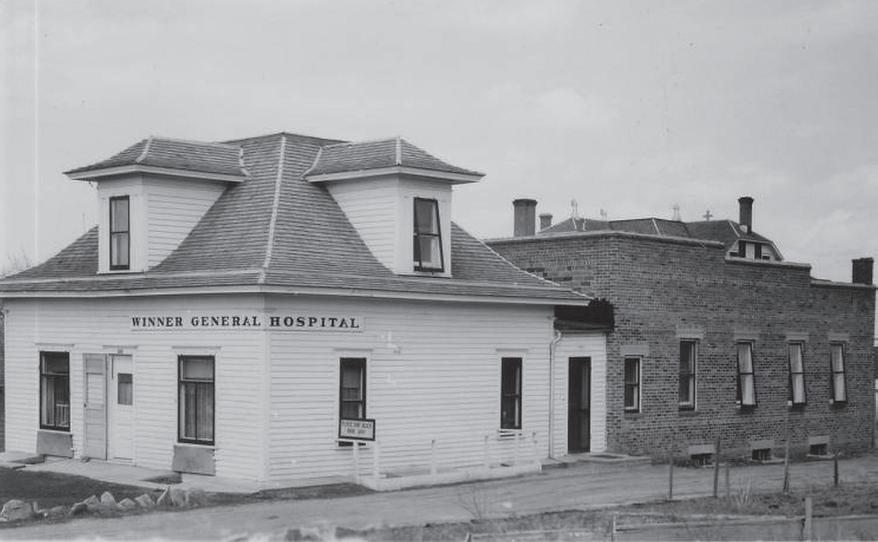
from its relationship with the hospital in 1993 and, at that time, members of the board became elected by the governing board of Winner. n Talk of a new nursing home attached to the hospital came to fruition in early 1996, and it was finished in 1998. The turn of the century came and went and, in 2011, Winner Regional Health merged with the town’s Family Practice Associates. When the time came to expand once more, it took two years for the construction to be completed. When the new facility was finished in 2019, not only did it have a new clinic, but it also boasted new emergency, radiology and surgery departments, which expanded the campus by an additional 35,000 square feet. n The current facility has 25 beds in the hospital, 60 beds in the nursing home, a rural health clinic and home health and community health services. n Winner Regional Health has been a steadfast beacon in the rural area, providing comprehensive health care close to home. WRH has succeeded due to support from the community that surrounds it. It is with that support that WRH hopes to continue to serve and aid the area for the next 75 years.
Avera Bormann Manor Parkston
Avera Brady Health and Rehab Mitchell
Avera Eureka Health Care Center Eureka
Avera Maryhouse Long-Term Care Pierre
Avera Mother Joseph Manor Retirement Community Aberdeen
Avera Oahe Manor Gettysburg
Avera Prince of Peace Sioux Falls
Avera Rosebud Country Care Center Gregory
Avera Sacred Heart Majestic Bluffs Yankton
Avera Sister James Care Center Yankton
Avera Wakonda Heritage Manor (and Parkview Apartments) Wakonda
Avera Weskota Manor Wessington Springs
Bethesda Home of Aberdeen Aberdeen
Bethel Lutheran Home Madison
Bethesda Home Inc. Webster
Bowdle Nursing Home Bowdle
Dow Rummel Village Sioux Falls
Good Samaritan Society - Canistota Canistota
Good Samaritan Society - Canton Canton
Good Samaritan Society - Corsica Corsica
Good Samaritan Society - De Smet De Smet
Good Samaritan Society - Howard Howard
Good Samaritan Society - Miller Miller
Good Samaritan Society - New Underwood New Underwood
Good Samaritan Society - Scotland Scotland
Good Samaritan Society - Sioux Falls Center Sioux Falls
Good Samaritan Society - Sioux Falls Village Sioux Falls
Good Samaritan Society - St. Martin Village Rapid City
Good Samaritan Society - Tyndall Tyndall
Good Samaritan Society - Wagner Wagner
Good Samaritan Society - Luther Manor Sioux Falls
Kadoka Nursing Home Kadoka
Medicine Wheel Village Eagle Butte
Michael J. Fitzmaurice South Dakota Veterans Home Hot Springs
Monument Health Sturgis Care Center Sturgis
Neighborhoods at Brookview Brookings
Oakview Terrace Nursing Home Freeman
Pioneer Memorial Nursing Home Viborg
Platte Care Center Avera Platte
Sanford Chamberlain Long Term Care Center Chamberlain
Sanford Vermillion Care Center Vermillion
Scotchman Living Center Philip
Seven Sisters Living Center Hot Springs
South Dakota Human Services Center Geriatric Program Yankton
Sunset Manor Avera Irene
Winner Regional Long Term Care Winner
In March 1995, the South Dakota Hospital Association (SDHA) board reported that the Council on Association Planning and Organization was in the process of updating SDHA’s longrange plan to incorporate SDHA’s new mission into long-term care, which included a recommendation to change the name of the association to reflect this new mission and support the continuing-education needs for nursing homes. SDHA’s members wanted an organization that would serve the many activities in which hospitals are involved. n The SDHA staff worked with affiliate groups to determine how long-term care and other staff could be incorporated into membership activities and it discussed a dues structure that was equitable and fair for all members. Frank Drew, SDHA’s CEO, met with the board and membership of the South Dakota Association of Homes and Services for the Aging (SDAHSA) to discuss the possibility of SDHA becoming the managing firm for SDAHSA. n The board voted to update the bylaws and assume the new name for the association effective on Jan. 1, 1996, as the South Dakota Association of Healthcare Organizations (SDAHO). The first year, SDAHO served 16 long-term care members. Today, that number has grown to 120, which includes nursing home, assisted living, home health, home care and hospice facilities. n In 2010, SDAHO became the state affiliate for LeadingAge, a national organization with a goal to be the trusted voice for aging in America and which now serves 5,400 members. n SDAHO post-acute care members provide quality, compassionate care to many individuals requiring short-term and long-term care needs every day in all the places they call home, including independent senior housing, assisted living communities, inhome care, hospice services, adult day services and skilled nursing facilities. The association has seen tremendous growth in the post-acute space due to the growing pressure of low reimbursement rates, intense regulatory changes and the need for education and training. n In 2016, SDAHO hired its first vice president of post-acute care to demonstrate its commitment and dedication to its members. SDAHO supports all of its members across the continuum of care to ensure seamless coordination of health care services and efficient transitions of care.
